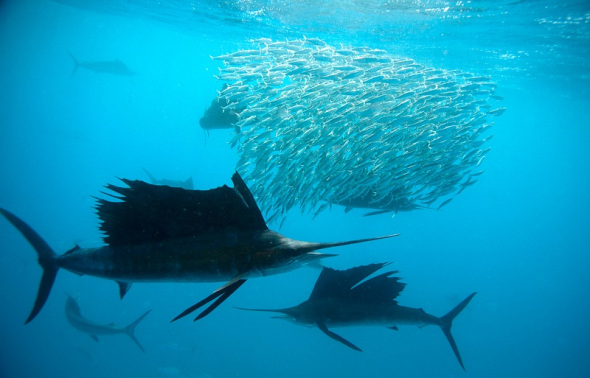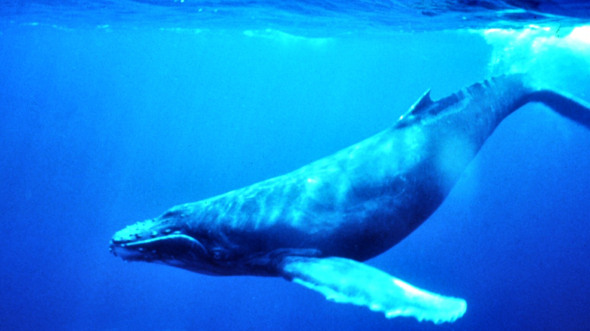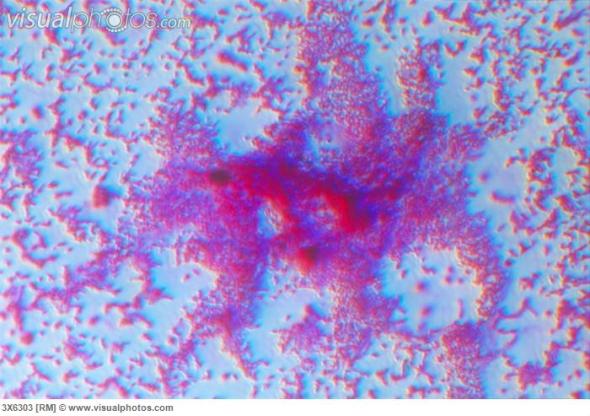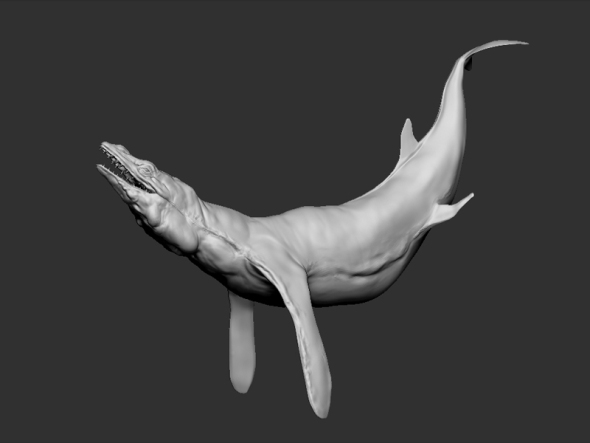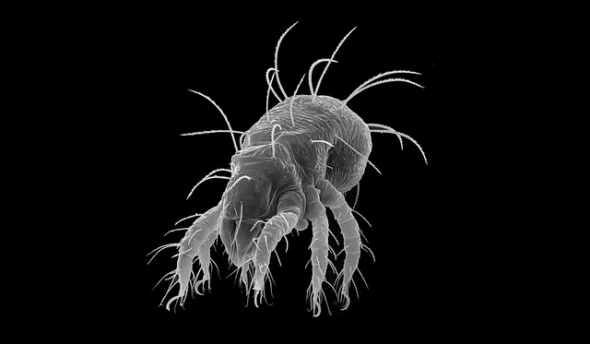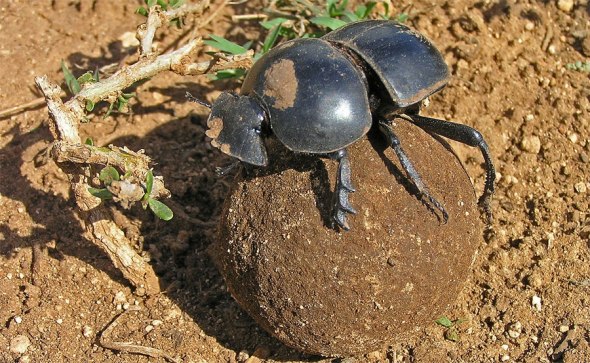Environmentalism Chapter 22 - Understating Poaching
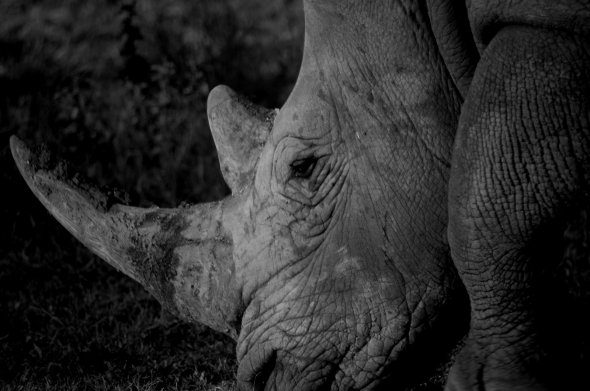
The poaching crisis in Africa and Asia is out of control and there seems to be no stopping these brutal and heavily armed sophisticated poachers as yet. Africa is again seeing the brunt of all poaching that includes both the Elephant and the Rhinoceros to Pangolin with Lion bones being used more than ever to produce fake Asian medicine bone wine.
The numbers of the one horned Rhinoceros and Asian Elephant and Pygmy Elephant (rare to poach) are incredibly low too which would indicate why there are such low poaching “incidents” however when a poaching incident occurs it’s now in large numbers taking out large numbers.
Arrests are climbing “to a certain degree” and within January 2013 there were many animal parts seizures internationally both in Thailand, Malaysia, Vietnam, Hong Kong and Singapore of Rhinoceros horn, Elephant ivory to other animal parts and living specimens too from snakes seized in Thailand of just over two thousand living snakes (February 2013 – Chinese new year) as of course it is the year of the “snake” as advertised all over Asia so in theory the snake will be brutalised to great lengths this year for fake potions, medicines and bush meat to satisfy Asian demand which is incredibly high with no signs of a decrease as yet in some animal parts.
However there has been a decrease in Rhinoceros horn on the market in Vietnam and China which I have explained further on within this news and media documentary.
There is no hiding the fact though that poaching is erratically out of control in Africa with last year’s poaching statistics standing at an eye watering six hundred and twenty two brutally slain Rhinoceros for counterfeit Asian pharmaceuticals for the month of December 19th 2012 as stated by the Department of Environmental Affairs minister Rt Hon Albi Modise and Rt Hon Minister Bomo Edna Molewa.
The total end poaching statistics for December end of 2012 stood at six hundred and sixty-eight poached Rhinoceros for South Africa shocking Africa and many conservationists around the globe. http://wessa.org.za/get-involved/rhino-initiative/current-rhino-poaching-stats.htm
The current number of Rhinoceros in South Africa alone that we can only go on from our previous correspondence with the Department of Environmental Affairs (Dec 2012) is totalled at 18,800 however this number in detailed correspondence in many email’s to us from Rt Hon Albi Modise states that number is from the “2010 census count” and is not the true figure for 2012-2013 with many propagandists placing the Rhinoceros populations in South Africa at a non-factual 22,000 – 22.200 which it completely untrue with no supporting evidence to back this evidence up.
Based on poaching statists and the population counts for 2010 then adding to that the “gestation” length of birth coupled with the female cow only giving birth to one Rhinoceros with gestation at 450 days then we have estimated the total number of Rhinoceros (which is not a factual precise number) at 15,300 and dropping rapidly now at two to three a day every day being poached. We also took into account the number of hunting permits that was handed to hunters (hunting within Africa) to hunt “Rhinoceros” standing at one every year.
15,300 is as we have calculated non-factual due to not being able to “fulfil a detailed census count” however based on reams of evidence this is the closest number based on scientific data, hunting permit records, gestation, and the number of poaching incidents to the “population” count of 2010 too that we have located which is now frighteningly worrying. Should there be no serious plan of action implemented on all sides and not just including the South African government then regrettably we will one of our famous big five.
Within India Assam, Kaziranga that holds roughly 2,200 Indian one horned Rhinoceros the poaching figures for December end 2012 was eighteen with many arrests and poachers shot dead on site. For February 2013 India sadly see’s nine one horned Rhinoceros poached dead to date for February 16th 2013 as communicated to us by the forestry and ecotourism ministry of Assam, India.
Elephant poaching statistics for the entire continent of Africa, and India including Indonesia and Malaysia are sketchy as the authorities are reluctant to release factual data with regards to the world’s largest land mammal that’s roamed the continents for millions of years.
What we have managed to locate is an estimated 25,000 elephants that were slaughtered in 2011 with most of these being hit in Kenya, Cameroon and Zimbabwe. For 2012 the “estimated figures are” that have yet to be released by all official governmental environmental agencies stands at 27,600 again that is increasing and very alarming and is estimated by many non-governmental organisations and non-profits. The actual true extent down to the nearest number will never be known for Africa or India due to the sheer size in continents and dead non-accounted for.
Within India the total number of Elephants slain is again sketchy as (The Convention on International Trade in Endangered Species of Wild Fauna and Flora does not want to place within the public domain information with regards to the poaching of these magnificent gentle giants to a certain level.
For 2012 in India that holds a very low population of Asian Elephants standing at 20,000 poaching statistics are roughly to date for February 16th 2013 sixty one poached, however in Odisha just outside of India the number of deaths stands at two hundred and ninety five. Odisha is situated here http://goo.gl/maps/Qrv60
The Asian Elephant is now at extremely decreased population levels concerning ourselves International Animal Rescue Foundation ©, World Wildlife Fund, The Convention on International Trade in Endangered Species of Wild Fauna and Flora, TRAFFIC the wildlife trade monitoring network, and The International Union for the Conservation of Nature plus many more conservation networks.
The critically endangered Pygmy Elephant is also in danger to, the Pygmy that “had” a population of 1,500 at the start of January 2013 now stands at 1,430 with most slaughtered not for “ivory” but because they are pests within and around the buffer zones of palm oil and pulp and paper plantations within mainly Malaysia and Indonesia.
Before January 2013 it was estimated that 11 critically endangered Pygmy Elephants had been deliberately slaughtered by poisons just to keep them away from the palm and paper plantation’s with another 8 found on January 26th 2013 and 5 more on February 4th 2013 there is unfortunately speculation that more may lay dead from poisoning just to satisfy greed from over obsessive consumerism outside of Asia for palm oil, wood and paper products.
The Asian Elephant is continuously slaughtered now in the most graphic and nauseas manners we’ve ever seen of such a splendid mammal, almost identical to that of the barbaric fur trade they are slaughtered by electrocution a new and torturous method of murder for ivory.
To kill an animal in such a disgraceful manner like this, knowing that it will burn alive from the inside out slowly and withering in agony then poachers and syndicates are dropping to all-time lows in side India and Africa which now must work together to end this sickening and repulsive bloody destruction of our critically endangered, endangered and vulnerable fauna and flora just for myths and counterfeit Asian pharmaceuticals within the Asian alternative medicine market.
Recent surveys have proved for 2012 that the Alternative Medicine Market or TCM/TIM is now using more African animal parts than ever before. Traditional Chinese Medicine and Traditional Indian Medicine that are both popular alternative medicine practices internationally using approximately 1,000 plant and 36 animal species to date based on recent 2012-13 TCM/TIM surveys conducted by International Animal Rescue Foundation ©, this is also including the tiger, rhinoceros, black bear, musk deer, and sea horse the tiger, rhinoceros, and sea horse are endangered or moving to endangerment.
As many know or don’t know Rhinoceros horn is used in fake Asian medicine to treat fever, convulsions, and delirium (Rhinoceros horn does not and never has cured any disease). Its popularity has been a major factor in the reduction of the rhinoceros population in Africa and Asia.
According to the World Wildlife Fund, only about 3,100 black Rhinoceros in Africa and 2,800 of all three Asian species (Sumatran, Javan, and Indian) in Asia are still survive. Black, Sumatran, and Javan Rhinoceros are designated as critically endangered on the 2007 World Conservation Union Red List of Threatened Species. The Javan numbers at 30 left in the Asian wild (2013)
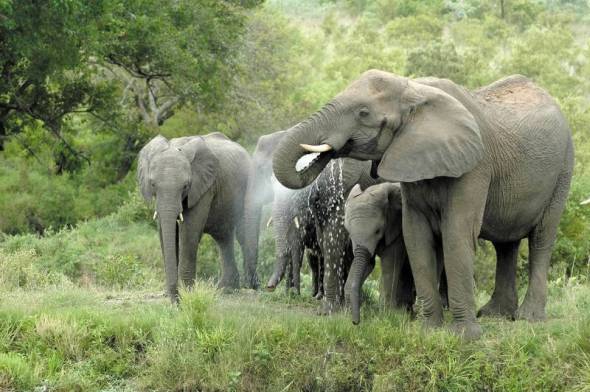
The Indian endangered one horn Rhinoceros, and the African White Rhinoceros variety are now nearing possible endangerment to extinction of which we could see the Indian species gone in 1-2 years maximum unless actions are taken to flow the demand with the White Rhinoceros banished in 3-4 years.
Despite protective laws, poaching continues still motivated by the Asian market for Rhinoceros horn. Captive-breeding is now the only hope for some species until protection can be provided in the wild sadly this is not the always the answer and breeding does not and has proven to be ineffective in increasing birth rates however does higher “mortality” to a considerable level, it regrettably is not the answer though.
Within India In an attempt to stay one step ahead of the local authorities, poachers in the Ganjam district of Odisha, India, are configuring power lines into homemade, electrocution tripwires, which they are using to kill elephants. 91 deaths that have occurred of the Asian Elephant have occurred from “some form of Electrocution” it’s the most silent way and easiest way in order to take an Elephant down so Assam Anti-Poaching teams have quoted to us (2013) which they are now launching in-depth investigations into the number of deaths so far this year.
Wildlife officers have suggested several remedies, including building taller, more insulated power lines, to help ensure the elephants’ safety. Others suggest cutting off power to areas with large elephant populations during strategic migratory periods. With poaching “known” though in these areas energy officers and anti-poaching rangers are in bitter battles on “who is to blame” (the poacher or the energy officials) “I think we all know who is to blame.
Zimbabwe holds a rough total of 700 Rhinoceros with 19 lost in 2011 from illegal poaching with great fears that the current poaching epidemic has now spread in to neighbouring states concerning many conservationists. Reported on 14th January 2013 Zimbabwe saw a copious hit on its Rhinoceros population on New Year’s Day with a total of four white Rhinoceros slaughtered with a remaining eight Rhinoceros horns recovered and spent ammunition cartridges. 2010 saw 23 Rhinoceros poached. Poaching is now considered rife in Zimbabwe’s game reserves, fuelled by cross-border syndicates from Mozambique, Zambia and South Africa.
It was stated in news feeds with regards to the four Rhinoceros that had been slaughtered in Zimbabwe that “mounting speculation that there is more than meets the eye in the suspected ‘poaching’ of the Rhinoceros on the Thetford Estate, which belongs to controversial businessman and known ZANU PF crony Mr John Bredenkamp”.
At the beginning of January it was reported in Kenya one of the worst nations with regards to out of control Elephant poaching that a family of 12 elephants were the most recent victims of a new epidemic of poaching sweeping Kenya, and Africa. It was the worst poaching hit in decades.
A gang stuck the Tsavo National Park in Kenya, one of the largest elephant sanctuaries in the world, slaughtering the animals, hacking off their tusks. The incident is the worst recorded ivory poaching incident in the history of the country.
According to the Kenyan Wildlife Service and International Fund for Animal Welfare, the trade in ivory, fuelled from Asian countries such as Japan and the rapidly prospering China, has increased to epidemic levels over the past few years.
Last year almost 34 tonnes of ivory was seized across East Africa, with 34 tons seized in 2012 with nearly 90% of all ivory seized had come from or had been transported through East Africa, and The number of animals that died for their tusks doubled in less than two years to approximately 360 in 2012.
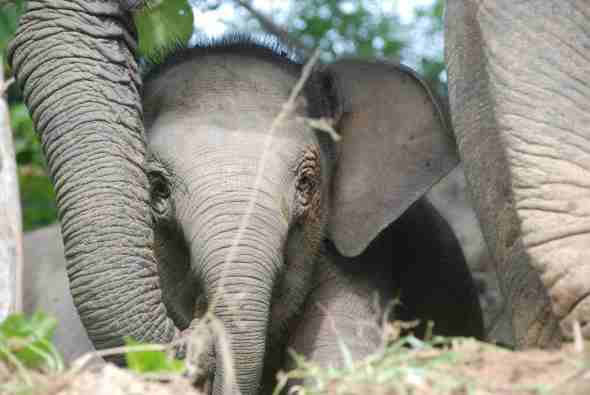
In 2011 40 poachers where shot dead on site in Kenya by rangers, all of the poacher had heavy military or “hunting rifles” which is now fuelling speculation again that there is a hunting fraternity in Africa that is supplying these rifles, who these individuals are though are yet to be announced however we ourselves are investigating too with Africa being one of the worst nations in the world with regards to illegal poaching rising (and it’s going to keep rising unless more governments act and place a complete moratorium on hunting which we International Animal Rescue Foundation © are fighting in silence.
We know that hunters, rangers, police, to even the specialist Anti-Poaching Units are involved to “a degree” not all but some individuals are which has been proven time again. These members of the public and wildlife protection force are supposedly trusted individuals however with recent arrests in 2011 and 2012 it’s not looking good and is also effecting funding and “whom” to place trust in.
Some Charities are calling for a return to a full ban on the sale of ivory, and for authorities to address the involvement of international criminal gangs being involved in the trade.
Greater education for consumers might also help to stem demand, according to campaign group Dirty Ivory, a survey in China showed that almost 70% of the public thought ivory did not come from dead elephants, but that it fell out naturally, like teeth, by simply searching online one can view that ivory is freely available to purchase. Please view the links of which took our investigators on 3.6 minutes to search for and is widely available on the internet illegally.
http://www.npm.gov.tw/exh98/carvings/ch_05.html
http://duocminhanh.com.vn/am140/Vong-tay-nga-voi.html
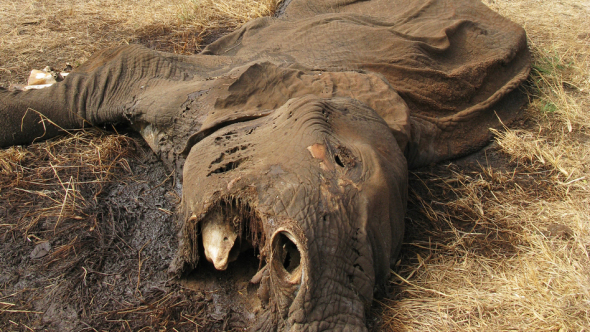
Elephant slaughtered for it’s tusks in Tanzania - Just to make ivory (What a waste of such a precious life)
The South African government have again launched a new war on the poachers however it’s not working and what it appears to us is that “anyone and everyone” is being arrested apart from the perpetrators themselves.
Within SABC news column the Department of Environment and Affairs minister for South Africa quipped;
Environmental Affairs Minister Edna Molewa says she’s confident that Sanparks may be on the verge of a turnaround with regard to the fight against rhino poaching.
Molewa says they now had a stronger team and a stronger force to help in the fight against rhino poaching. “Indeed there are people who have helped us to get new equipment which are able to help us deter those poachers from very far. There has been a contribution of helicopters by private sector and ordinary people.
“We now have a stronger team and a stronger force not just from Sanparks but from South Africans and the media” says Molewa. The Minister also thanked Lead SA, who she says has been at the fore front of the campaign.
Meanwhile, two more rhinos have been poached. The Hawks say the animals were killed and dehorned at Bulhoek farm near Brits in the North West, three or four days ago from the 10th February 2013. The rhino task team in the province is investigating.
Over 80 rhinos have been killed in South Africa since the beginning of the year (Jan 2012). Kruger National Park remains the hardest hit with 61 rhinos lost, to presumed foreign poachers. Kruger National Park is the worst hit park of them all.
We do not view this as very promising and with the latest shoot-out last Saturday and Sunday (Feb 2012) http://stfrancischronicle.com/2013/02/11/three-suspected-rhino-poachers-killed-in-shootout-with-rangers/ and with demand shooting through the roof then the war needs to be “moved into Asia” and not just in South Africa.
The Rhinoceros species could be preserved more if the government of South Africa simply;
- Place an immediate moratorium on hunting of which they quoted to us that this is not possible as hunting brings in more funding thus preserving conservation, plus in further correspondence “it would have to be proven that species in Africa where under threat”
- Cease the movements/sales of all Rhinoceros in South Africa to nations where Vietnamese hunting permits can still be used
- Improves tourism which brings in a considerable amount of income for conservation relief
- Quicker and harsher sentences for poachers and corrupt individuals
- Improving communications
- Brining all Anti-Poaching Units under governmental control and “funding them”
- Introducing a strategic Anti-Poaching command base with landing pads and runways
- Rooting out corruption with the use of polygraph technology invented in 1921
- Securing the main border channels
- More stringent checks on Asian construction workers
- Ceasing the sales of taxidermy to Asia which would impact on demand
- Tackling the air and freight ports
- Funding more security and newer high grade technology for reserves and farms
- Lowering tuition fees for those wanting to train as conservationists and/or ranger’s within South Africa
- Funding more ranger schools
- Tackling crime in “shanty town districts where poaching gangs are known by ourselves to hide”
- Education and awareness of tribal gangs and community relations
- Investigations into where donations are going to that are being ploughed in parks
- Release the R1 million that SANparks asked for in 2012 for equipment and ranger training (and purchase more equipment) International Animal Rescue Foundation © gave $10,000 with regards to the 2012 video advertisement for funds for this vital equipment and training however it’s being held back to hand to “anyone that can shop a poacher OR name a syndicate”.
- Setting a task force up to locate syndicates over the border
The above are just a handful of many tasks that the government can work towards to help in preserving our endangered fauna and flora, however they refuse and continue to support the likes of the hunting trade that is fronting the poaching trade and as much as many people “may disagree” the evidence is more than evident.
M99 (Entorphine) is still being used to take the Rhinoceros down, the Rhinoceros horn treatment is still not funded by the government, freight and airports are left untouched of which the DEA know damn well this is the main exit point for ivory and horn.
Non-profit Organisations, to non-governmental organisations and opportunists are working as rapidly and to the best of their ability to preserve and conserve however “funding is needed” and whilst funding is being pushed in to over 130+ African zoo’s where is the funding for the Rhinoceros protection? It’s slowly trickling in from the humble public in small quantities that’s going astray.
Pelham Jones makes very dull point here http://www.globalpost.com/dispatch/news/regions/africa/south-africa/120226/rhino-war-can-hunting-save-the-rhino of which he truly believes that “hunting animals is preserving them” however this is totally untrue, and should one look at the PHASA terms and conditions and their “voluntary donations” scheme then one will understand that “tourism brings in more money than that of hunting” as more people travel to AFRICA to shoot with a camera than they do with a rifle.
Pelham Jones quotes “that when hunters come for trophy hunting, they kill old, non-breeding animals. “We have no problem with this,” he said. “Unlike with humans, there are no retirement villages for animals.” (Utter nonsense) excuse me Mr Jones can you explain to me why there are breeding farms located all over South Africa?
Yes I understand that one then has to move new stock in but how is this actually preserving our wildlife? It’s exactly the same as purchasing a new car, you trade the old one in for half the price if that, and then you purchase a new model. In this case it is the animal, so next question is exactly how much of the so called remaining pocket funds goes back into conservation? Oh yes very little, and it’s proven time again.
Why is there breeding farms located here http://goo.gl/maps/qnSX5 that have links (and strong ones as we have checked to canned hunters?) I suppose that these breeding farm’s “coincidentally next to Wild Cats World and Daniels Cheetah Project don’t purchase new young then sell the surplus to canned hunters or to zoos too? Zoo’s in the Netherlands that coincidentally purchase animals which then travel BACK to Africa and are then shot dead.
(To those that are reading we were threatened by Danish mafia (apparently) in 2 emails if we carried on harassing this area of interest that we are disgusted and sickened about.
What tourism can bring for YOU but most importantly CONSERVING FAUNA AND FLORA
Tourism is regarded as a modern-day engine of growth and is one of the largest industries globally. In 2012, G20 heads of state recognised tourism as a driver of growth and development, as well as a sector that has the potential to spur global economic recovery. Just in 2009-2010 in Uganda (not related to this tourism shot up by 300%) That’s in a war torn zone.
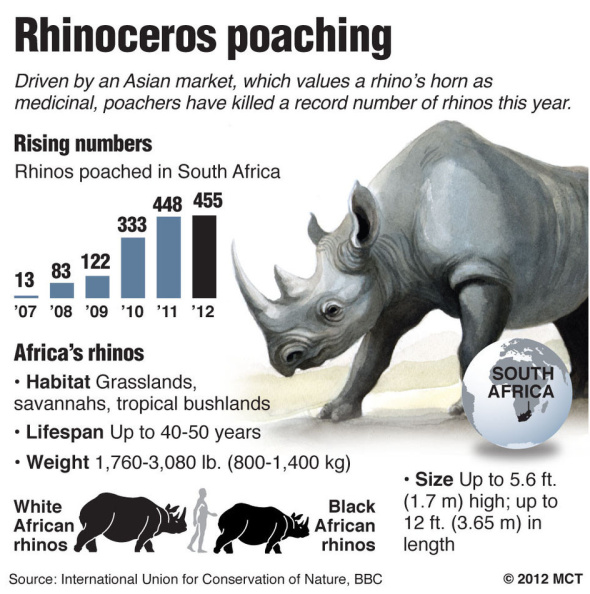 South Africa has earmarked tourism as a key sector with excellent potential for growth: the government has increased tourism’s contribution, both direct and indirectly, to the economy from the 2009 baseline of R189, 4-billion (7.9% of GDP) to R499-billion by 2020 (National Department of Tourism, 2012). Tourism supports one in every 12 jobs in South Africa and heavily supports conservation (but we need more)
South Africa has earmarked tourism as a key sector with excellent potential for growth: the government has increased tourism’s contribution, both direct and indirectly, to the economy from the 2009 baseline of R189, 4-billion (7.9% of GDP) to R499-billion by 2020 (National Department of Tourism, 2012). Tourism supports one in every 12 jobs in South Africa and heavily supports conservation (but we need more)
South Africa’s spectacular scenery, friendly people, world-class infrastructure make it one of the most desired destinations in the world. The sector was given a massive boost by the successful hosting of the World Cup in 2010, when the country received a record-breaking 8.1-million foreign visitors. Despite tough global economic conditions, tourism grew in 2011, with 8.3-million international tourists. The regional African tourist market is South Africa’s important tourist markets, contributing more than 73% of total tourist arrivals and more than R50-billion in revenue in 2011.
Domestic tourism is also an important source of revenue and employment, contributing 52% of total tourism consumption. Cruise and rural tourism are focusing within growth areas.
A labour-intensive sector, with a supply chain that links across sectors, tourism is a priority sector in the government’s planning and policy frameworks – it is one of the six job drivers of the New Growth Path framework.
The National Tourism Sector Strategy, launched in 2011, aims to ensure the sector realises its full potential in terms of job creation, social inclusion, services exports and foreign exchange earnings, fostering a better understanding between peoples and cultures, and green transformation, and conservation.
South Africa is a popular destination for business travellers, who spend on average three times more than their leisure counterparts while crossing over significantly into leisure travel themselves, through tours before or after their business activities and through return trips in subsequent years.
With its first-world infrastructure, balmy climate and breath-taking scenery – not to mention acres of golf courses – South Africa is an ideal location for international congresses and conventions.
The country has well over 1 000 world-class conference and exhibition venues, ranging from intimate bush hideaways to large-scale, hi-tech convention centres. All of these offer a wealth of leisure activities, side-tours and events: from walking with elephants to first-hand experiences of African culture to luxury shopping and relaxation.
The country has set up the National Conventions Bureau to help it secure more international conferences, an excellent source of foreign tourists and revenue. The conference industry is in 37th place in the International Congress and Convention Association’s top-100 list of leading destinations in the world, released in 2012.
South Africa is home to diverse cultures, ranging from the Zulus who resisted European conquest to the nomadic San of the Karoo desert. Each culture has evolved its own distinctive art forms, music and traditional rituals, while the descendants of colonial settlers have evolved variations of their European roots.
South Africa’s history has been one of confrontation, but is now also known as one of reconciliation. World-class sites have been established to commemorate the country’s past and celebrate its new-found unity, while the number and quality of cultural villages, community and township tours has grown dramatically.
World Heritage
South Africa is home to eight World Heritage sites, places of “outstanding value to humanity”.
Four of South Africa’s eight Unesco World Heritage sites are cultural sites, while one is a mixed cultural/natural site. These are: Robben Island, the Cradle of Humankind, the Mapungubwe Cultural Landscape, the Richtersveld Cultural and Botanical Landscape, and the uKhahlamba Drakensberg Park.
South Africa’s diverse climates range from tropical in the south-east to desert in the central region. The scenery runs the gamut from spectacular mountain ranges to vast grass plains, from coastline to meandering rivers to desert dunes. The country’s wildlife is far more varied than just the celebrated “Big Five”, and is supported by an extraordinary biological diversity.
Three of South Africa’s eight Unesco World Heritage sites are natural sites, while one is a mixed cultural/natural site. These are the Cape Floral Region, the iSimangaliso Wetland Park, the Vredefort Dome, and the uKhahlamba Drakensberg Park.
South Africa is leading the way in one of the boldest cross-border initiatives currently unfolding in southern Africa, the development of transfrontier parks.
There are 19 national parks, including the world-famous 20 000km2 Kruger National Park. The country’s terrestrial protected areas stand at around 6.9%, according to a World Bank report published in 2012. Marine protected areas make up around 11%. The country’s private game lodges range in standard from middle to very upmarket, with ultra-luxury lodges catering almost exclusively to foreign tourists.
Being at the southern tip of a large continent, South Africa offers 3 000 kilometres of coastline along with breath-taking mountains – often side by side. The country’s diverse terrain, together with a climate suited to outdoor activities, make it an ideal hunting ground for adrenaline seekers.
South Africa offers world-class climbing, surfing, diving, hiking, horseback safaris, mountain biking, river rafting – and just about any other extreme activity you can name, all supported by dedicated operators.
World-class venues and supporting infrastructure, top international events, and South Africans’ passion for sport combine to make the country a huge draw card for sports fans.
More than 10% of foreign tourists come to South Africa to watch or participate in sport events, with spectators accounting for 60% to 80% of these arrivals.
There are numerous world-class sporting events on South Africa’s calendar every year, such as the Cape Argus Cycle Race and the 89km Comrades marathon. The country has proved that it can successfully pull off the really big events, which have included the 1995 Rugby World Cup, the 2003 Cricket World Cup, and the biggest of them all, the 2010 Fifa World Cup.
PLEASE VISIT SOUTH AFRICA – SHOOT WITH YOUR CAMERA – PLEASE GIVE TO CONSERVATION
In 2012 we made a direct demand to President Jacob Zuma that should he not clean the poaching trade up then we would launch imminent and immediate boycotts of the South African tourism and trade industry. Please view the links
http://www.waterconservation.co.za/2012/01/20/threat-of-boycott-to-save-the-rhino/
http://mg.co.za/article/2012-01-13-rhino-lovers-issue-ultimatum
http://vnmade.com/?p=15092
It was a wrong and uneducated move by me the founder/CEO of the International Animal Rescue Foundation of which I didn’t see the full potential of what tourism could bring into South Africa which has masses of “potential if the tourism trade acts with us and others”.
Tourism is big business in South Africa and in the European Union, Africa is plastered on every tourism outlet everywhere one travels, by working with the tourism industry, showing the trade that walks through the door of what is happening in the nation they wish to visit then “more sums of monetary gain” can be achieved and pushed directly into conservation to protect our Rhinoceros and Elephant, Lions to Pangolins and more.
International Animal Rescue Foundation © has been working intensively to help preserve the famous big five in Africa along with many other conservationists and individuals, we placed conservation teams on the ground with our own European Anti-Poaching Units that are kept low key as we believe that corruption in Africa involving the animal parts trade doesn’t just involve government, police, rangers, to farmers.
As explained we also believe that there are individuals working within Anti-Poaching Units that are tipping poaching gangs off with planned movements of Anti-Poaching personnel. We refuse to allow any African Anti-Poaching teams or Africans to work with us not because of discrimination but because we are highly concerned at the corruption of instate individuals and we do not wish to take chances. This we feel very unfair as it could introduce good working relations, and rapport.
There are also other major factors that are not being taken into consideration with regards to poaching and every time we mention these important factors to government and smaller non-profits and non-governmental agencies they are simply brushed aside. We are not going to allow those problems to be simply hammered down because of fear of upsetting people in other nations, or their own governments.
We explained to our team back in 2009 that we need to look at poaching in Africa within a more (broader setting), who else could be involved? Why have the numbers of poached Rhinoceros drastically increased from 7 in 2000, to 122 in 2009 than 2011 seeing just over 448 poached?
Elephant poaching statistics went skyrocketing from 2005-2006 being the start of the main Elephant poaching frenzy then decreasing in 2007 to a maximum number of 15,000 with 2008 being the lowest ever year recorded in Africa alone for Elephant poaching with numbers of poached Elephants under 10,000.
Then 2009 see’s under 37,000 thousand poached Elephants with the year 2010 practically shooting of the graphs with poaching statistics standing at just under 58,000 poached dead, 2011 and 2012 see’s the largest now moving into hundreds of thousands standing at 25,000+ with formal records still to come back to the IUCN and CITES.
The statistics of “poaching incidents” for both Rhinoceros and Elephants are almost identical, and yes we are fully aware that the Rhinoceros hasn’t been poached into the thousands as with the Elephant species but what we are trying to explain is the “years of increasing hits” on wildlife.
Let’s pull some facts and questions here and lay them on the table;
- Between the years of 2002 and 2009 the poaching “hits or incidents” and not (numbers of poached) on both the Rhinoceros and the Elephant have increased at the same time moving from a steady low then high to decreased poaching rates then sliding of the scale. Why did Africa see these rates at such fluctuating levels?
- There are more poaching incidents next to “war torn” or “poverty hit nations” (we know the KNP (Kruger National Park) holds the largest number of Rhinoceros and we are also aware that Kruger and Mozambique meet that are not secure or manned properly at the border posts with some poachers traveling through the Giriyondo gate via the getaway or just moving animal parts discreetly through the frontiers.
- There are more poaching incidents of Rhinoceros in the Kruger “which people believe is (only) because there is more numbers of Rhinoceros in the Kruger however this side of Africa (KNP) also borders extremely poor nations” where civil unrest and refugee camps are becoming increasingly larger.
- There are more Mozambique’s, Somalia’s, and Ethiopians arrested in “poaching incidents” than there are Asian poaching gangs with regards to the Rhinoceros and Elephant.
- Moving back to the poaching of Elephants the numbers stand at this in (percentage) for 2011. 1) The percentage of poached Elephants for 2011 in central Africa stood at 90% 2) The percentage of poached Elephants for 2011 in East Africa stood at 59% 3) The percentage of poached Elephants for 2011 in southern Africa stood at 51% 4) The percentage of poached Elephants for 2011 in Western Africa stood at 84%
ONLY YOU AND WE CAN STOP THIS - STOP IGNORING THE DAMAGE - START TAKING ACTION - WE NEED MORE ACTION IN THE FIELDS NOW - WE ARE LOSING THIS BLOODY WAR - PLEASE HELP US - PLEASE HELP THE AFRICAN BIODIVERSITY NOW!.
Identifying other areas of interest I have listed below.
- There has been 16 years of civil war in Mozambique that ended in 1992. Stated in 1975 after independence from Portugal it displaced millions, ruined homes and infrastructure, agriculture, and living, pushing people into poverty and crime with most people living on $1 a day to support themselves and family. Although in Mozambique the Civil war has since ended (to a degree) the country still sees for 2012 based on UNHCR statistics some 145,000 refugees, 245,000 asylum seekers, 55,000 internally displaced persons, with only “four thousand returnees”. The country also has a 20%+ unemployment rate.
- In 2002 a severe drought hit many central and southern parts of the Mozambique, including previously flood-stricken areas. Poverty remained widespread, with more than 50% of Mozambicans living on less than $1 a day. At this same time of year poaching increased of the Rhinoceros from 6 in 2001 to 25 in 2002 than 22 in 2003 with a decrease in poaching between the years of 2004-2007 with only 2006 seeing a fluctuation, the years of 2002 to 2005 is a typical “drought session” is this an indicating factor that we should all be looking for in the future to prepare oneself for possible poaching “incidents?
- In 2012 it was reported that Individuals in mixed-migration movements towards South Africa often use camps in Malawi, Mozambique and Zimbabwe as temporary stopovers, putting a strain on scarce humanitarian resources and creating tensions locally. This has led many governments in the region to restrict access to the asylum system by requiring travel documents at entry points and applying the “first safe country” principle, whereby entry is refused to asylum-seekers who have travelled through a safe country prior to their arrival.
- 2012 The UNHCR has now called on the Mozambique government to STOP asylum seekers from being deported of which will see more pressure placed on refugee camps, more crime, poverty and anti-social unrest. (Could this be another reason why poaching is increasing as of asylum into a poor nation?) Why would anyone decide on seeking asylum in Mozambique in such (small numbers that are not even totalling that of what Britain see’s and being under 200,000)
- In 1993 President Robert Mugabe born 21 February 1924 threatened to expel white landowners who objected to the 1992 Land Acquisition Act permitting the government to force them to give up their land for redistribution to black Zimbabweans.
- In 2000 President Robert Mugabe begins ordering white farmers to give up their land. Some 4,000 farmers lose their land and Zimbabwe’s agricultural output decreases sharply.
- In 2004 it accusations by Human Rights Watch state that starvation is being used as a tool for the regime’s support among Zimbabweans. Farm output has decreased sharply since Mugabe began his policy of land grabs.
- 4,500 white commercial farmers to surrender their lands without compensation to black settlers that had NO agricultural or botanical experience at all plunging the economy into doom with hypermarket shelves left bare and empty.
- In 2000 Up to 13 million people, close to half of them in Zimbabwe, starved over the six months as a result of drought and political mismanagement across six countries in the region. Between 2000 and 2008 203 Rhinoceros where poached (there is now 700 Rhinoceros left in Zimbabwe alone) Was the land reform partly responsible for poaching fluctuations too in South Africa coupled with droughts of 2000 in Mozambique?
- From 1999-2000 Zimbabweans unemployment rate stood at 52% and as drought took hold due to rapid climate change and lack of agricultural consumer goods as of inexperienced agriculturists this had a knock on effect with increased unemployment increasing, from 2001 unemployment shot up to 57% from 2005 unemployment stood at 73.4% then rising yet again in 2007 at a staggering 88% unemployed with 2009 at 95% for the years of 2011 to 2012 the unemployment rate is of the scale with most of those unemployed between the ages of 18-35 years of age. (Coincidentally those that are arrested for poaching are also in between this age group and are from Mozambique, or Zimbabwe. Between the years of 2007-2011 poaching skyrocketed (could this be another reason why poaching took off coupled with the animal parts trade in Traditional Chinese Medicine too?
- Zimbabwe has the “highest rate” of unemployment in the whole of Africa standing at 95% with Mozambique at 21% (are more poachers deriving from Zimbabwe where Asian syndicate gangs are taking advantage?) Namibia stands at 51.2% unemployed, Kenya and Swaziland stands at exactly 40% unemployed, South Africa 24.9% Ghana 11%
- As reported on May 8th 2012 Angola entered its pre-electoral phase, with civil unrest very likely to rise effecting Botswana although Botswana is a relatively peaceful nation compared to others it’s not of a major concern to ourselves with regards to poachers slipping over the borders or possible syndicates seeing these areas as poaching havens to pay poachers to do their dirty work whilst they stay relatively safe in neighbouring nations bordering South Africa.
South Africa borders four other major African nations as explained above, Namibia, Zimbabwe, Mozambique and Botswana with Swaziland closest to Mozambique and Lesotho 30 degrees east. Leaving Botswana, Swaziland, Lesotho, and Namibia out of the equation the top ranking nations that have the most problems with petty crime, unemployment, social dysfunction, organised crime, and drought to very low income then these nations can be and are from what we are seeing being targeted by highly sophisticated Asian syndicate gangs.
The opportunist is also targeting our wildlife within South Africa and who can blame them when you see figures such as this above from mainly Mozambique and Zimbabwe regarding unemployment, civil unrest and drought.
The same more or less is on-going in Indonesia and Malaysia with regards to illegal logging of which poor families that are none the wiser are completely oblivious to what damage they are causing to our sensitive biodiversity.
Bringing these two together with the poor and the sophisticated heavily armed and trained poachers could this be a reason why the Rhinoceros and the Elephant is now being plunged into nearing extinction at such a rapid rate? And are the syndicates residing in Zimbabwe where they know there basically untouchable thus sending in trained poachers to take down South African wildlife. We all know that from time to time the poor man will take his fair share, however the poor can easily be manipulated and bribed and $1000 sounds a lot better than $1 A DAY!
Shoot out 26th November 2012 - with the other two poachers moving back across the border into Mozambique http://www.timeslive.co.za/scitech/2012/11/26/two-men-arrested-for-rhino-poaching
On the 7 March 2012 more Mozambicans were arrested for Rhinoceros poaching - Mozambican nationals, Timothy Ngcobe, 44, David Lazerus, 29, Carlito Masundu, 25, Santos Smit, 28, Chicco Khoza, 35, Sam Mashaba, 36, and Sello Zitha, 35 were later arrested over the weekend. - http://www.sanews.gov.za/south-africa/more-rhino-poachers-be-arrested-says-kruger
9th February 2013 – Shootout erupts with remaining poachers fleeing back over the border into Mozambique - http://blog.getaway.co.za/travel-news/suspected-poachers-killed-arrested-kruger/
24th January 2013 – The DEA reports on more arrests with “poachers fleeing over the border into Mozambique” feeling over the border http://www.politicsweb.co.za/politicsweb/view/politicsweb/en/page71654?oid=352926&sn=Detail&pid=71654
It was stated on the 6th March 2011 by the Department of Environmental Affairs
“South Africa and Mozambique have signed a historic agreement to drop fences between the two countries for biodiversity reasons in the Greater Limpopo Trans-frontier Park. Evidently, this has been exploited by criminal elements.
Working together with her Mozambican counterpart, Minister Molewa will address this concern. This bilateral with Mozambique will address among others how we should jointly strengthen and upgrade the security situation to arrest the scourge of rhino poaching. We also would want to share with our Mozambican counterparts our initiatives that allow collaboration between various security agencies to deal with poaching as a priority crime”. http://www.environment.gov.za/?q=content/rhino_poaching_cause_concern
What minister Molewa shouldn’t off done was drop the fence, the Minister has along with her Mozambique counterpart increased poaching figures dramatically, and yet still claims that she is cracking down on poaching. This is bloody absurd and the so called “criminal elements” are the Mozambicans, Zimbabwean’s themselves or are they?
One cannot just blame or point the finger though at Mozambique or Zimbabwe, we also have refugee camps that are in dilapidated and in repulsive conditions with little food, electricity black outs, social dysfunction, drought, lack of sanitation “if any at all”, to people living way below the bread line. What would you do if you had been forced out of your nation with three children in tow and had to live months if not years in cramped, stinking, and heat swamped conditions? These areas also need addressing and rapidly.
The Rhinoceros and the Elephant we are fully aware is being targeted for TCM and TIM as there is no use for these animal parts in other nations. However we MUST locate these syndicates and vaporise them for good. International Animal Rescue Foundation © believes that these syndicates are over the border and this is a prime interest area for us.
We must also remember that Rhinoceros and Elephant poaching is not just “Asian related”. The poor that are attacking our precious biodiversity are also being targeted by syndicates in a no win situation. We need to clean these areas up, and that is exactly what we are going to do based on accurate informer intelligence and co-operation from over border agencies.
Together working in unity we will crush these bastards that are slaughtering our natural and most beautiful biodiversity fauna and flora.
Please stay tuned for part II of Five detailing the Rhinoceros and Elephant crisis.
Thank you for reading.
Chief Executive Officer
Dr J C Dimetri & Directive team of staff International Animal Rescue Foundation
If you would like to know more about the the International Anti-Poaching Foundation please visit
http://www.wildvolunteer.com/volunteer-international-anti-poaching-foundation/
http://www.iapf.org/en/
Please donate to the I.A.P.F. here -> http://www.iapf.org/en/donate#paypal (Please READ what your donation can achieve) Please speak to Damien for more information the Chief Executive Officer and ex-Australian special forces solider -BE THE BEST I.A.P.F
Environmentalism chapter 21 - Alternative stress medicine

Mother Nature (sometimes known as Mother Earth) is a common personification of nature that focuses on the life-giving and nurturing aspects of nature by embodying it in the form of the mother. We the Homo sapiens were the third dwellers on the planet with Mother Nature being the first occupant that has thrived through many living organisms of which the small cellular living algae was the first living creature “or” plant to evolve upon earth but not formally “established” to this very day as scientific factual evidence.
Botanical species came first in the way of living organisms, then the species of mammals, and non-mammals then of course the human being the last to evolve with no actual scientific proof of how humans actually really evolved. It is stated but never has been actually proven that some 2.3 million years ago humans “could” of evolved from Chimpanzees however with Chimpanzees now set in stone with no further evidence of “evolution change” then this we cannot specify whether humans evolved from “chimps” or not although they share some 97/8% of our DNA structure.
The first fossils of macroscopic land plants have been found in the Middle Silurian of Ireland. They are about 425 million years old. They consist of small bifurcations some centimetres in size. Only in the very last part of the Silurian fossils of land-plants become more common and also more complete. The best known plant from that time is called Cooksonia. It is named after Ms Isabel Cookson, who occupied herself with intensive collecting and describing plant fossils.
The little plant looked very simple with a stem which bifurcated a couple of times topped with small spheres in which the spores were formed. Thus sporangia being formed that had no leave’s, no flowers, no seeds and roots. They most likely had horizontal growing stems, connected with the soil by root hairs that took the function of roots. But this is not sure for fossils proving this has yet to be fully established and maybe never will unless more remains are unearthed. During many millions of years it was mainly this kind of plants that grew on humid places on the land.
So what I am trying to explain is that our botanical species that being the first ever earth dweller we must take as the most important evolution of living known species to date. Plants have always been a natural source of non-potent to powerful forms of medicine, yet still we are killing our botanical species of by the day in the vast swathes of forests that reside in the America’s, and mainly Asia.
We live a very hectic and intense lifestyle and yet still remain on synthetic pharmaceuticals or fake animal parts that being users in Asia mainly for the relief of an array of illness and symptoms such as the common cold, migraine, anxiety, aphrodisiacs, or influenza (antibiotics - DO NOT cure influenza), viral infections, diabetes to blood disorders, hypertension to oedema and tachycardia and many more illness to complaints.
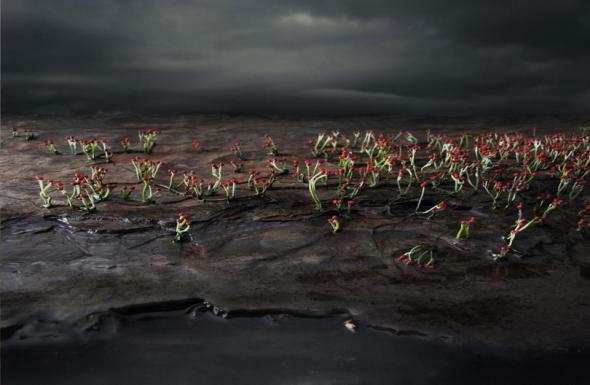
Cooksonia - Located in Ireland over 400 million years ago is said to be the first recorded plant on earth along with mosses and lichens
STRESS though is a number on factor within our life and is not just harming our own health, but others around us too along with harming the environment through negligence chaotic out of control thinking. I have listed below a number of plants that you may be familiar with or may not that can and have been proven time again to help relieve just stress plus other ailments however STRESS or anxiety is the number one subject within this botanical document that I wish to narrate on.
Stress is defined as an organism’s total response to an environmental condition or stimulus, also known as a stressor. Stress typically describes a negative condition that can have an impact on an organism’s mental and physical well-being. There are many “signals” to stress or anxiety attacks to feeling (anxious)
How does stress (interfere with our bodies complex organs?)
Brain
The brain plays a critical role in the body’s perception of and response to stress. However, pinpointing exactly which regions of the brain are responsible for particular aspects of a stress response is difficult and often unclear. Understanding that the brain works in more of a network-like fashion carrying information about a stressful situation across regions of the brain (from cortical sensory areas to more basal structures and vice versa) can help explain how stress and its negative consequences are heavily rooted in neural communication dysfunction. In spite of this, several important brain structures implicated in playing key roles in stress response pathways are described below.
Human brain (hypothalamus=red, amygdala=green, hippocampus/fornix=blue, pons=gold, pituitary gland=pink)
Hypothalamus
The hypothalamus is a small portion of the brain located below the thalamus and above the brainstem. One of its most important functions is to help link together the body’s nervous and endocrine systems. This structure has many bidirectional neural inputs and outputs from and to various other brain regions. These connections help regulate the hypothalamus’ ability to secrete hormones into the body’s blood stream, having far-reaching and long-lasting effects on physiological processes such as metabolism. During a stress response, the hypothalamus secretes various hormones, namely corticotropin-releasing hormone, which stimulates the body’s pituitary gland and initiates a heavily regulated stress response pathway.
Amygdala
The amygdala is a small, “almond”-shaped structure located bilaterally, deep within the medial temporal lobes of the brain and is a part of the brain’s limbic system, with projections to and from the hypothalamus, hippocampus, and locus coeruleus, among other areas. Thought to play a role in the processing of emotions, the amygdala has been implicated in modulating stress response mechanisms, particularly when a feeling of anxiety or fear is involved.
Hippocampus
The hippocampus is a structure located bilaterally, deep within the medial temporal lobes of the brain, just lateral to each amygdala, and is a part of the brain’s limbic system. The hippocampus is thought to play an important role in memory formation. There are numerous connections to the hippocampus from the cerebral cortex, hypothalamus, and amygdala, among other regions. During stress, the hippocampus is particularly important, in that cognitive processes such as prior memories can have a great influence on enhancing, suppressing, or even independently generating a stress response. The hippocampus is also an area in the brain that is susceptible to damage brought upon by chronic stress.

Locus coeruleus
The locus coeruleus is an area located in the pons of the brainstem that is the principal site of the synthesis of the neurotransmitter norepinephrine, which plays an important role in the sympathetic nervous system’s fight-or-flight response to stress. This area receives input from the hypothalamus, amygdala, and raphe nucleus among other regions and projects widely across the brain as well as to the spinal cord.
Raphe nucleus
The raphe nucleus is an area located in the pons of the brainstem that is the principal site of the synthesis of the neurotransmitter serotonin, which plays an important role in mood regulation, particularly when stress is associated with depression and anxiety. Projections extend from this region to widespread areas across the brain, namely the hypothalamus, and are thought to modulate an organism’s circadian rhythm and sensation of pain among other processes.
Spinal cord
The spinal cord plays a critical role in transferring stress response neural impulses from the brain to the rest of the body. In addition to the neuroendocrine blood hormone signaling system initiated by the hypothalamus, the spinal cord communicates with the rest of the body by innervating the peripheral nervous system. Certain nerves that belong to the sympathetic branch of the central nervous system exit the spinal cord and stimulate peripheral nerves, which in turn engage the body’s major organs and muscles in a fight-or-flight manner.
Pituitary gland
The pituitary gland is a small organ that is located at the base of the brain just under the hypothalamus. This gland releases various hormones that play significant roles in regulating homeostasis. During a stress response, the pituitary gland releases hormones into the blood stream, namely adrenocorticotropic hormone, which modulates a heavily regulated stress response system.
Adrenal gland
The adrenal gland is a major organ of the endocrine system that is located directly on top of the kidneys and is chiefly responsible for the synthesis of stress hormones that are released into the blood stream during a stress response. Cortisol is the major stress hormone released by the adrenal gland.
In addition to the locus coeruleus existing as a source of the neurotransmitter norepinephrine within the central nervous system, the adrenal gland can also release norepinephrine during a stress response into the body’s blood stream, at which point norepinephrine acts as a hormone in the endocrine system.
The immune system also plays a role in stress and the early stages of wound healing. It is responsible for preparing tissue for repair and promoting recruitment of certain cells to the wound area. Consistent with the fact that stress alters the production of cytokines, Graham et al. found that chronic stress associated with care giving for a person with Alzheimer’s Disease leads to delayed wound healing. Results indicated that biopsy wounds healed 25% more slowly in the chronically stressed group, or those caring for a person with Alzheimer’s disease.
It’s no surprise that constant stress can make people sick, which researchers have been studying now for some many years.
A study focused on 119 men and women taking care of spouses with dementia. The health of the caregivers was compared with that of 106 people of similar ages not living under the stress of constant care giving.
Blood tests showed that a chemical called Interleukin-6 sharply increased in the blood of the stressed caregivers compared with blood of the others in the test. Previous studies have associated IL-6 with several diseases, including heart disease, arthritis, osteoporosis, type-2 diabetes and certain cancers.
The study also found the increase in IL-6 can linger in caregivers for as long as three years after a caregiver had ceased that role because of the spouse’s death. Of the test group, 78 spouses died during the survey.
People under stress tend to respond by doing things that can increase their levels of IL-6.For example, they may smoke or overeat; smoking raises IL-6 levels, and the chemical is secreted by fat cells. Stressed people also may not get enough exercise or sleep, she added. Exercise reduces IL-6, she said, and normal sleep helps regulate levels of the chemical.
There are many animal pharmaceutical tested synthetic meications that can relieve stress from Amitriptyline, Chlorpromazine, Clonazepam, Clonazepan, Clonidine, Codeine, Valium, Cloziril, and many more all anti-psychotic to (neurological pain relievers such as Amitriptyline as explained) used to treat Neuralgia that is extremely unpleasant and effects one of the most sensitive nerves in the body the “ Trigeminal Nerve” that runs the entire length of your mouth, hence why when you feel tooth ache and it’s on the right hand side you can also feel pain on the left and within one’s ear as the Trigeminal nerve is connected to all nerve endings in the face that shoot pain receptors in many directions making your pain more intense as the infected “tooth” to the “virus or decay” is pressing on this nerve, hence why dentists to neurologists prescribe (nerve relievers to help relax the nerve thus = less pain).
Moving away from the pharmaceutical talk and more on the “natural stress relievers” I have listed as explained above, below for you handpicked stress relievers of which are “botanical aids”. You can purchase these in many local homeopathy natural medicine clinics or have them made up in front of you via tincture and to whatever strength.
Stress headache;
The cayenne pepper—also known as the Guinea spice is a great stress headache reliever “not a cure” and please do note that I use the word constantly “reliever” and not curer. Cayenne or better known in the bionomical language as Capsicum frutescens has been used in many alternative medicine therapies for the (relief) of migraine to stress induced headache that’s caused by mainly the blood vessels in the brain constriction and not allowing the receptors to flow through adequately. Clonidine would normally work here via opening the arteries in the brain as it acts as a vascular dilator. Capsicum frutescens also does the same job though and can be made into a spray or tablet to liquid form although many homoeopathists will tend to opt for the spray as the liquid from the cayenne will travel directly to the point intended this reliving pain over period of time.
Research suggests that capsaicin can also help relieve cluster headaches. In one study, people with cluster headaches rubbed a capsaicin preparation inside and outside their noses on the same side of the head as the headache pain. Within five days, 75 percent reported less pain and fewer headaches. They also reported burning nostrils and runny noses, but these side effects subsided within a week.

Capsaicin (pictured above)
Back and neck tension;
This is a common form of stress that will affect 7-10 people every week in one way or the other. Pain can range from moderate to severe giving the feeling that your entire body is knotted causing excruciating back, muscle and tendon stress pain.
65 million people in America alone suffer from chronic back pain. Conventional treatment of such injuries usually revolves around strong pain killers, anti-inflammatory drugs, and very often surgery. Unfortunately, it is too common that these treatments do not yield the recovery hoped for.
OK I have two very interesting and powerful alternative medicines here that have been proven to “relieve” and still many people don’t realise the wonders of this botanical alternative medicine[s].
lobelia inflate
Lobelia inflata is a species of Lobelia native to eastern North America, from south eastern Canada south through the eastern United States to Alabama and west to Kansas, Lobelia inflate is not your normal seasonal annum plant but in fact a type (1) perianal. How does it work?
Lobelia is a powerful antispasmodic, indicated by severe spasm. It doesn’t seem to work so well as a preventive, and so would not be an herb I would recommend for regular use, but rather help to resolve spasm when the muscles are seized up and just won’t let go.
To this end, it can be very effective, many people have used it to address grand mal seizures, and said it has worked better than anything they’ve normally used as an alternative to even synthetic pharmaceutical treatment. Lobelia, in large doses, can have an emetic effect – PLEASE NOTE Lobelia can in LARGE dosages induce vomiting, but the tincture taken in small doses is unlikely to produce this result.
I must stress this too and please don’t ignore my professional advice (please). Lobelia like any plant can cause gastrointestinal upsets thus inducing poisoning however (only in large extreme doses), some homoeopathists and herbalists will disagree with me to others, however I am giving you the advice from what I was taught at the Royal Horticultural Society (RHS) to use Lobelia please administering 1-10 drops of lobelia to the effected start low, and work your way up if needed.

Lobelia inflate (pictured above)
kava kava better known as Piper methysticum
The roots of the plant are used to produce a drink with sedative and anaesthetic properties. Kava is consumed throughout the Pacific Ocean cultures of Polynesia, including Hawaii, Vanuatu, Melanesia and some parts of Micronesia. Kava is sedating and is primarily consumed to relax without disrupting mental clarity. Its active ingredients are called kavalactones. A Cochrane Collaboration systematic review of its evidence concluded it was likely to be more effective than placebo at treating short-term social anxiety. Safety concerns have been raised over liver toxicity, largely due to the use of stems and leaves by supplement makers, as opposed to solely the root of the plant as dictated by traditional uses.
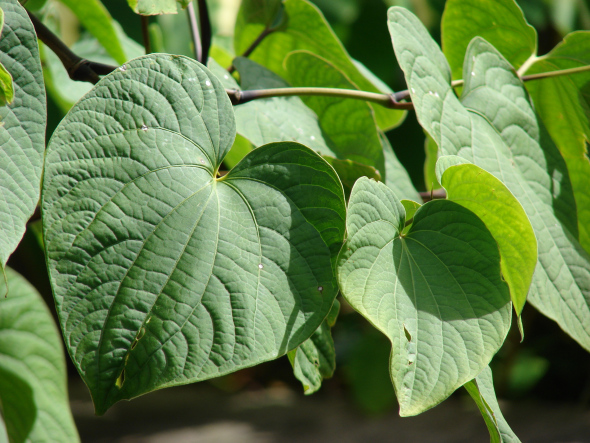
Piper methysticum (pictured above)
Kava Kava though is if used moderately and correctly will not cause liver toxicity such as illicit narcotics or liqueur.
Kava Kava is a very effective remedy for relaxing tension, and it works both on the mind and the muscles. Kava is very often used when people are holding their emotional or mental tension physically, but it can also be useful when the physical tension of an injury is causing a lot of mental anxiety and unrest. While I think Kava poses no problems when taken frequently, it’s an herb I’d restrict to use as needed to deal with the anxiety attending injury, and not the mainstay of treatment. Also, I do think kava works rather nice in larger doses, anywhere from 30 to 90 drops (1 to 3 “squirts” of tincture). Please consult homoeopathists and do not try to prepare yourself unless you’re fully qualified in botanical medicine.
Emotional stress and depressive stress;
Ashwagandha & St Johns Wort
Withania somnifera, also known as ashwagandha, Indian ginseng, poison gooseberry, or winter cherry, is a plant in the Solanaceae or nightshade family. Several other species in the genus Withania are morphologically similar. Yes Nightshades “can be toxic” however only the main species of the (deadly nightshade) Atropa belladonna a completely different species and genus.
Withania somnifera, is a perennial herb found throughout western India. It is also known as the Indian ginseng because of its revitalizing actions. Ashwagandha is a rejuvenating tonic in Ayurveda, and practitioners use the roots to treat general fatigue, nervous exhaustion, insomnia and stress. In their 2000 book “The Herbal Drugstore,” Dr. Linda B. White and medicinal plant expert Dr Steven Foster recommend ashwagandha to enhance your body’s mental and physical performance and its ability to cope with stress. You can use ashwagandha teas, tinctures and capsules, but consult a qualified health care professional for dosage instructions. Do not use ashwagandha if you are pregnant, have stomach ulcers, autoimmune disease, or if you are having surgery with anaesthesia.
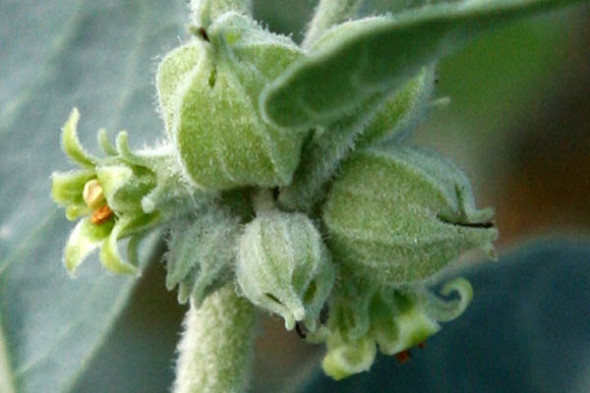
Withania somnifera (pictured above)
You can purchase Ashwagandha here - http://www.google.com/shopping/product/7563134337631719525?q=Ashwagandha&hl=en&rlz=1C1CHMO_enGB520GB520&bav=on.2,or.r_gc.r_pw.r_qf.&bvm=bv.42553238,d.cGE&biw=1517&bih=664&sa=X&ei=4sIdUde_KpDxigLZwIGgBg&ved=0CG4Q8wIwAA
St Johns Wort – Hypericum perfoatum or H. vulgaris is and has been used for some many years across the planet as an emotional stress and depression reliever lifting moods and helping your bodies to battle immune stress and emotions.
Now available on prescription due to cost in herbalist formulation of this amazing plant it can be located in Germany, France, England, and Spain via your local physician. Please note that in some parts of the United Kingdom it’s not available due to funding and what I could locate as a discriminatory post code lottery.
St. John’s wort is most often taken in liquid or pill form. The dried herb may also be used as a tea.
The most common dose used in studies has been 300 mg, three times a day. Preparations in the U.S. have varied amounts of active ingredient in them. So be careful to note how much you’re getting in your tablets.
Please NOTE;
You should be alert for any of the following effects if you are taking St. John’s wort:
- allergic reactions
- fatigue and restlessness with long-term use
- increased blood pressure
- increased sensitivity to the sun — especially if you are fair-skinned and taking large doses
- stomach upsets
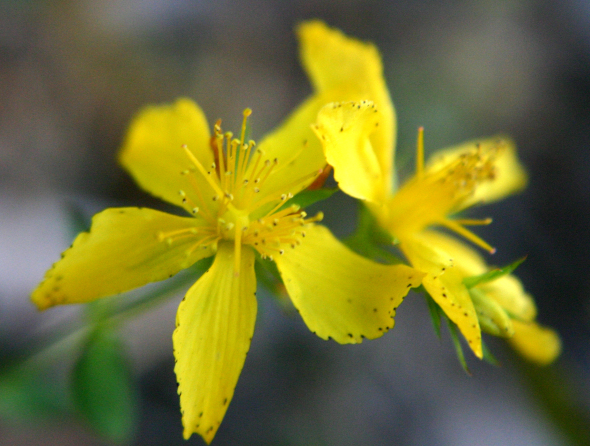
St Johns Wort (pictured above)
Nervous tension/stress/ emotional stress;
Valeriana wallichii known as Tagara
Valeriana wallichii, is a rhizome herb of the genus Valeriana and the family Valerianaceae also called Indian Valerian or Tagar-Ganthoda, not to be confused with Ganthoda or the Long Pepper. It is a herb useful in Ayurvedic medicine used as an analeptic, antispasmodic, carminative, sedative, stimulant, stomachic, and nervine.
A perennial herb rich in volatile oils Ayurvedic practitioners use it to treat emotional stress, nervous tension, insomnia, muscle spasms, headaches and anxiety. The active ingredients are called valepotriates, and they have potent antispasmodic and anti-anxiety action. In her 2009 book, “The Holistic Herbal Directory,” herbalist Penelope Ody says that tagara can also be applied as a cream topically to treat stress-related skin conditions like eczema. Do not combine tagara with other sedatives or antidepressants.
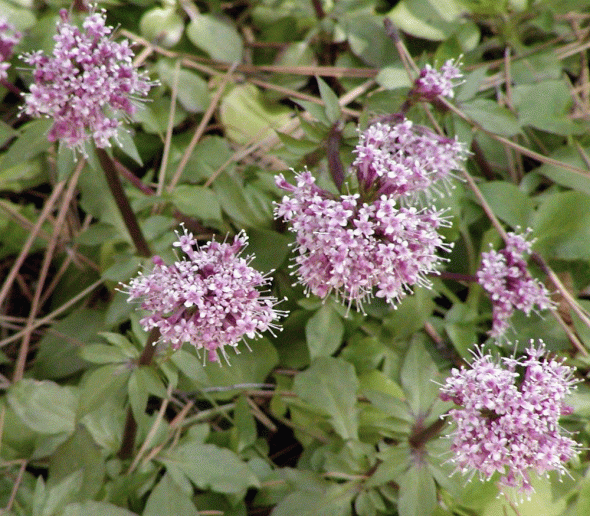
Valeriana wallichii (pictured above)
Please read more here http://www.a2xanxiety.com/reports/anxiety.html?stress?weirdherbscombo?www.livestrong.com
Although I have named only a small handful of the most stressful complaints that can be reduced through using natural herbs there are thousands of botanical species that can be purchased online or at your local herbalist homoeopathist.
Thank you for reading
Dr J C Dimetri V.M.D, B.E.S, Ma, PhD , MEnvSc
Please note in the first video below the speaker quotes “there are no side effects” this is untrue and there are indeed side effects like with synthetic medications. Please always consult your practitioner, herbalists, or homeopathic therapists,
Please note International Animal Rescue Foundation shows BOTH SIDES of every story and wish to explain in great detail our own findings and what knowledge that we are already aware of;
Environmentalism Chapter 19 - Plant smuggling
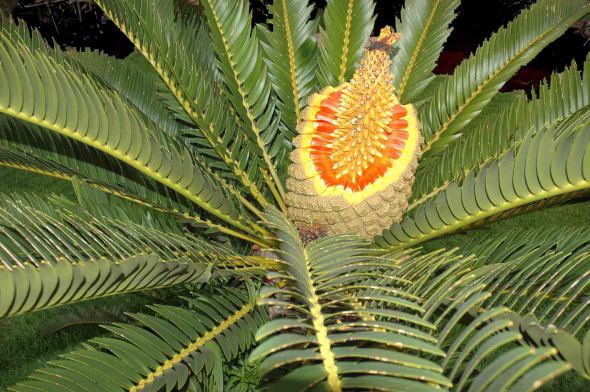
On a regular daily basis we often here within the news animal parts that are smuggled along with narcotics and fire arms too. Smuggling is big business and if it’s freely obtainable such as species of animals, and money can be made relatively quickly then it’s a job well done for the smuggler.
Regrettably animal parts smuggling we are all now aware is almost finically nearing that of narcotics and fire arms raking up some millions of dollars just for counterfeit pharmaceuticals, to clothing within the fur trade of which a single Tiger pelt can fetch up to $100,000 or more.
What we don’t view documented much on is illegal bulb/plant smuggling, and I’m not talking about the ones that light your rooms. Bulb, root stock, seed’s to even whole entire plots of land are being dug up and illegally then smuggled across the borders that is now starting to rage out of control.
Back in 1993 I worked with the Romanian border police for two months to gauge experience on this as botany is one of my specialised subjects which I hold a Bachelor’s degree on, not to mention other subjects I have studied. The trade in plant and bulb smuggling has always been big business in more or less the same way as cattle rustling to animal parts smuggling. One of the main reasons why it’s not really heard of though within news and media is because there are billions of species of plant life upon our planet to date compared to animals which are dwindling in numbers rapidly. However this does not under any circumstances mean it’s not causing environmentalists and agriculturists to horticulturists a rather nasty headache.
The smuggling of plants, bulbs, root stock to trees and seeds is fairly un-documented on within online forums to news and media so please allow me to explain how bad the problems are with regards to endangered botanical species that are being wiped out to bringing with them across international borders plant stock and seeds that are actually infested with pests and diseases that can if they take hold within a nation that has no real agricultural to botanical problems or professional agricultural and botanical management cause widespread billion dollar damage to the environment to even human health placed at risk from crop destruction through human negligence and greed.
Plant smuggling as I am going to refer to it can be dated as far back as the 1990’s but didn’t really take off until the 1950’s – 1960’s within America on large scale that saw many pests and diseases brought in to the United States of America. Smuggling of plant stock in Europe is and always has been big business in Europe dating back to the late 1890’s to present.
One very important documented seizure in the United States that I can only lay a date of around the 1950’s I have recorded below, and hadn’t it been for eagle eyed customs officers ceasing the containment then America could of faced a catastrophic agricultural and botanical nightmare causing billions upon billions of lost crop and revenue due to pest infections from foreign seed, root stock, and bulb, not to mention mass retail breakdown from cereal crop damage that the public mostly rely with regards to consumption.
The news article reads;
It was an ordinary looking package in the hands of an honest-appearing man who stepped from the steamer Charlotte M. Hall onto the Baltimore dock not so long ago.
The parcel had passed the customs officials, and had, apparently, a clear road to its destination anywhere in the United States. Yet it contained destructive agents that bade fair to wreck hundreds of millions of dollars’ worth of property, and that might have left a trail of poverty and ruined homes throughout a period of many years.
Fortunately the U. S. government has eyes, concealed in unexpected places. This package aroused the suspicion of an inspector of the Plant Quarantine and Control Administration of the U. S. Department of Agriculture. He got possession of it, questioned the owner, opened the parcel, and saved the nation from a loss than can scarcely be calculated.
The passenger who landed that day from the Charlotte M. Hall was a Mississippi planter, returning from a business trip to Brazil. He was a progressive farmer, and his motive—the improvement of his cotton crop —was legitimate enough. But the package contained 59 separate sets of cotton seed, every set infested with living larvae and adults of the dread pink bollworm, the most destructive enemy of cotton in the world. Already it has destroyed the cotton industry of the Hawaiian Islands, and annually inflicts tremendous damage upon the cotton planters of Egypt, Brazil, and Mexico— in fact every great cotton growing country in the world save the United States.
Experts say that if this innocent appearing personal package had not been intercepted through the vigilance of a plant inspector, it would have carried to the heart of Mississippi enough living pink bollworms to have started an invasion of the entire state which might easily have gotten beyond control before discovery.
This incident is only one of the many thousands involving similar interceptions made annually by the inspectors of the Plant Quarantine and Control Board. Their job is to prevent plant and fruit smuggling, innocently intended, or otherwise; and their personnel, while comparatively small numerically speaking, is of the highest calibre. Inspectors are stationed at all principal ports.
Down along the Mexican border the Federal officers have their share and more of adventures, humorous and dangerous. Even some of the old-timers hardly dare put their hands in their pockets while working in certain hard-boiled communities, for fear of being shot at from behind. The license tags of their trucks carry the letters, U. S. D. A., meaning of course, United States Department of Agriculture. But thirsty souls, and there are many along the border, are prone to take a different interpretation—United States Dry-Agent! And lovers of the corn and rye like to take the law in their hands—when in doubt.
And now for some of the tricks of the smugglers! The following side splitting incident took place at the port of New York a few years ago. It seems that a woman arrived from Jamaica, and in her possession was discovered a basket containing some plants. They did not meet the current rigid requirements so a plant inspector explained that her plants could not be brought in. The good woman explained that she really wasn’t greatly interested in the plants themselves, but that she was anxious to have the soil for her prize cat to play in—he did so love to frolic about in Jamaica soil.
A tear or so appeared in the official’s eye— for he was a kindly soul. However, it did not remain there long. After being hard-hearted enough to do his duty and advise the dowager that she must return home sans the soil, he gave it the thorough Sherlock Holmes. Hardly had the good woman departed when his astonished, but no longer humanitarian eye, noted two bottles of Jamaica gin buried therein.
Joseph of Biblical fame had a coat of many colours. But the inspectors around Brownsville, Texas, and the notorious Tia Juana district, are still chuckling over the Mexican of many pockets. Some years ago this man came waddling across the border at such a slow rate that he aroused suspicion. To begin with, he was plump, but his avoirdupois seemed to be not altogether of the flesh. And it was not, as examination of his portly person revealed. Inside his coat was an ingeniously devised vest containing many pockets filled with alligator pears. Now, these delicacies are likely to contain an unwanted kind of pest. This “inventor” extraordinary was tried, found guilty, and given a stiff fine for his ambitious efforts to pull a fast one on your Uncle Samuel.
A somewhat similar incident, but of a far more serious nature, took place on the border near El Paso recently. A very dignified gentleman of middle age who claimed to be some sort of a scientist presented his trunk for Federal inspection. Nothing contraband seemed to be on hand until one of the inspectors nonchalantly plunged a hand into a bulky looking pile of the man’s coats and trousers. Encountering numerous hard objects, the inspector made a thorough investigation and found no less than 56 contraband orchid plants. That the offender’s intentions were anything but innocent was revealed by the fact that every one of the plants had been sewed painstakingly into the garments with an obvious intent to deceive. Imagine Mr Scientist’s embarrassment when he saw his well worked plans go awry, even to the point of earning a substantial fine.
Then there was the case of the American woman who crossed the Mexican border into the United States wearing an extremely full skirt of a type common to certain well known religious sects. Devout looking was this lady, yet there was a certain something about her demeanour that aroused suspicion, so a lady inspector was instructed to give her a thorough inspection. This brought out the interesting fact that the good woman had tied a huge bag, filled with contraband fruit, around her waist. Which may explain why she chose such full skirts on that eventful day?
But for sheer ingenuity, consider a package lately received by postal inspectors. At first glance it consisted of a number of heavy magazines. But their weight was so out of proportion to their size that the inspector opened the “magazines”. Whereupon he found many bunches of contraband nursery stock, alongside of which a couple of potatoes had been packed in order to afford moisture to the stock.
Other clever ruses of the smugglers are: false bottomed trunks and barrels, besides contraband fruits and plants which have been hidden in partially baked loaves of bread.
End of news article —-
Problems have gotten far worse though since this time and we cannot just blame the smuggler as it is indeed as quoted above the innocent member of the public that has travelled to local or internal continents, spied the eyes in such a beautiful species of plant of seed crop then removed that and brought it into their home nation on returning from their vacation.
Customs are now seizing daily many plant species that are non-endangered to critically endangered, to fruits vegetables and seeds all of which can and will present a massive biohazard. Its takes only one to two pests to escape from the contraband or illegally smuggled plants to enter agricultural land, or botanical crops and within one to two weeks billions in damages are caused, human life is placed in danger from hunger or famine as of infested non-edible crops, and the environment suffers more due to herbicides, insecticides, and pesticides leached in to the soil, streams and seas from chemical land run off.
Main seizures to date and current trends are that of mainly bulbs and, orchids, and seeds that can fetch on the black market millions of euros to dollars. On July 24, 2001 (ENS) - Six men were charged with crimes related to the illegal importation of internationally protected plants called cycads the men were arrested by special agents of the U.S. Fish and Wildlife Service that Friday.
Cycads, which look like palms or tree ferns, are a group of plants whose ancestors date back more than 200 million years. Some cycad species are endangered or threatened in the wild from habitat loss and over-collection from botanical enthusiasts to general members of the public that are looking at sparking the garden up with lush green tropical growth without realising the mass damage they are causing to the environment and potentially other crops.
Cycads are protected under the Convention on International Trade in Endangered Species (CITES), a treaty through which the United States and more than 150 other countries regulate global trade in imperilled animals and plants, these palm like tropical species of plant are the most desired simply because of their appearance.
The idiotic and selfish individuals that where arrested are Peter Heibloem, 47, of Queensland, Australia, and Ernest Bouwer, 56, of Sandton, South Africa, were arrested that Friday and charged with 15 counts of conspiracy, smuggling, and making false statements in an indictment unsealed that Friday in the U.S. District Court in San Francisco.
According to the indictment, Heibloem, Bouwer, and three others charged - John Baker of Gauteng, South Africa, Ian Turner of Harare, Zimbabwe, and Rolf Kyburz, of Queensland, Australia - sent approximately $542,000 worth of protected cycads to the United States from South Africa, Australia, and Zimbabwe, had ANY pests and diseases escaped into the atmosphere that could of caused potential mass crop damage thus endangering human and animal life to even killing through crop famine then the men could have been looking at a potential death sentence or lengthy stay behind bars.
Also charged in the indictment and arrested on that Friday, July 20, is Donald Joseph Wiener, 64, of Mexico. He is alleged to have knowingly purchased approximately $200,000 worth of these plants from Heibloem.
Rolf Bauer, 44, of Johannesburg, South Africa, and Jan Van Vuuren, 54, of Centurion, South Africa, also arrested on that same Friday, are charged with conspiracy, smuggling, and making false statements in a separate 29 count indictment unsealed in U.S. District Court in San Francisco.
According to the indictment, these two men sent more than $300,000 worth of protected cycads to the United States from South Africa. They allegedly used invalid CITES permits for the commercial shipments and falsely labelled many of the plants to cover up the lack of a valid permit.
The Service investigation also resulted in charges against three individuals accused of trafficking in protected orchids. Antonius Juniarto of Surabaya, Indonesia, and Iwan Kolopaking of Jakarta,
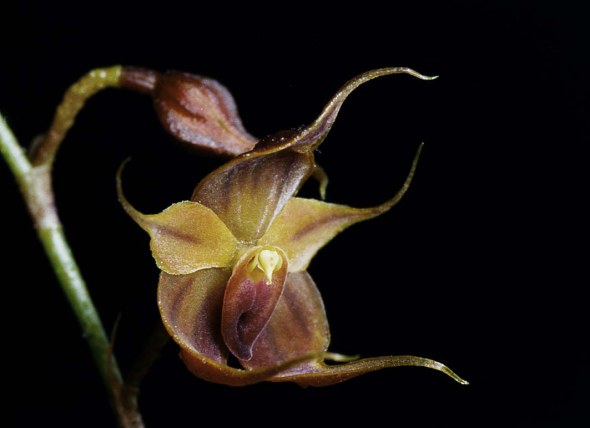
http://boughtonscoffeehouse.wordpress.com/2011/09/15/rare-orchid-named-after-a-coffee/
Indonesia, have been indicted in the Northern District of California on 21 counts of conspiracy, smuggling, and false statements related to the shipment of CITES Appendix I orchids into the United States from Indonesia.
Both remain at large and to this day 2013 have yet to be brought to justice. According to the indictment, the two men sent multiple packages of orchids through the mail with customs declarations falsely identifying the contents as toys. A separate indictment in the Northern District of California charges Terence Leung of Hong Kong with four counts of smuggling related to shipments of CITES Appendix II orchids from Hong Kong into the United States. Leung also remains at large to this date of 2013. If you know of these men, seen or are living please contact International Animal Rescue Foundation’s Conservation Investigation Crime Unit (CICU) at externalaffairs@international-animalrescue-foundation.org.uk immediately, alternatively you can contact your local sheriff.
The maximum penalty for each of the charges against these men is five years in prison and a $250,000 fine. An indictment contains allegations against an individual, and all defendants must be presumed innocent of the charges against them unless they are convicted.
The smuggling of plants is BIG business and also very dangerous to the environment that is not being documented on enough throughout animal and environmental sectors and now has to be taken seriously and indeed much awareness has to ploughed throughout the community to help nail the smugglers but also to educate the public on the dangers of brining contraband through the ports.
Rare plants have also been a target for smugglers, with one high-profile bust in June 2011 catching two Dutch citizens trying to take 57 rare inverted tulip bulbs out of Turkey, along with more than 5,000 flower seeds and roots from 160 endemic species. Though the Dutch are often associated with tulips, the flowers actually have their origin in Turkey and other western Mediterranean countries — the inverted tulip grows only in a specific region of Erzurum, Turkey. Taking endemic species outside of the country without official permission is illegal in Turkey.
Illegal attempts to spirit endemic species out of the country appear to be on the rise in Turkey, where officials have recently busted a number of would-be smugglers with large cargos of butterflies and other insects, as well as rare tulips and other plants. A group of people trying to leave the country by car through Bulgaria were apprehended in 2011 with thousands of bugs hidden away in boxes and tubes, the Anatolia news agency reported. Biology professors who examined the cache “identified 6,014 bugs from 48 different species, including ladybugs, cockroaches, and various types of stag beetles, grasshoppers, flies, and bees” from the Black Sea region and the northern part of Central Anatolia. The haul was reportedly worth 500,000 Turkish Liras, or about $300,000.
Agricultural damage and food shortage;
When plants and plant products are imported or smuggled to the EU and other nations, there is a risk that quarantine pests come with them. Quarantine pests are serious plant pests like insects, mites, nematodes, fungi, bacteria, virus and similar organisms that have no or limited presence in the EU and that may cause large financial consequences if they spread here.
EU and international countries have common rules on the import of plants. These rules apply to both private individuals and to companies. However, there are certain exceptions for private individuals. You can locate more information here https://www.ippc.int/index.php?id=nppoAUS please type into the search engine what nation your wish to view that will show a list of current agricultural and botanical problems to date.
Indian medicinal plants are in great demand in the international market. Varieties like the saptarangi plants (Salacia Reticulate) and guvada (Mappia Foetida) medicinal plants are abundantly available in the forests of Khanapur, Bheemgad, Talewadi, Aamgaon Holda regions of Belgaum district. Medicinal plants are found in abundance at Kuveshi, Mayare, Castle Rock and Anamod forest regions near Diggi in Joida taluk.
Spices like Dalchini Moggu (cinnamon buds) and its leaves are also smuggled out. The Forest officers had seized a lorry transporting guvada leaves about three months ago near Jagalpet. The department has to its credit a few such cases. The medicine prepared from guvada leaves is useful in treating cancer and liver conditions and is in great demand in China and Japan, according to a forest officer.
Innocent people residing in the forests of the border areas are roped in for smuggling. Dearth of staff in the Forest department is a major setback in tackling illegal activities. Since most of the staff is aged around 50, they are unable to conduct surprise raids. A team of enthusiastic youth is required in the department to tackle the menace, says the forest officer.
More awareness;
The Wildlife Enforcement Group is calling for more awareness of illegal plant trading, as smugglers earn tens of thousands of dollars selling endangered New Zealand orchids overseas.
Two men from Czech Republic have been charged under the Trade in Endangered Species Act after allegedly trying to smuggle a number of threatened and protected orchid species taken from national parks out of New Zealand.
The Wildlife Enforcement Group’s investigator, Peter Younger, says there’s a huge demand because many of New Zealand’s orchid species are unique. He says the illegal trade in plants doesn’t attract the same attention as other endangered species.
The Wildlife Enforcement Group has officers from Customs, the Department of Conservation and Ministry of Agriculture. Younger says illegal trade in plants gets overlooked by enforcement agencies compared to more glamorous endangered species like elephants or pandas. Younger says more resources are needed to combat growing orchid smuggling.
A spokesperson for the Customs Service, Rochelle Turnbull, says the orchids are very attractive to international traders as many self-pollinate and are very rare. The accused smugglers appeared in Manukau District Court on Monday. They were remanded without plea.
For information on Australian biosecurity please view here http://www.dfat.gov.au/facts/quarantine.html
Plants that are most commonly smuggled are;
- Endangered tulips
- Narcissi
- Bluebells
- Snow drops
- Hyacinths
- Snakes head lily
- Lille’s (general)
- Spices and herbs
- Rhizomes
- Seeds
- Root stock
- Wild species (mostly illegal to excavate in most EU and International nations)
Some of the most invasive pests and diseases that can come with illegally imported stock / contraband
- Fire fly
- Green fly
- Black fly
- Fruit fly larvae
- Brown citrus aphid
- Citrus leaf minor
- Leaf minors (general)
- Oriental fruit flies
- Asian citrus Psyllid
- Small hive beetle
- Bromeliad weevil
- Cactus moth
- Mexican fruit fly
- Tropical soda apple – please read here http://plants.ifas.ufl.edu/node/426
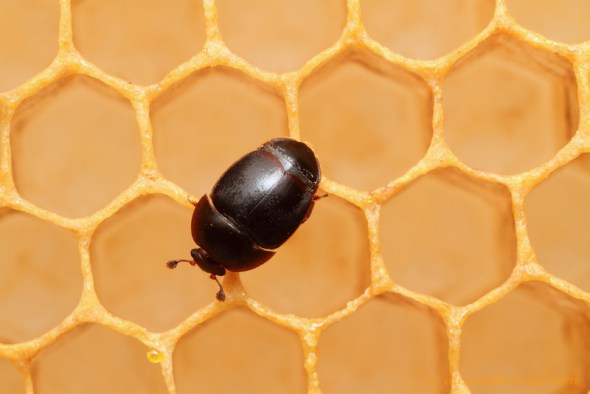
Damage to crops and other botanical species can be vast in scale and also life threatening;
Primary Industries Minister David Carter explained in June 2012 the new Biosecurity Recovery Framework will run alongside existing support for farmers who suffer from droughts and floods.
“The government recognises that biosecurity incursions can have economic, environmental and social impacts that can hit production businesses hard and take time to recover from,”
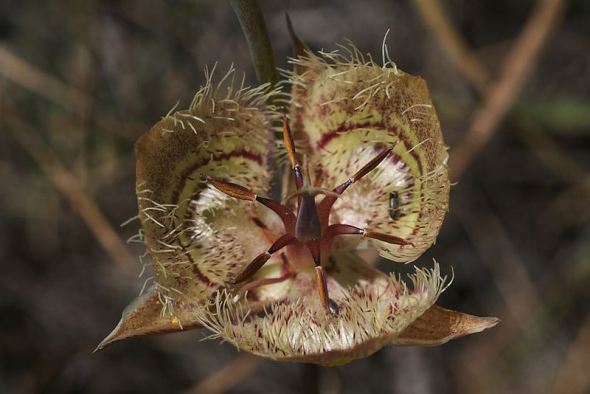
“The new framework will make recovery measures available to people seriously impacted by a disease or pest incursion.”
In 1978, the horror movie, “The Swarm,” hit the nation’s theatres, featuring vast hordes of killer bees that wreaked havoc in south Texas. Chock a block with big name stars — Henry Fonda, Olivia de Havilland, Michael Caine, Richard Widmark, Fred MacMurray, Richard Chamberlain, Ben Johnson, Lee Grant, Patty Duke, Slim Pickens — the $21 million production (a lot of money in that era) was a colossal box office bomb, lasting only a couple of weeks in theatres. Although it was subsequently labelled one of the worst disaster movies ever, four decades later it enjoys something of cult status among horror movie buffs.
“It was a cheesy movie,” says Blake Layton, Mississippi State University Extension entomology professor, “but it was also somewhat prophetic in that we’ve seen Africanized honeybees, which were dubbed ‘killer bees,’ move into the southern U.S. and become established.”
While not nearly so dramatic on a human scale as in the old movie, many non-native pests, from fire ants to slithery, slimy worm-like creatures, have come into the U.S. and made themselves at home, often causing widespread economic damage and other disruptions to life and commerce, he said at a recent meeting of the Starkville, Miss., Ag Club.
“So, in reality, we can say ‘the swarm’ is still coming.”
Africanized honeybees, which are a sub-species of the common European honeybees, came into Texas in 1990 and have spread from there, Layton says.
“Their movement has been more westward than east, although they’re in south Louisiana, only two parishes away from Mississippi. They are much more aggressive than our native honeybees. When they do move into Mississippi, it will change the way we deal with honeybees.
“Even our ‘native’ honeybees aren’t native; they were brought here by settlers from Europe. The Indians called them ‘white man’s flies.’”
There are more than 1,700 significant insect pest species in the U.S., Layton says, and half or more have been introduced in one way or another.
“The boll weevil is a prime example of how a non-native pest can move in and wreak economic havoc,” he says. “It cost Mississippi farmers millions of dollars before it was finally eradicated. We’ve not had a boll weevil in the state in more than two years.”
Imported fire ants have spread across most of the lower Southeast and across south Texas and into parts of Oklahoma.
“Thus far, we’ve not been able to stop them,” Layton says, “and there’s nothing on the horizon that promises to halt their spread.”
Another species, Argentine ants, “have been here for a long time, but haven’t spread as fast as fire ants. South of Jackson, Miss., they’re quite abundant. They don’t sting or build visible mounds, and they’ll run off fire ants. The difference is that they will come inside houses and other buildings.”
Bio Insect Terrorism;
Following the 9/11 attacks the U.S. government assigned hundreds of agricultural scientists responsible for stopping invasive species at the border to anti-terrorism duties. The result has been that dozens of foreign insects and plant diseases managed to slip undetected into the United States
Experts now say that the problem has reached the point where the quality of the U.S. food supply is under threat. The economic damage is not in dispute: scientists say that the foreign pest explosion cost billions of dollars in crop damage and eradication efforts from California vineyards to Florida citrus groves.
Horrifying Biosecurity facts;
- Nineteen Mediterranean fruit fly infestations took hold in California, and the European grapevine moth triggered spraying and quarantines in California’s wine country.
- The Asian citrus psyllid, which can carry a disease that has decimated Florida orange groves, crossed the border from Mexico, threatening California’s $1.8 billion citrus industry.
- New Zealand’s light brown apple moth was detected in California, prompting the government in 2008 to bombard the Monterey Bay area with 1,600 pounds of pesticides. The spraying caused respiratory problems and killed birds. Officials spent $110 million to eradicate the moth, but the effort failed.
- The sweet orange scab, a fungal disease that infects citrus, appeared in Florida, Texas, Louisiana, and Mississippi, leading the states to impose quarantines.
- Chili thrips, rice cutworms and the plant disease gladiolus rust also got into Florida, which experienced a 27 per cent increase in new pests and pathogens between 2003 and 2007.
- The erythrina gall wasp decimated Hawaii’s wiliwili trees, which bear seeds used to make leis.
- Forests from Minnesota to Washington State were also affected by beetles such as the emerald ash borer, many of which arrived in Chinese shipping pallets.
The number of pest cases intercepted at U.S. ports of entry fell from more than 81,200 in 2002 to fewer than 58,500 in 2006, before climbing back up in 2007, after complaints from the farm industry. The situation for 2012 is now completely out of control and it’s becoming worse with the illegal smuggling of plant, bulb, seed, and other non-native pests and diseases.
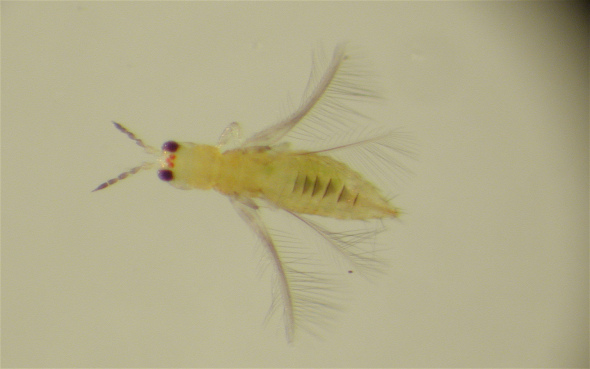
December 2012 - Investigators from the Department of Agriculture, Fisheries and Forestry discovered the Asian tiger mosquitoes (Aedes albopictus) inside two glasshouses at a quarantine station on Melbourne’s outskirts.
The department says the mosquitoes can carry dengue fever. Spokesman Wayne Terpstra says they represent a potential risk to human health. “They are a known vector for what they call arboviruses, such as dengue fever,” he said. “So they do pose a health risk for humans if they were to establish.” The department says that no Asian tiger mosquitoes have been found outside the glasshouses.
The plants will be destroyed and the quarantine stations sprayed with insecticide. Officials say further investigations are underway to confirm all mosquitoes have been exterminated.
http://www.msmbb.org.my/apjmbb/html181/181ap.pdf
Should the plant/seed/bulb and other green stock smuggling not halt then we are/could be looking at a potentially dangerous situation here that would cause widespread famine, hunger, to cereal crop prices shooting out of the window because of stock having to be imported.
Animal parts smuggling is just as big on the black market than it is with plants, narcotics and fire arms with plant smuggling now being named as the new “animal parts trade” and it’s being primarily fuelled by the current trend hitting of internationally with regards to alternative traditional Chinese medicine and traditional Indian medicine. We are playing with fire and the general public are not taking this seriously.
Customs officers are doing all they can to seize the most potentially dangerous bio hazard stocks, but like I have explained it only takes one or more non-native insect species to enter the biosphere then we could be looking at dangerous consequences for all.
In November 2012 it was again reported;
A large tract of paddy crops has been damaged due to invasion of Leda (swarming caterpillar) insect which has ruined the economy of the thousands of farmers in the district here.
“Help from the administration, however, is yet to reach the villagers, more than three weeks after the first swarm of insects arrived here to ruin this year’s paddy. The insects are black in colour and measuring less than an inch in length. Most of the crops have been destroyed in the area by the insects. The farmers, who are hardly able to fight against the pests, now hope to reap less than one-eighth of their usual harvest. The first batch of pests arrived three weeks before,” said district Krusaka Sabha secretary Gayadhar Dhal.
About 8,000 hectares of paddy have been affected due to insect attack, alleged Dhal. However, the district agriculture officer said that only 487 hectares of paddy fields in the district were affected.
“After arriving, the pests first settle on the inner surface of the young leaves of the paddy plant. Usually, two insects share a single leaf. Each insect lay at least 50 eggs before being shaken off the leaf .The eggs are hatched within a week and the new-born insects stay back, drawing sustenance from the young, green leaves. When they leave, the leaf is dead and its colour is rendered pale white,” described an official.
A large patch under paddy crop in Bari, Dharmasala, Binjharpur and Badachana area turned white from their usual leafy green. The rich farmers tried to prevent the onslaught by spraying insecticides on the plants, but this only helped widening the rich-poor gulf. The pests, fleeing from the insecticides-applied areas, took position in the neighbouring fields, where the farmers could not afford to buy the costly chemicals and apply them, said the farmer leader.
The smaller farmers, therefore, lost all their saplings. One of them is Rakesh Samal, a resident of Bari. He has five acres of land and had invested Rs 5,000 this year for paddy cultivation. Last year, the land yielded sufficient profits for him. But this year, he is a worried man as he has lost all hopes of getting a good harvest. The condition of bigger farmers like Gatikrushna Rout of the same village is only slightly better. His family owns eight acres of land. Last year, each acre gave him 80 quintals of paddy. However, this year, after spending several hundred rupees on insecticides, he hopes to get, on an average, only 40 quintals from an acre, said Rout.
The villagers are sore at the lack of response from the administration. Several pleas have been made at the block development office but no official has turned up till date, the farmers complained.
The district agriculture officials have also been paying only lip-service towards their problems, alleged many farmers by not providing pesticides to the affected farmers.
When contacted, the district agriculture officer told this paper, “Twelve mobile groups of the agricultural office have been providing medicines to the farmers to save their paddy from the insects. A senior official from the Agricultural department visited some of the insect-affected paddy fields on Saturday and would give his report on the situation soon.” He added that, for the time being, the department has been freely distributing pesticides to the farmers to tackle the menace.
As angry as I am writing this it does not get any better, SOIL is also being smuggled not to mention tea leaves, tea plants, and now TOBACCO PLANTS to grow in European homes due to the crackdown on illegally imported tobacco that is costing the Inland Revenue department millions in lost revenue. The smugglers then go to real professional lengths and purchase the machinery from Asia or the Americas to then “process and make” their dangerous and potentially killer cigarettes. August 2012 http://www.customs.gov.sg/NR/rdonlyres/6185D945-DC37-4EA6-B5B7-3EC35CC8C60E/24314/PressReleaseonsmuggledsoilwebcopy.pdf soil smuggled “and this would have been used for one thing only (narcotics). This soil could off caused an entire nation to lose billions from foreign crop pests placing human and animal life in massive danger.
PLEASE DO NOT BRING PLANTS, SEEDS, FRUIT, OR OTHER PROHIBITED CONTRABAND INTO THE NATIONS THAT YOU ARE VISITING, PLEASE BE AWARE OF THE BIOHAZERDS IF YOU ARE UNSURE PLEASE CONTACT US ON;
info@international-animalrescue-foundation.org.uk
Dr J C Dimetri V.M.D, B.E.S, Ma, PhD , MEnvSc
Chief Executive Officer
The video above may be a little confusing with regards to the language barrier. What is actually ongoing is the illegal importation of Khat, Khat is used as a medicinal hallucinogenic that reaches many nations all over the world in non-plant form in a powder like substance. Customs just allowed this illegal import to enter from Ethiopia, that was in PLANT form carrying some masses of plant bio hazards. The potential for many pests and diseases to leak from this plant importation is colossal and what damage it has done to nation will never be known. What damage this is doing to other nations though is VERY well known as many people travel to distant or local nations with this drug that’s similar to Ecstasy with the drug in PLANT form that they the chew on to obtain the desired effects.
By illegally importing other plants and bulbs you could face mass criminal charges. These pests below the Soda Apple caused massive crop infestation in the USA wiping out billions in lost crops.
Try and smuggle into Australia then THINK AGAIN, Australia has one of the tightest border controls in the world.
Or you could be caught by “armed narcotic gangs” the choice is your’s but whatever you do please keep your botanical species in your own nations and DON’T bring them into others or you could be facing stiff penalties to even life imprisonment;
Environmentalism chapter 12 - Shark Fin
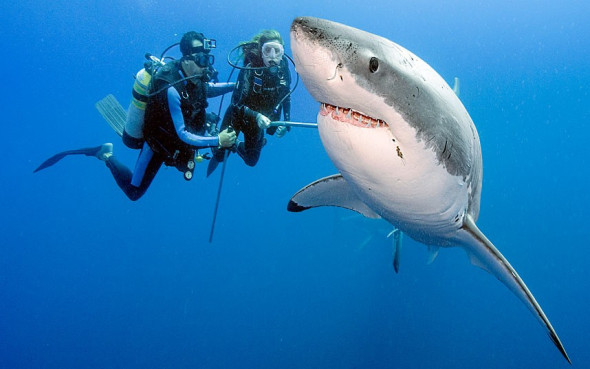
Sharks are one of a kind of Chondrichthyes that have swam the planets oceans for millions of years dating back to the prehistoric realms of the dinosaurs, living through the ice ages, colossal seismic activity that saw many millions of oceanic species wiped out. The shark though a silent stalker and predator remained unscathed.
They were not in any real danger to of traditional Chinese medicine demand or pollution and swam within the oceans with little if any predators, sadly this is hastily no longer factual and the entire species of sharks are being wiped out for a “soup” or medicine used frequently within the Asian medicine market just for tongue and texture.
The species of Shark are not mammalians they are classed as Chordates which is the only unique species of their type separating them from mammals, Chordate are deuterostome animals possessing a notochord, a hollow dorsal nerve cord, pharyngeal slits, an endostyle, and a post-anal tail for at least some period of their life cycles that then develop into the species of which the Deoxyribonucleic acid is programmed to make them into.
Being relatively blind they are agile swimmers yet superb deep sea divers that can smell through an array of senses a drop of blood in the ocean from half way around the world which scientifically is factual although they cannot exactly home in on this being some thousands of miles away there smell is unique from any other form of fish, human or other mammal predator.
The shark noses use ‘smell stereo’ to detect tiny delays no more than half a second long in the time that odours take’s to reach one nostril compared to the other one and that truly is amazing. All species including the deep sea sharks use a combination of directional cues based on scent and the flow of water - to keep them orientated and find what they are searching for.
So the theory that they are human eating man eaters which coincidentally is what the Asians believe hence why they like to consume as well parts the Panthera tigris as in their fake book of counterfeit medicine it states the shark “is a beast and man eater with much energy” that should they consume the shark it will make them a fiery hunter in bed. Its utter nonsense, scientifically untrue, and fairy land tails.
If the delay between the scent reaching one nostril and the other is between a tenth and half a second, the sharks turn their heads to the side where they first smelled the bleeding or anxiously suffering prey such as the squid one of the sharks favorite foods.
If a shark experiences no delay in scent detection or a delay that lasts too long a full second or more they are just as likely to make a left-hand turn as they are to make a right, which makes them rather interesting and a species we must all PROTECT”.
The popular notion that sharks and other animals follow scent trails based on differences in the concentration of odour molecules hitting one nostril versus the other are based on 2010 scientific analyses. It seems that theory doesn’t hold water when one considers the physics of the problem.
Most creatures come equipped with two odour sensors - nostrils or antennae, for example - and it has long been believed that they compare the concentration at each sensor and then turn towards the side receiving the strongest signal.
‘But when odours are dispersed by flowing air or water, this dispersal is incredibly chaotic.’
This recent research on sharks predatory hunting behaviour living has led to findings that has also lead to underwater robots that are better equipped to find the source of chemical leaks, like the oil spill that plagued the Gulf Coast in 2010, 2012 has already seen this research placed to use in many “deep-sea” submersibles now actually using this research to develop state of the technological maritime breakthroughs that have seen many documentaries recorded and sea bed chemical leaks from pipes that are not that easily traceable by other older technologies that can break down at the blink of an eye lid.
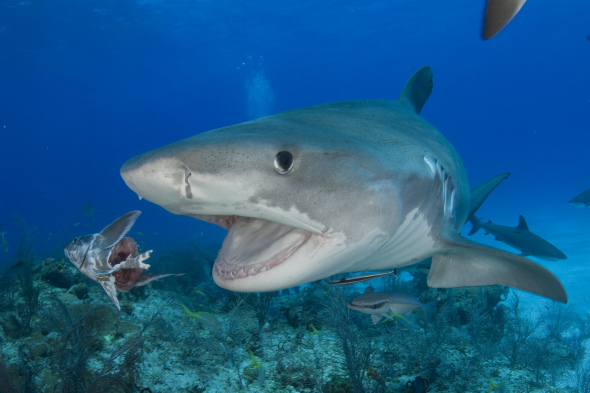
Previous robotic submersibles were programmed to track odours by comparing odour concentrations, and they failed to function as well or as quickly as live animals.
The oil spill in the Gulf of Mexico, and main oil slick was easily visible and the primary sources were easy to locate, smaller sources of Odour-guided robots are an asset for these types of situations with great thanks to the sharks.
The smell organs in the noses of some sharks are able to detect one droplet of blood in one million drops of sea water. They are often attracted to chemicals found in the guts of animals and loiter near sewage outlets so this great research has helped many in the maritime industrial.
Sharks have swam the oceans as far back as we can tell for about 400-500 million years of which there was an estimated 480 species that belong to the subclass of Elasmobranchii, which is in non-scientific jargon cartilaginous fish such as rays which makes them quite different from normal species of fish such are whales that are a sub class of Eutheria distinguished from noneutherians by various features of the feet, ankles, jaws and teeth.
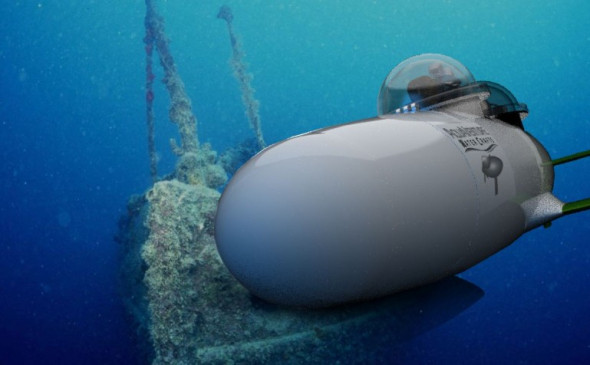
One of the major differences between placental and nonplacental eutherians is that placentals lack epipubic bones although fish don’t have feet, some species that moved from land to waters thousands of years ago have then later evolved in to this “subclass” which the shark species are a subclass of their own from what we know of million year old fossil investigations through archaeology.
Most sharks such as the Carcharodon carcharias, Galeocerdo cuvier, to the Sphyrna lewini are classed as “apex hunters” which basically means they are at the top of the human food chain, they are feared by ourselves even though attacks are rare and just to give you an example of shark attacks verse the bathroom toilet.
Shark attacks for 2011 where 75 global shark attacks, a number closely matching the decade average and the number for 2012 was from what I located to be 62 although that is still to be confirmed surfers and others involved in board sports took the brunt of the attacks, accounting for 60 per cent of unprovoked shark attacks, swimmers 35 percent and divers about 5 per cent.
However the bathroom toilet is quite amusingly odd in 1945, the German submarine U-1206 was sunk after the toilet malfunctioned, and a crewman’s botched repair forced them to the surface killing all on board. King Wenceslaus III of Bohemia was murdered with a spear while sitting in the garderobe (toilet) on August 4, 1306. George II of Great Britain died on the toilet on October 25, 1760 from an aortic dissection. According to Horace Walpole’s memoirs, King George “rose as usual at six, and drank his chocolate for all his actions were invariably methodic. A quarter after seven he went into a little closet. His German valet de chambre in waiting heard a noise, and running in, found the King dead on the floor.” In falling he had cut his face.

Bathing and showering appear to be particularly dangerous. Overall, about two-thirds of accidental injuries happen in the bathtub or shower — which makes sense, because each can become slippery. But many injuries involve the toilet: standing up, sitting down, or using it. (Yes, about 9% of the total injuries were from overexertion.)
Still believe that shark attacks are common and they are “aggressive out of control people eaters” ridiculously untrue please read on. Overall, mishaps near the bathtub, shower, toilet and sink caused an estimated 234,094 nonfatal injuries in the U.S. in 2008 among people at least 15 years old, the Centres for Disease Control and Prevention reported online in its weekly Morbidity and Mortality Weekly Report. And the injury rate rises with age.
Researchers used emergency room data on accidental, nonfatal injuries and some statistical number crunching to reach their conclusions. Their report is full of statistics (which makes it good bathroom reading, if you have 15 minutes and an Internet connection) on the slips, sprains, contusions, fractures and concussions that can happen in the bathroom, to even death.
- About 81% of the injuries were caused by falls (from the bathroom toilet)
- Women were more likely to be hurt than men
- Two-thirds of all injuries occurred in the tub or shower, though only 2.2% occurred while getting into the shower or tub
- Overall, only 1% of accidental nonfatal injuries occurred in the bathroom, but for those 65 and older, 2.5% occurred in the bathroom.
The report can be located here http://www.cdc.gov/mmwr/preview/mmwrhtml/mm6022a1.htm?s_cid=mm6022a1_w how prevailing and odd but very true, so the next time someone states to you that sharks are people eaters and aggressive please remember when you go to the bathroom that your actually “risking your life” Shark attacks though are very unheard of however the reason why they are classed as man eating killing machines is because the press adore to give them a rather bad name.
Such as “GREAT WHITE TORE MAN’S LEG OF” I suppose the headlines “MAN FELL FROM TOILET SEAT AND DIED” just don’t make GREAT reading which is why the press love to make such a mountain out of a molehill over something that could actually be a probing nip which is what a shark will do before “any such attack” takes place. http://mauinow.com/2011/06/07/study-details-hunting-behavior-of-tiger-sharks/
http://www.livescience.com/12783-shark-attacks-hit-10-year-high.html shark attacks on humans only hit a ten year high from recent accident and emergency reports gained from”2011” from all global hospitals. Extraction from the report states;
“Scientists investigated 115 alleged incidents of struggles between humans and sharks worldwide in 2010. They confirmed that 79 of these were unprovoked shark attacks on live humans”.
“Unprovoked attacks are ones that occurred with the predators in their natural habitats without human instigation. The other 36 incidents included 22 provoked attacks — such as assaults after divers grabbed sharks — including three cases of sharks biting boats, four incidents dismissed as non-shark attacks, five scavenging incidents of human corpses and two cases where there was not enough information to determine if an unprovoked shark attack had occurred”. Please read the report as it gives scientific reasoning as to why they have attacked more within the 365 day period. http://dsc.discovery.com/sharks/why-do-sharks-attack.html
What does all this have to do with sharks and the species under threat though? Good question as most of this does as of lack of awareness, the fright factor, and then of course traditional Chinese medicine the NUMBER ONE REASON.
There are MORE attacks on sharks than there are on any other species of fish, and now we need to start taking note of this as we are losing these amazing species rapidly due to counterfeit Asian pharmaceuticals and the disgustingly tasting shark fin soup.
I have always been a firm lover of wild and “predatory dangerous” animals such as mammals from the big lion to Tiger’s, reptilians from Python to Crocodile, and marine aquatic species mainly the shark. In 2010 I traveled to Shenzhena bustling rather smog filled sky scraped city that had many restaurants and street quick food fixes mainly selling animal parts to eat of which shark fin was on the menu.
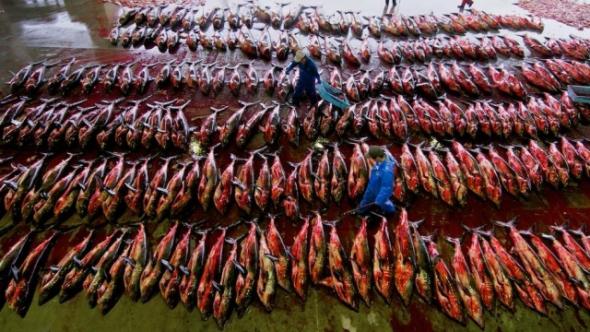
Thousands of Sharks lay dead in a Singapore fishmongers. Within central China it is said by many, and even activists that the sharks are only craved for, for their fins. This is untrue and this picture was taken three days ago in Singapore’s market. The market sells the shark meat and the fins for major profit making Singapore one of the richest Asian islands in the world.
Being a firm lover of sharks and great studier of the species I wanted to see what all the fuss was about and why sharks where being wrenched out of the water like candy from a baby then de-finned and thrown back to the seabed from which they died a slow agonising death from asphyxiation. Being a vegan for thirty years I really couldn’t care at that point as the main objectives was to try this dish to see if this was indeed a great reason why it is used in Asian medicine, to try and ascertain why one of my favorite species of animals was being slaughtered,
The soup smelt repulsively strong and acidic, and when tasting it without almost vomiting, one can only explain that even with a sprinkle of chive that entire first spoon and that being the last, tasted revolting, and more like hot water with the odd lump of shredded fish cuisine within. Oh yes I forgot the tender informed me that it would make me fit and strong even though I already was in 2010 being a healthy vegan for over 30 years.

https://www.facebook.com/SingaporeFoodRecipes
DISGUSTING AND BLOODY CRUEL - THIS IS ONE RESTAURANT THAT NEEDS BOYCOTTING
The soup did nothing, and there was no magical dragon like hallucinogenic that gave me the power of a thousand men. “Shark fin soup does not under any circumstances improve erectile dysfunction (not that I tried), enhance muscle power, to even warding of any diseases/illness that I actually picked up from visiting the shite hole city of smog and environmental pollution, it does nothing and has no proven health qualities at all. The one spoon fall of fowl tasting crap was enough to show to me that one of the most majestic creatures on earth was being slain for “monetary gain” and not any magical belief. Utterly unbelievable.
Chinese Shark Fin soup is a “luxury” food served (mainly) at banquets, weddings, parties and cultural masses, however it’s killing the species of and rapidly. The Chinese claim “The shark fins provide texture while the taste comes from the other soup ingredients. The soup originated centuries ago during the Ming Dynasty.
However demand for the soup has increased as income levels of Chinese communities worldwide have risen. International concerns over the sustainability and welfare of sharks have impacted consumption and availability of the soup. So because the Asian consumers require “texture” to their soup then sharks have to be slaughtered in their thousands. There is such thing as we croutons or (toasted bread) that add more texture to this pile of watered down crap which contains one of my favorite animals.
It is estimated that 100 to 200 million sharks annually are killed for their fins alone that’s seen many species now pushed to the brink of extinction and just to give an insight of how bad a problem this is please view the link http://www.foxnews.com/world/2013/01/04/hong-kong-traders-dry-thousands-shark-fins-on-roofs-to-avoid-scrutiny/
Sharks that are caught and their fins cut off are not always dead when their bodies are thrown back into the sea. Without its fins the shark simply sinks to the bottom of the ocean where it dies. Such a horrible death for such a magnificent creature and diet, the whole entire practice is unethical, environmentally damaging and will cause havoc in the biodiversity predatory hunting circle if we lose our species of sharks.
Shark fins, once they are harvested, are then dried to be sold in markets to individuals and restaurants to be made into shark fin soup and sold to the public (especially tourists) for as much as $350 per bowl! The shark fins don’t even add any flavor to the soup. Chicken or pork are used to flavor, the fins are for texture only.
The shark fin soup industry uses a wide variety of relatively large sharks. The majority of these sharks are now under threat. They are slow to mature and breed sharks give birth to a few live young or lay a small number of large eggs depending on species, rather than produce thousands of eggs at a time in the manner of many bony fish. Large sharks also do not mature until they are several years old. These characteristics mean that shark populations cannot support high levels of exploitation = nearing extinction to species vaporisation for a bowl of lousy fowl tasting soup.
Mackerel Sharks
The order Lamniformes includes some of the best-known and biggest sharks. Among them are the great white shark, the basking shark and the thresher sharks. All these species are targeted for their fins, and all are either endangered or vulnerable. The great white shark, for example, might be the most feared species of shark, especially after starring in the ’70s thriller “Jaws.” However, they are more threatened by humans than humans are by them.
Ground Sharks
Carcharhiniformes is another order boasting well-known sharks, such as the bizarre looking hammerheads, whose fins command high prices. The order also includes the family of requiem sharks. These are sharks are your typical sharks, with streamlined bodies and sharp teeth. Tiger sharks, bull sharks and the spinner sharks, which jump out of the water, are all requiem sharks, and they are all taken for their fins.
Dogfish
The order Squaliformes includes all the sharks known as dogfish, the bramble sharks and the rough sharks. They are generally small, benthic, seabed-dwelling sharks that lay eggs and reproduce relatively quickly. Their fins are not of much value, although these animals are often targeted for their meat. The tails of some species of dogfish are used for cheap versions of shark fin soup.
Of the five remaining orders of sharks, carpet sharks, bullhead sharks, angel sharks, frilled sharks and saw sharks, few species are used for shark fin soup. They are mostly small sharks, with small or undesirable fins, and they are not valuable in the shark fin market. Some species, notably the critically endangered angel sharks and the whale shark — a species of carpet shark and the largest fish in the world — are targeted for their meat or oil, but not the fins.
If we don’t take urgent notice now and demand that CITES Convention on International Trade in Endangered Species of Wild Fauna and Flora take more action and demand that law enforcement cease this repulsive and degrading trade then we will see an ocean without any sharks that will unfortunately create a massive aquatic biodiversity nightmare in the aquatic hunting food chain.
Sharks eat many prey, these prey need to be naturally controlled to preserve OTHER species of smaller aquatic marine fish, and should the shark numbers carry on dwindling at massive proportions then we are heading for a global catastrophe.
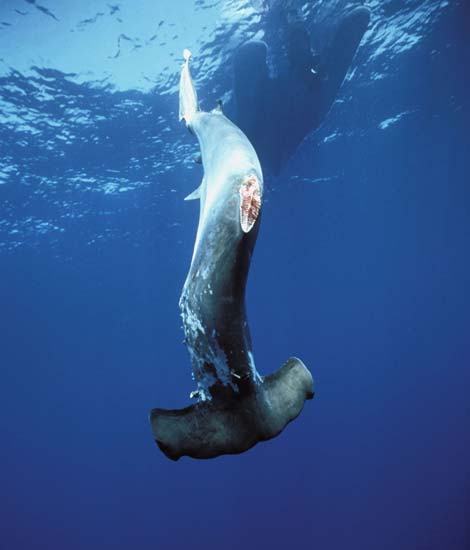
THE SLAUGHTER HAS TO END NOW - PLEASE TAKE IMMEDIATE ACTION AND NEVER GIVE UP HOPE
http://www.hongkong-companies.com/wo-loong-ho-sharksfin-company-limited-b1v6/
https://www.facebook.com/pages/Shark-Fin-Chinese-Bistro-Pensacola-FL/269850188099?fref=ts
PLEASE DEMAND CITES TAKES MORE ACTION NOW BEFORE MARCH OF THE FOLLOWING SPECIES LISTED ABOVE AND BELOW.
Mackerel Shark
Ground Shark
Dog fish
Bullhead shark
Angel Sharks
Frilled Sharks
Lemon Sharks
Saw Sharks
Hammer Head Shark
Reef Shark
PLEASE CONTACT / DEMONSTRATE / PETITION / - 33 DAYS LEFT BEFORE COP 16TH MEETING
CONVENTION ON INTERNATIONAL TRADE IN ENDANGERED SPECIES OF WILD FAUNA AND FLORA;
CITES Secretariat
International Environment House
11 Chemin des Anémones
CH-1219 Châtelaine, Geneva
Switzerland
Tel: +41-(0)22-917-81-39/40
Fax: +41-(0)22-797-34-17
Email: info@cites.org (email them hard to get a response)
CONTACT IUCN (International Union for Conservation Nature)
IUCN Conservation Centre
Rue Mauverney 28
1196, Gland, Switzerland
Opening hours: 8:00 to 17:30 Monday to Friday (except Swiss public holidays).
Phone: +41 (22) 999-0000
Fax: +41 (22) 999-0002
Dr J C Dimetri V.M.D, B.E.S, Ma, PhD , MEnvSc
Please support our fundraiser for Benue http://fnd.us/c/3PFe2
Kami ingin mengingatkan orang-orang yang mengirimkan pesan yang tidak diinginkan bahwa situs Anda akan menutup jika Anda tidak berhenti.
We wish to remind all that visit that should you spam “your sites and the server sending to individual registering shall be reported with IP shut down regardless of whom you are” we take spamming seriously and we advise you to cease now.
CHINA STATED IN 2010 AND 2011 THAT THEY WHERE GOING TO BAN CIRCUSES AND THE DOG AND CAT MEAT TRADE (LIES)
ANOTHER ASIAN GOVERNMENTAL LIE - MEDIA FALL FOR THEIR LIES - CHINA CANNOT EVEN REMOVE THE RHINOCEROS HORN OR IVORY THIS VIDEO BELOW IS JUST A PRIME EXAMPLE TO SHUT ACTIVISTS UP - THEY WILL CARRY ON AND STILL IMPORT..
11 months ago CNN stated that China was going to ban SHARK FINS - What China meant was (they where going to hide them from activists which is a common lie from Asia) video taken over three ago.. How coincidental.
Environmentalism - chapter 11 - Blood Fur

I don’t normally speak much on the fur trade however I have noticed in the last ten years that the trade has taken of massively again and it’s now a major international business once again with companies taking millions of dollars per year.
The trade never really did die off to a full extent however with much awareness and celebrity support and vast protests the trade was hit with a substantial loss in profit margin seeing some fur traders eventually putting down tools and moving on.
Climate change cannot be blamed on the sudden increase and influx in the marketing levels here nor can a drop in sales as of wide spread economic recession that’s seen hundreds of thousands made redundant to small high street stores pushed in to liquidation at a rate of 6 a day in the European Union, not to mention large chains this year in 2013 hitting the headlines of the press and media closing resulting in thousands of people made jobless.
We believe the massive upsurge in the fur trade has been caused by a lack of awareness and high profile figure’s that once went against the fur trade now going back to the trade which is seeing more younger people purchase fur thus more animals placed through a life of misery then extreme torturous death just for a fur coat.
I really cannot compare the fur trade to factory and cattle land farming or abattoir abuse as they are both as bad as one another and within the abattoirs the animals hide from cows mainly is used as a bi product to make leather chairs and upholstery, shoes and automobile furnishings.
The fur trade rose from the exploration era mainly of polar of arctic travel which furred animals were used to keep explorers warm, massive urbanization saw many families from these cold areas of mainly indigenous people then move closer inland of which they sold their furs and skins on the street markets to non-indigenous people thus passing on the trade to others creating a horrifying new trend without them really knowing what the future lay ahead for these animals from mink, rabbit, canine, feline, and bear to more.
Exploration teams from Russia, Canada the Americas and Antarctic also brought back with them forms of fur from Polar bear to Artic fox fur that was passed on to others thus seeing more people craving the “luxury” of a real warming fur coat, trim, to gloves, hats boots and more.
The fur trade can be roughly located back as far as 500/600 AD however the trade didn’t really pick of until the 1500’s when exchanges where made between Indians and Europeans. The Europeans are more to blame for the trade hence why there is by far more fur trade and capture in Europe than any other part of the world with China being to date the largest exporter mainly of imported “near finished products” from the European Union and America.
The label at the end of the coat or other material that’s last trade route was for example China will show produced or (made in) in China, however it doesn’t mean that it was mostly manufactured there. It’s much cheaper nowadays to export a luxury product to another nation where other added products and labour is much cheaper which companies practice now regularly. Once the item is finished for example a simple inner lining sown within with, a label will be placed on the finished product stating its final destination as “made in” but not “caught in or 80% produced in”.
The trade took off when the Europeans started their first polar explorations which then unfortunately saw fur “farms” established in North America back in the 1860’s then further on in Canada roughly from the 1890’s of mainly mink and wild fox.
Europe now accounts for some 60-70% of all fur farming with Denmark leading in the mink production of some 28% with China actually being the smallest producer along with the Baltic States, Netherlands and America. The Netherlands is now phasing out fur farming which we will see in the near 2020’s all fur farms banished from the Netherlands. There are 5 licensed mink farms in the Republic of Ireland and, between them, it is estimated that 200,000 to 225,000 mink are farmed a year in appalling conditions.
The United Kingdom banned all fur farming in 2002 along with Croatia then following along with Austria too. There is also wide spread condemnation of fur farming, trapping and trade of which is seeing many organisations and conservationists to animal welfare charities now fighting to end this sick repulsive and bloody barbaric trade.
In the early and mid-1970’s wearing a real fur coat was seen as an extravagance with many rich and famous people purchasing fur not really understanding the cruel and immoral practices that animals are put through when slaughtering is carried out. Nor do they see that trapping and holding in such solitary confined enclosures animals suffering from sores, rotten flesh wounds due to poor farm husbandry, species fighting as of overcrowding to psychological trauma, and death is some cases. The standards by “some” ethical animal welfare groups regarding farms around Europe, and internationally confirms the farms to only be in “fair to moderate standard with neglect and abuse rampant” which conditions are not even fit for a canine or feline.
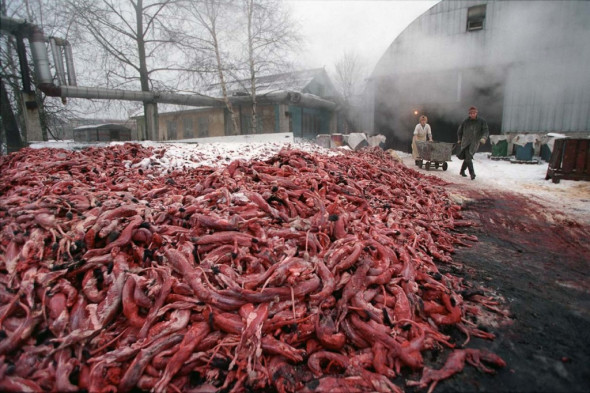
Emotionally not a pretty site - Picture taken by Sergey Maximishin of a Russian fur farm’s waste pile.
It would be politically incorrect for me to state that fur farming, production and trapping reduced in size as of “animal rights extremism” as this was on a low scale in proportion. And no matter how many (extremist) activities took place copious fur farming and production progressed as the insurance firms were willing to pay out for the damage caused by animal “rightists” and not necessarily the A.L.F/A.R.M as these “non- ALF/ARM combatants” were seen to be opportunists hell bent on causing criminal damage without a real motive or plan that saw many animals once the “rightists” had released them placed back into poorly maintained huts. Insurance companies where paying out to the big farmers as of the “demand” for their top quality skins even though it was disgusting.
However some smaller farms both internationally and within Europe where shut down via arson or harassment to damaging the farmers hard finically which insurance companies couldn’t keep up with continued pay-outs simply because they were new to the market or lacked financial gain to experience.
Demand decreased primarily due to high priced identical line products and lack of design lines from the designers and marketers that where still seen back in the 1970’s-1980’s as vastly uneducated in this area. Campaigns from groups such as PETA (people for the Ethical Treatment of Animals) did play a decent role in this area that aided more trade to decrease however it didn’t and never has halted it even with celebrity pressure and television advertisements to covert militant surveillance uncovering some shocking footage of fur farm cruelty.
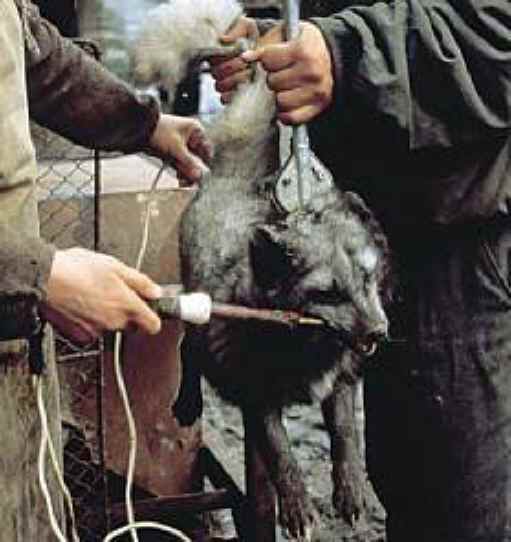
Fox - Electrocuted to produce less damaged garments via the traditional method of slaughtering.
Sales have regrettably though soared since the 1990’s mostly in China via imports and Europe with new technologies, news designers and more “youth” to the younger rich generation evolving wanting the latest design. Although the trade did take a pounding from PETA with many celebrities explaining the cruel and repulsive barbaric methods used to capture wild animals for fur via trapping, including “fur farming and breeding” and slaughter, some of these celebrities have gone back to their old ways and are again wearing fur.
Was it money and prospects of more sponsors that made them switch back to fur? We believe so hence why we are not a big affluent supporter of PETA as they aren’t a rescue as explained to ourselves by the United Kingdom PETA support in an email regarding Sunder the Elephant plus they use high profile dignitaries and celebrities to carry out their work whilst talking donations for this form of awareness which is more than bribing it’s dirty awareness that we despise.
The suffering;
I have outlined in bullet points the extreme suffering that many animals are put through below to gain fur;
- Animals such as foxes, mink, ferrets, and sables (an animal in the weasel family) spend their entire lives stacked on top of one other in barren cages with nothing beneath their feet but wire mesh.
- Animals at the top of the cages are a little more fortunate as they do not have urine and faeces falling on to them like the animals below as of the opened top cages.
- Animals that are caught in traps desperately try to free themselves thus causing immense pain, suffering to even eating their little legs of to save themselves that sadly then succumb to death.
- 9/10 many animals are forced to spend their lives in cramped confinements with other animals that have no shelter from the wind, rain, freezing cold or snowy temperatures, lack of water, feed and are left with the same bedding for days on end that they sit rotting in.
- Nearly all the animals suffer from psychological trauma from head bobbing, pacing, cage bashing, eating their own faeces, self-mutilation, and cannibalization, to species conflict.
- Minks that normally roam the wild spend most of their days frantically pacing up and down the cages scared witless trying to escape biting their own tail out of anxiety and cognitive stress.
- Fur farms inflict such terrible psychological trauma on animals that in one study of vixen (female foxes), half of the kit loss that occurred prior to weaning was attributed to infanticide behaviours, primarily mothers eating their young.
- Many animals suffer skin sores that are similar to bed pressure sores in humans however these sore aren’t caused by resting in the same position for many hours, they are regrettably caused by the animals sitting in their own urine and faeces.
- Many diseases form in farmed pens of fur farmed animals that don’t in wildly captured animals, the animals suffer tremendous pain, suffering, to prolonged death as of poor farm husbandry.
- After suffering through years of confinement, animals are killed and skinned for their pelts. Killing methods are typically cheap, crude, and performed in such a way so as not to damage the animal’s fur; there is no such thing as humane “euthanasia” on a fur farm.
- Caught, caged then farmed for the rest of their life the capturer either keeps the animals to breed on, or slaughterers them by breaking their neck, farmed animals suffer at the hand of their slaughterer from gassing in chambers of which the animals take up to 10 minutes to die or from strangulation, electrocuting via the anus and mouth, or just skinned alive as the fur is less damaged. (Can you imagine being skinned for life)?
- As quoted above on U.S. fur farms, one of the most frequently used methods of killing animals is electrocution: the “farmer” puts a metal clamp in an animal’s mouth, a metal rod in the anus, and sends a high-voltage current surging through the body.
- Then there is lethal injection of various chemicals that kill through paralysis, which can result in immobilized animals being skinned alive and neck breaking.
- More than 36 million animals die on fur farms around the world each year. Thirty-one million (or about 90 per cent) of these animals are mink. Foxes account for another 4.5 million, while chinchillas, sable, ferret (usually marketed as “fitch”), coypus (an aquatic mammal also known as “nutria”), and raccoon dogs (not to be confused with the North American raccoon), account for most of the remaining half-million animals. Due to the recent drop in pelt prices for mink and fox, some of U.S. fur farms have attempted to “diversify” by raising bobcat, coyote, raccoon, and beavers, along with coypus and rabbits — all in equally abhorrent conditions.
- When the United Kingdom, Scotland, and Wales stated this “Fur farming is not consistent with the proper value and respect for animal life. This is a moral issue that goes beyond welfare considerations. In the 21st century, animals should not be killed just for the business of stripping their skins off their backs … In a modern society there should be room for Government to make ethical decisions and it is right and proper for the Government to have introduced this ban”.
- The United States then stated this “the U.S. government seems not to agree with this assessment. In fact, no federal laws regulate how the animals on the nearly 400 fur farms in operation in the U.S. are to be housed, cared for, or killed, fur farming shall continue”.
Animals used for farming;
- Beavers
- Chinchillas
- Dogs and cats
- Foxes
- Minks
- Rabbits
- Raccoons
- Seals
- Bears
- Arctic fox
Animals that are used for the “illegal skin/pelt trade that often becomes mixed in with these brands are;
- Tiger (critically endangered)
- Cheetah
- Leopard (critically endangered)
- Snow Leopard (critically endangered)
Celebrities that wear fur that should be setting a good example on the younger generation;
These are simply a handful.
- Lady Gaga
- Lindsay Lohan
- Paris Hilton
- Nicole Richie
- Jennifer Lopez
- Beyonce
- Jay-z
- Katie Eary (Designer)
- Hardy Amies (Designer)
- Ulyana Sergeenko (Modelled for the Time’s)
- Kim Kardashian
- Ciara
- Jessica Alba
- GIORGIO ARMANI (Designer)
- Rihanna
- Kourtney Kardashian, Scott Disick and their son
- Chloe Green
- Rapper Big Boi
- Anna Karenina
- Poppy Delevingne
This is just twenty and there are by far many more such as David Beckham and Victoria Beckham, Kate Moss to Naomi Cambel all of these celebrities are still wearing and still flaunting the repulsive disgust without a care in the world of how that dead animal around their waist, neck or head suffered on the fur farm, or whether it spent days in a field trapped in a leg jaw trap suffering agonising pain and discomfort before having its neck broken in two.
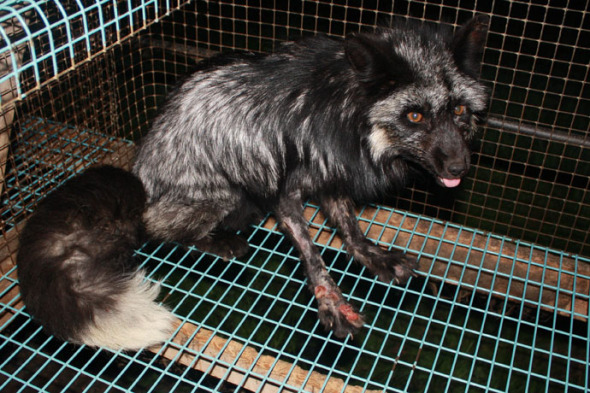
Sores on his feet, dehydrated, as well as psychologically disturbed this poor fox still suffered, in pain, eating his own feet out of pure anxiety and cage stress. This is no way to treat an animal, this is disgusting..
Conditions on fur farms throughout Europe are fair to standard with neglect common practice. An undercover investigation by Compassion in World Farming - Ireland and Respect for Animals in 2003 found that mink were kept in cages about 3 foot long and 1 foot wide, plus a small nest box at one end. Fox cages had a floor area of about 4 foot by 4 foot and were about 28 inches high.
A Council of Europe Recommendation Concerning Fur Animals (1999) lays down new cage sizes for fur animals, which came into place in 2010. The new cage sizes are slightly bigger than the cages that were filmed in a 2003 investigation. Fox and mink cages are usually in rows inside buildings that have open sides. The animals’ droppings fall through the wire mesh floor of the cages.
Farmed mink and foxes are fed on a porridge-like food made from chicken, meat and fish offal. This is placed on the top of each cage and the animals eat it through the wire mesh. Mink and foxes are confined in cages throughout their lives until they are taken out to be killed.
In a recent press article read here http://www.huffingtonpost.com/christina-anderson/wearing-fur_b_2239881.html?utm_hp_ref=fb&src=sp&comm_ref=false some celebrities give their reasoning as to wearing fur, if only they were taken to a fur farm or wild trapper to view how cruel the conditions are to what these animals go through it “could” change their ways to even supporting the no fur industry.. What annoys ourselves the most is some animal rights groups believe that “trapped animals” are treated (humanely) there is NO humane treatment of any animal that’s to be murdered for human gain.
Fur trade is cruel, barbaric and primitive and although it dates back to the cave man era does it give us the moral rights to then wear it as we believe the animals have been treated fairly? Although PETA claim to have scored victory over the some retailers as stated here “PETA has scored victories by getting major retailers like TOPSHOP, Forever 21 and J. Crew to stop selling fur items - and scored messes by pelting flour bombs at Paris Hilton when she was in London”. Its hasn’t made any difference to the TOPSHOP industry as seen here https://www.facebook.com/photo.php?fbid=593287620698148&set=a.188186667874914.55931.176078879085693&type=1&theater “Chloe Green, television personality, shoe designer and daughter of Top shop owner, paired her gorgeous Barbados holiday tan with a leather jacket with fur trim”
There are many fur retailers in the world from London Canada and Asia
http://www.thelondonfurcompany.com/about.htm
http://sitebuilder.yell.com/sb/show.do?id=SB0001741542000020
http://www.mayfair-london.co.uk/ladies_fashion-FursofMayfairLtd.htm
http://www.furinsider.com/ (Sweet fur stories)
http://www.hockleylondon.com/
http://www.yellowpages.ca/bus/Quebec/Montreal/Nicholas-Turgeon-Fourrures/1807739.html
http://www.kahnertfurs.com/
http://www.hongkongfur.com/
The top listed retailers sell mainly animal fur with little faux fur “fake mixed” nylon material fur within their premises. Prices start from $2,000 to $70,000 for a mixture of animal skin pelts.
In a 2010 investigation in 2010 the investigations showed the following;
In their own words;
For the past year-and-a-half, the Animal Rights Alliance investigation unit has been mapping out the Swedish fur industry. We have combed through environmental inspection protocols, court documents and research reports and what’s more - we have visited one-fifth of the 75 mink farms in Sweden to see them for ourselves. We have discovered major environmental violations by an industry that is already highly-criticized. Above all we have discovered the mink. Clever, beautiful wild mink imprisoned in shed after shed, housing row after row of small dirty cages.
Mink that will never see any water beyond what comes out of a water nipple even though they are hunters that naturally spend half of their life in water. Mink that express so-called stereotypical behavior, endless repetitive motion without purpose, a feeble attempt at dealing with stress and frustration.
We already knew that this would be the case. We were prepared for meeting curious eyes behind bars from animals that are so psychologically-broken that they incessantly circle their cages. We knew that it would be bad, but reality on the farms was worse than we could have ever imagined.

Scandinavian Fur Farm - Please click the link to view the horror
We understood that the mortality rate would be high. Several reports show that one out of every four or five animals die before they reach 6 months of age. But we didn’t know how they die – and how they suffer. Now we know. We have seen pups chewing on their dead littermates, entire litters where every animals has had its ear bitten off; young animals with gaping wounds on their heads; and fully-grown mink that twist and turn in agony, screaming in panic from pain and illness that minutes later ceases but only with their death.
It has been terrible to see all of this without being able to do anything about it. On our worst days, we felt completely powerless. But we’ve been driven to continue toward our goal – to make public the horrific animal cruelty that occurs on the farms. This animal cruelty cannot continue in silence.
The fourth paragraph of the Animal Welfare Act clearly states that all animals must be allowed to express their natural behaviours and that they must be protected from unnecessary suffering. But Sweden continues to allow mink to be bred and kept in mesh cages that are no bigger than 30 x 90 centimeters before being killed to produce an unnecessary luxury product that nobody needs. In 2003, the Swedish Commission of Inquiry into the Fur Industry gave Swedish fur farms until 2010 to comply with the Animal Welfare Act. Seven years later we can conclude that the Swedish fur industry has done nothing to improve conditions for mink on fur farms. It is high-time that the fur industry is made history.
The Animal Rights Alliance
The Animal Rights Alliance is a not-for-profit campaigning group that speaks for the animals. Founded in 2005, we have since then brought about the criminalization of bestiality, organized five veggie food conventions and exposed the Swedish pork industry through undercover investigation. Our work for the animals is completely dependent on donations, supporting members and active volunteers.
STEREOTYPICAL BEHAVIOR
“Animals shall be kept and maintained in an environment that furthers their good health and allows them to behave naturally”. – Animal Welfare Act (1988:534), 4 §
We have filmed evidence of stereotypical behaviour on thirteen of the fifteen farms that we visited. The stereotype, by which we mean incessant repetitive motion that serves no purpose, is a feeble attempt by the mink to deal with stress and frustration. It is a common symptom of an animal’s natural needs not being met “The majority of mink show typical signs of derangement that animals express when confined to areas that are too constrictive” – Sverre Sjölander, Professor in Zoology.
SICK AND INJURED ANIMALS
“A sick or injured animal shall be given necessary medical attention, if the illness or injury isn’t severe enough to justify the animal being put down immediately”.
Animal Welfare Act (1988:534) § 9.
We have found sick animals with infected eyes and ear; unconscious, convulsive and dead animals were found on two-thirds of the farms. Maimed, bleeding animals with torn-off ears, large gaping head wounds and missing limps were found on eleven of the fifteen visited farms. The horrific injuries are the result of fights caused by crowding, in shockingly small cages in the wild mink interact only to mate – but the injuries are also oftentimes caused by self-mutilation. According to 2 § of the Animal Welfare Act, animals are to be “treated well and are to be protected from unnecessary suffering and illness”.
“If a cow becomes sick, then we’re called immediately. But the mink are so many that if one animal becomes sick, then we’re not called – the animal has too little economic value for the farmer. We only get called if there is an epidemic. But every animal has an intrinsic value and the Animal Welfare Act clearly states that if an animal becomes sick, then it must be treated or euthanized. Large farms like mink farms have so many animals that it can take time before illness is discovered”
– My Leffler, District Veterinarian who used to work on mink farms.
DEAD ANIMALS IN THE CAGES
On 80% of the farms, we found dead animals in the cages – in most cases, the carcasses were left among other living animals. In many cases, the carcasses had been half-eaten by their mother and siblings.
“In the natural world, it isn’t normal for a mink to be forced to be around another dead mink. When it happens on a farm, it can lead to cannibalism because they are so under stimulated and don’t know how to react to the situation” – Mark Collins, Veterinarian
DIRTY CAGES
On 67% of the farms, we found cages where large amounts of faeces had piled up, oftentimes in thick layers. Mink avoid their own feces so when the cage fills up with waste, an already small space becomes even smaller.
ILLEGAL SEWAGE RUNOFF
Manure runoff could be documented at 80% of the farms. Mink manure contains high levels of nitrogen and phosphorus and causes contamination of water and soil if leaked out into the environment. Mink farms are therefore classified as environmentally-hazardous operations. By law, manure must be stored in such a way that it is sheltered from rain while preventing soil seepage.
ILLEGAL HANDLING OF CARCASSES
“Carcasses awaiting transport shall be stored in such a way that disease cannot be spread through contact with wild animals. The waste shall be stored separate from living animals” – Board of Agriculture Regulations 2009:6, section K 14.
Dead mink that had been left to rot throughout and around the farm property, or were otherwise disposed of improperly, were found on 73% of the farms, even though all carcasses must be immediately removed and stored, preferably frozen. Many carcasses had been left to rot for at least 6 months, since the pelting season last November.
CANNIBALISM
We have documented cannibalism on half of the farms. Mink females that kill their young and littermates that kill and eat one another is more the rule than the exception. Cannibalism is caused by stress and lack of stimulation. The mink have no release for their hunting instincts and those mink that fall victim to attack have no possibility to take flight or cover in their tiny cages.“Animals on fur farms have high levels of stress and this can cause cannibalism” - My Leffler, Veterinarian.
In a 2012 investigation the designer Giorgio Armani;
In PETAs own words;
A disturbing new undercover exposé of rabbit fur farms on two different continents shows that rabbit slaughter, no matter why or where it occurs, is always cruel. The video, narrated by actor Gillian Anderson, shows rabbits kicking and screaming during slaughter. After the skin is ripped from the rabbits’ bodies, it is sold to designers such as Giorgio Armani—who uses rabbit fur in his new designs.
The undercover investigations of rabbit fur farms in China and France—two countries from which Armani buys rabbit fur—revealed pitiful living conditions for rabbits, who are confined to tiny wire cages before they are slaughtered.
In the video footage from the investigation, workers at the Chinese farm pull rabbits out of cages by their ears and shock the screaming animals in the head with a handheld electrical device, often multiple times. Rabbits with slit throats can be seen twitching and shaking, with their eyes wide open, before they die.
Armani now sells fur, including rabbit-fur coats for babies and children. The new designs mean he has broken the promise he made just last year when he said, “I spoke with the people from PETA, and they showed me some materials that convinced me not to use fur.”
Please contact Giorgio Armani and urge him to keep the promise that he made by permanently removing all fur from his collections.
Please also send polite comments to:
Giorgio Armani Corporation
114 Fifth Ave., 17th Fl.
New York, NY 10011
212-366-9720
Still believe fur is ethically correct? We don’t and we are fighting this blood soaked war silently but surely and will cease this repulsive disgust.
Email us for more information at
externalaffairs@international-animalrescue-foundation.org.uk
info@internatinal-animalrescue-foundation.org.uk
Donate for a Zoologist in Benue http://fnd.us/c/3PFe2 read more in the link..
Together we can stop abuse – Together we can make change happen
Dr J C Dimetri V.M.D, B.E.S, Ma, PhD , MEnvSc
Apparantly the video below is “ecological mink farming the exact same as “Europe and Canada” so the narrator quotes..
Environmentalism chapter 10 - The Abyss
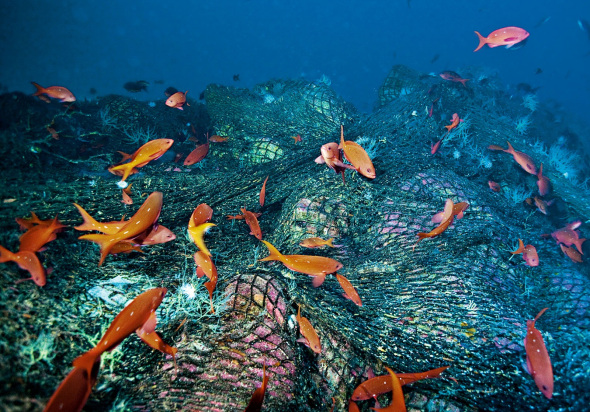
What lurks beneath the deep blue sea? Well in the way of sustainable fishing and poaching of Sharks, Seals and Whales in the Arctic, Pacific and Indian ocean that I shall explain more on in the next in depth document there is indeed a whole garden of aquatic life from botanical marine species, plankton, Octopus, to sea Snakes and the deep blue monsters of the oceans as some refer too which has gotten many scientists, marine biologists, botanists and conservationists excited.
On a recent article that we reported on within our South African site that is the information and awareness centre for our work within Africa https://www.facebook.com/pages/International-Animal-Rescue-Foundation-World-Action-South-Africa/199685603444685?fref=ts I recently reported in brief some of the most fantastic aquatic and oceanographic finds made by explorers using the DeepSee submersible that that explored the rocky ridges and mountainous terrain of the “Las Gemelas” which Author Mr Greg Stone reported on the rough terrains of the sea mounts deep below the surface of the water in 2012 of which a ten person team spent ten days studying the area then releasing all conclusive data which was absolutely intriguing to read and view.
The Submersible descended over six hundred feet below the surface of the ocean of which there are located worldwide hundreds of thousands of “seamounts” that rise from the earths floor, only three hundred have ever been explored and still to this very day we have not discovered even 50% of what lies beneath at such amazing depths that the normal diver would not be able to survive sue to the crushing ocean pressure that would kill him/her instantly.
Just to give you a glimpse of the size of these seamounts of which these scientists descended to over 600+ feet below the surface of the water, the Empire State Building stands at 1,454ft tall that’s including the lightning rod too, the height start of “Las Gemelas” is 1,115ft at the summit “ whereas the entire size from top to surface of the Gemelas is a staggering 14,000ft that see’s deep ocean currents rushing up then spiralling around the mount of “Las Gemelas” with a vortex type cyclone whooshing around the summit of the mount at 1,115ft as quoted.
You could almost be fooled into thinking that nothing lives at such insane depths however that’s where most people are wrong and it’s at these depths that scientists believe some form of “how our universe” evolved lies deep below. Before I briefly go in to what species of aquatic marine life lives at such depths let’s take a sheer look at “Las Gemelas” that’s truly one haven of breaming marine and botanical life untouchable by any poacher to hunter.
Las Gemelas is located at Cocos Island territory coastline, located in the Indian Ocean, southwest of Christmas Island and approximately midway between Australia and Sri Lanka. The territory consists of two atolls and 27 coral islands, of which two, West Island and Home Island, are inhabited with a total population of approximately 600 individuals mostly if not all, are native and indigenous.
The Cocos (Keeling) Islands consist of two flat, low-lying coral atolls with an area of 14.2 square kilometres (5.5 sq mi), 26 kilometres (16 miles) of coastline, a highest elevation of 5 metres (16 ft) and thickly covered with coconut palms and other vegetation. The climate is pleasant, moderated by the southeast trade winds for about nine months of the year and with moderate rainfall. Cyclones may occur in the early months of the year.
There are a total of 24 individual islets forming an incomplete atoll ring, with a total land area of 13.1 square kilometres (5.1 sq mi). Only Home Island and West Island are populated. The Cocos Malays maintain weekend shacks, referred to as pondoks, on most of the larger islands. The islands belonged to the British Empire from 1857 then were placed within the hands of the Australian government in 1955 which still flies the British flag within its now Australian flag.
On the morning of 9 November 1914, the islands became the site of the Battle of Cocos, one of the first naval battles of World War I, During World War II, the cable station was once again a vital link. Allied planners noted that the islands might be seized as an airfield for German raider cruisers operating in the Indian Ocean.
The islands or islets as they are better referred to have no rivers or lakes of which fresh water is extremely limited, the islet inhabitants either make do or rely on supplies from the main lands.
The Tour of Seamount is located deep out to sea from the islands and not as close as some may believe, and being within such mineral rich and warm waters an abundance of life forms from the summit to the entire depth of the ocean floor.
When scientists went on to explore Las Gemelas in 2012 they located a rich biodiversity of corals, sponges, crabs, sea urchins, star fish, to sea cucumbers, deep sea fish and exciting views of a complex underwater mountain system similar to the other three hundred other “explored” ridges and sea mounts throughout the oceans underworld internationally.
Although the exploration team found teems of deep sea fish and rich biodiversity that still to this day cannot be identified correctly or even named the facts are there, however in the numbers there are more fishers than protectors, and as with many MPAs the world over, it was witnessed that current efforts need further support within this region to protect this swarming ecological system or we could “loose it”. However let’s not jump one hundred paces forward and keep it at one step at a time. These areas are remote, they cannot be accessed easily, and other species of life can be introduced to sustain biodiversity and even the odds out for all thus leaving an area rich in natural habitat.
What lies at such gargantuan depths though, well this is the truly amazing part and that’s why I have only kept the write up short on this particular page and will go in to some detail on amazing biodiversity finds old and new in the “later”.. It truly is a wonderful ecosystem down there though. One that has to be explored more..
Explanation of a sea hydro-thermal vent ?
Well firstly lets view the hydro thermal sea mount more or less the same but they are a little smaller and are more commonly refereed to as smoking chimneys I have included the video for you to understand more on this as I think it’s a lot easier for you to “view and hear” in real time the difference between the two. To view more on this particular sea “chimney” please click the picture, alternatively please view the video below.
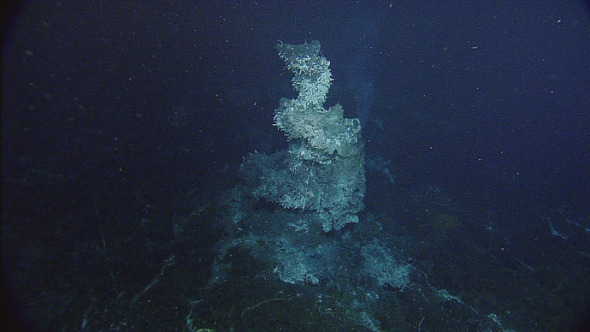
A hydrothermal vent is a fissure in a planet’s surface from which geothermally heated water issues. Hydrothermal vents are commonly found near volcanically active places, areas where tectonic plates are moving apart, ocean basins, and hotspots. Hydrothermal vents exist because the earth is both geologically active and has large amounts of water on its surface and within its crust.
Common land types include hot springs, fumaroles and geysers. Under the sea, hydrothermal vents may form features called black smokers. Relative to the majority of the deep sea, the areas around submarine hydrothermal vents are biologically more productive, often hosting complex communities fueled by the chemicals dissolved in the vent fluids. Chemosynthetic archaea form the base of the food chain, supporting diverse organisms, including giant tube worms, clams, limpets and shrimp. Active hydrothermal vents are believed to exist on Jupiter’s moon Europa, and ancient hydrothermal vents have been speculated to exist on Mars.
Explanation of a sea-mount?
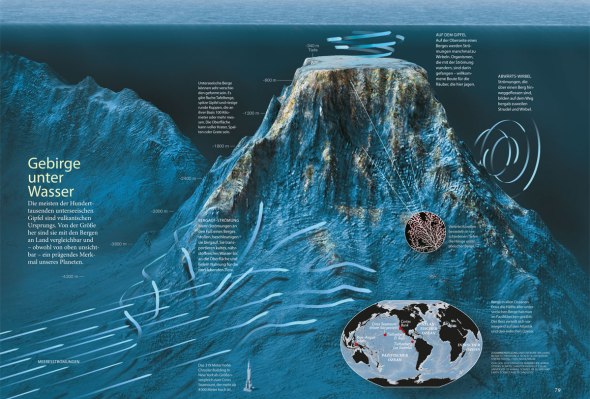
A seamount is a mountain rising from the ocean seafloor that does not reach to the water’s surface (sea level), and thus is not an island. These are typically formed from extinct volcanoes that rise abruptly and are usually found rising from the seafloor to 1,000-4,000 meters (3,000-13,000 ft) in height. They are defined byoceanographers as independent features that rise to at least 1,000 metres (3,281 ft) above the seafloor.
The peaks are often found hundreds to thousands of meters below the surface, and are therefore considered to be within the deep sea. There are an estimated 100,000 seamounts across the globe, with only a few having been studied. Seamounts come in all shapes and sizes, and follow a distinctive pattern of growth, activity, and death. In recent years, several active seamounts have been observed, for example Loihi in the Hawaiian Islands.
What lies beneath this particular Sea Mount that exploration teams located in 2012?
There is an abundance of aquatic sea, molluscs, plankton to sharks, squids and corals that live in this particular area of the Americas coast line, the further that one descends into the deep blue sea the warmer then colder the ocean layer becomes
One cannot travel any further below than this and what you are witnessing in the videos below is the surface of the earth miles below or to be precise over 22,000 feet below the surface level exactly four and half miles down to the earths layer excluding the crust which scientists, marine biologists, and geologists study as a way of knowing what “may of lived or still resides other planets to understanding evolution and geology land mass geography, and the planetary systems.
The five largest sea mounts that hold an abundance of biodiversity are located in between the Atlantic Ocean and just across the Pacific which are named as Cortes Bank standing and El Bajo sea mount at two points, Las Gemelas sea mount, Cross sea mount, with a sprawling sized mounts at Raja Amoat Islands.
Las Gemelas biodiversity in brief;
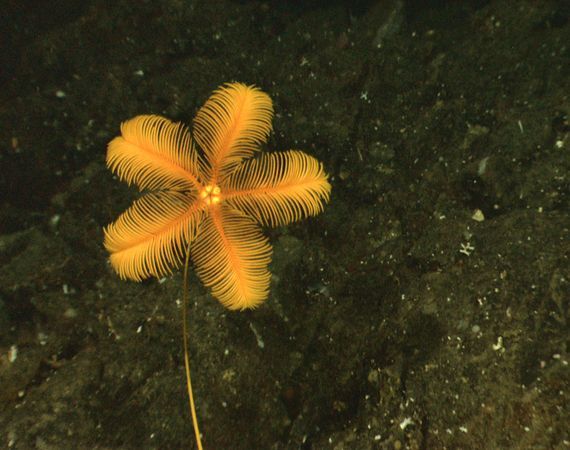
Sea Lilly - Crinoids are marine animals that make up the class Crinoidea (And to think they where a “plant”)
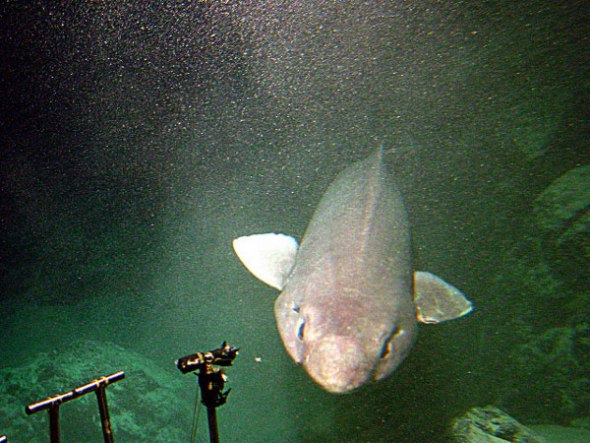
Pseudotriakis microdon - False Cat Shark, the behaviour of this shark is by far a lot different to that of the typical species of sharks, however they are endangered due to over fishing, hunting, and pollution
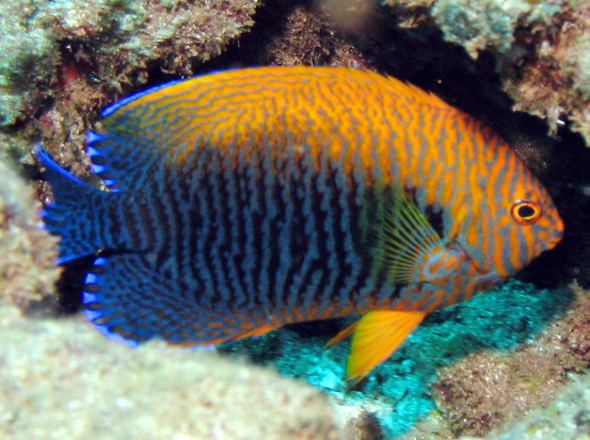
Centropyge potteri - Potters Angel Fish can be located near enough sea level, the Centropyge potteri swims just below that of the Humpback Whale at just above 1,300 feet
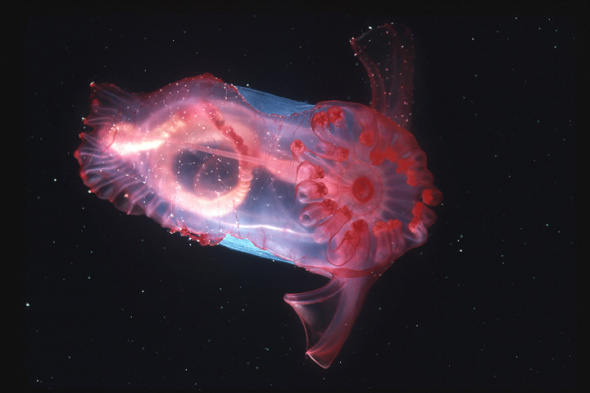
Enypniastes eximia - Swimming Cucumber located at depth of just under 13,000 feet in ice cold waters
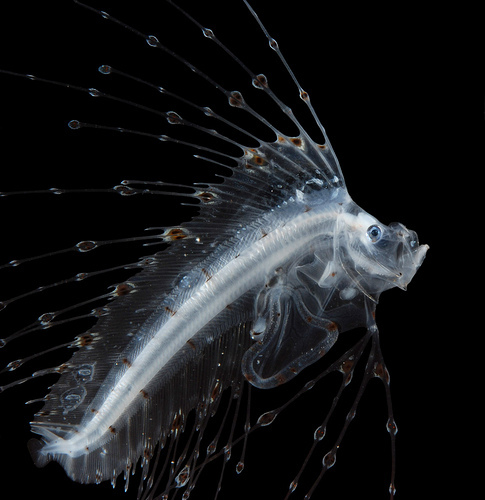
Ophidiidae - Cusk Eal (This species of fish live deeper than any other known fish on the planet to date)
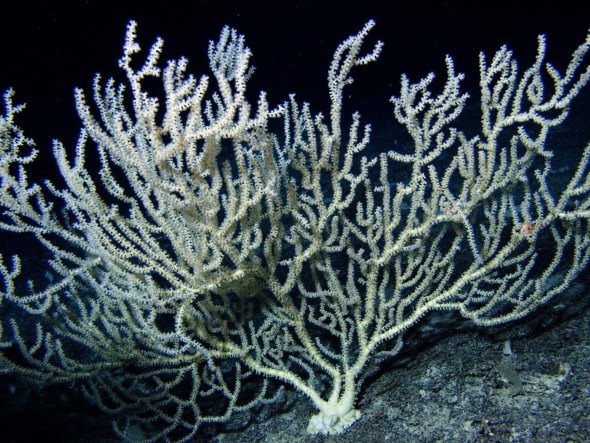
Isididae - Bamboo coral, this living species thrives along the 47 mile Puna Ridge (Quite fantastic to know that botanical species such as this thrive in such harsh conditions without photosynthesis)
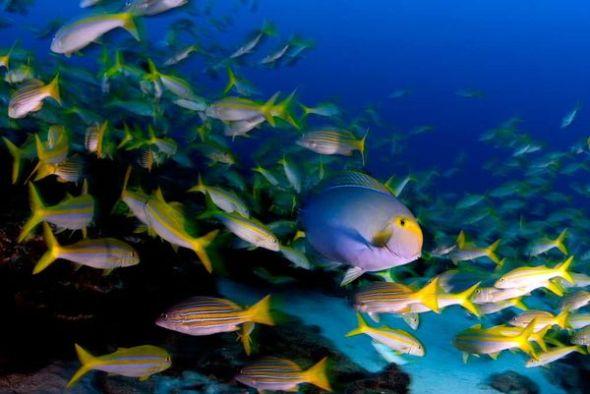
A little further on the corral lay Surgeonfish amid a school of yellow snappers
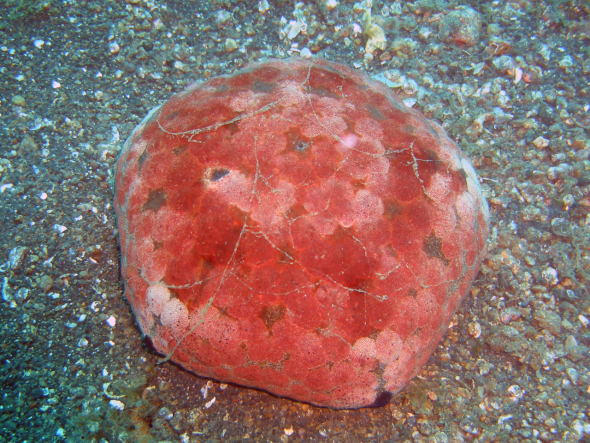
Culcita Novaguineae - Cushion Star (12,000 ft this has to be the lowest species of Star Fish to survive) as such low depths
I will continue on with this document in three parts as there truly is some fantastic species of life both above the sea level and below it spanning globally on the sea mounts that are rarely explored.. Who know’s what else is down there.
Please view the video’s below and please stay tuned for our Fox documentary that will be focusing on the European living fox.
Environmentalism Chapter 9 - Animal parts trade - Probing the problem part II
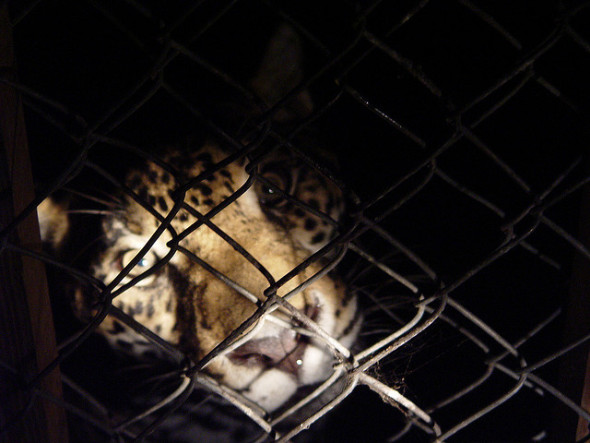
At the start of the month January we had the pleasure of screening a young wildlife photographers work by Pooja Gupta regarding the trade in Parrots and whether it is an ethical choice or not on purchasing them to just place within solitary confinements of a cage.
The pet trade is mirroring that of the illegal tropical pet trade of which many animals from around the world are stolen from their natural habitat then bred time again that provides an array of animals both for the “legal pet trade in tropical domestic tropical animals” to the illegal trade of which 90% of all funds now go to illegal arms sales and deals to fund terrorists.
These terrorists are mainly groups such as Al-Qaida, Abu Nidal Organization, Army of Islam, to the communist party of India and China, and internet terrorists such as Anonymous that claim to be “animal lovers” when in reality their battle is nothing more than fighting politics alongside all other domestic and non-domestic terror cells that cause havoc and disruption on an international scale without understanding the basic fundamental views of what they are fighting for, to even battling in the wrong perspective causing more harm than good.
One cannot preserve life by fighting on the computer, nor can one cannot save an animal online hence why we stand by our word and will not nor ever “support terrorists” that lack support of millions hence why they attack in certain ways and “areas” to gain support of weak minds” that fight with “emotions and love instead of education and hands on experience.
One of the main mission statements of the International Animal Rescue Foundation © is to create awareness of the key animal and environmental international issues that are effecting our way of living and Mother Nature that surrounds us. The illegal pet trade and animal parts trade is one of them and it’s now time to attack this head on and pin point the main spots that we now must focus on before the situation grows more out of hand.
As I stated yesterday 23 January 2013 the illegal animal parts trade and pet trade is now the number one easy money maker plus is now finically supporting terrorism in many nations online and on the ground. How bad though is the problem? I have outlined this below in brief;
- The global illegal trade in live species and animal parts — used for luxury accessories, Asian medicine or folk remedies like aphrodisiacs — is estimated to be worth up to $20 billion a year, Interpol quoted in 2011 this has now risen to a eye watering 34.6 billion a year “just for illegal pet trade”.
- Dealers will specialise in mainly big profit animals such as arachnids, reptilians, big cats, to birds and fish making on average for each species a whopping $30,000 to $90,000 (each) the more the sell of one species the quicker that species becomes critically endangered.
- It’s now a well-known fact that law enforcement and customs are poorly trained on recognising endangered species to taking action with the offenders getting of scot free or with just a slap on the wrist.
- Links between the animal tropical pet trade and narcotic smuggling are now identical with animal trafficking now seen as best opportunity to make money easily and quick without the authorities being alerted as narcotic smuggling would be.
- According to a series of U.N. studies on the illicit traffic of wildlife, wildlife experts claim that Chinese, Japanese, Italian, and Russian organized crime syndicates are “heavily involved in illegal wildlife trade.” While such claims do not suggest that organized crime syndicates are involved in all forms of wildlife trafficking, the United Nations reports that syndicates are “strongly present” in some sectors. Further, even when criminal syndicates are not controlling the trade, much of the trafficking is commonly described as “highly organized…” Anecdotal accounts also indicate that some organized groups are involved in both illegal wildlife and human trafficking.
- Although evidence has been reported as “slim” to link the pet trade to terrorism the evidence that’s been located so far by Interpol states that Asia and Africa are the two number one key groups that are profiteering, trafficking and involved in illegal arms deals to terrorism of which “animals are the number one sufferer”.
Two incidents from the last few years show;
In a major 2007 sting operation by the U.S. Fish and Wildlife Service, the largest of its kind, undercover agents spent three years infiltrating a ring smuggling endangered sea turtle skins from the shores of southern Mexico to as far north as Chicago. Illegal drugs turned up on both sides of the border over the course of the investigation, U.S. Fish and Wildlife agent quoted.
In the same investigations another incident showed;
In the United States, marijuana was seized at one of the raided warehouses filled with animal skin boots. On the Mexican side, smugglers offered to ship cocaine along with the hides of turtles whose numbers are rapidly dwindling in the wild. “It was just thrown out there like ‘Hey, we can also move this stuff if you want.’… They are pretty much moving anything from pets to animal parts.
The pet trade and illegal animal parts trade we all know is big but does it ever enter into the “professional business’s” and then people’s homes? I mean you would expect that professional pet stores that are selling freely handing out advice to advertising on television would know the difference between an “endangered species” and a pet yes?

“Since the World Trade Center Attacks the illegal animal parts trade and exotic pet trade has driven terrorism vastly funding organised crime from narcotics to the military arms deals in Asia and Africa”..
Location Beirut;
Grey parrots and vervet monkeys mingle with cats, dogs and hamsters in many of Lebanon’s pet shops, but if you want the really exciting animals, you have to ask behind the counter.
Lions, panthers and bears—in fact many of the mascots from the American sports franchises—are just a few of the animals you can buy here. One pet store in Beirut—whose owner requested anonymity for fear of protests from animal rights groups—offers a chance at owning your own piece of the wild. The owner received a degree in veterinarian studies in Russia and, unlike many pet stores here, the six dogs strategically placed in the window are clean, healthy and vaccinated.
But these aren’t the only animals he sells. He can get you lion and bear cubs, leopards, even a baby crocodile. Sitting behind a tidy desk surrounded by bags of pet food, he describes the process of how a wild animal is ordered and smuggled into Lebanon.
It starts with a deposit (lions, for example, require a down payment of $1,000-$1,500). The pet store owner then puts in an order to a Lebanese middleman who contacts a farm in neighboring Syria, where lions are raised for sale. The animals are placed in boxes and loaded into taxis that head for the Lebanese-Syrian border. At the border the taxi driver will often bribe a guard around $10, usually saying there are dogs in the crates.
According to Jason Mier of Animals Lebanon, chimpanzees in central Africa can go for as little as $20. This means buying and reselling the animals abroad can bring in a huge profit. (Photo courtesy of Animals Lebanon)
The pet store owner offers a video on his iPhone as proof of the process. In it a lion cub is jammed into a metal kennel most likely meant for domesticated dogs or cats. A man whose face is out of the frame kicks the cage.
“[The animals] have a better life here [in Lebanon] than on the farms in Syria,” says the pet store owner, adding that carnivores like lions and leopards are often underfed because farm owners can’t afford to feed them meat. But despite his concern for the animals, his motives are economic. He says orders are sporadic and so exact figures are hard to pin down, but one lion cub tends to go for $3,000-$5,000. In the right market, with the right client, the cost can go as high as $10,000.
Current Lebanese animal welfare legislation consists of just three sentences and calls for a maximum penalty of less than $15. In addition, it is rarely enforced—Animals Lebanon states “extensive research has not shown this law used even once in the past twenty years.”
And though Lebanese parliament voted in July to become the 176th member of the Convention on International Trade in Endangered Species, few here seem convinced that the trade of exotic animals will stop. Because the trafficking of exotic pets is illegal in Lebanon, it’s hard to know exactly how many wild animals are smuggled into the country every year. The pet store owner estimates there are around 40 locations in the country that keep exotic pets on private or public display—from zoos to pet stores and even family homes.
“The phenomenon of keeping large ‘dangerous’ animals as pets appears to be gaining popularity in the Middle East,” writes Richard Thomas, communications coordinator for the wildlife trade monitoring organization TRAFFIC International, by email. “We receive regular report[s] of … Cheetah, Lions, Tigers, etc. in that region.” A lion is rescued by Animals Lebanon from an Egyptian circus. (Photo courtesy Animals Lebanon)
Lebanon and Syria are not the only countries implicated in this trend. Jason Mier, executive director of Animals Lebanon, says that in addition to “at least four zoos in Damascus,” Central and West Africa are hotbeds for wild animal smuggling.
Mier, who worked on animal welfare issues in a number of African countries before coming to Lebanon, says poverty drives the exotic animal trade in many countries. He says he saw vendors in the Congo selling baby chimpanzees for $20, an amount that represents a “huge profit when people on average earn 23 cents a day.”
According to Mier, other countries that supply Lebanon include South Africa, Ukraine and Bulgaria (where Mier says you can rent a lion cub for a day). According to the pet store owner, crocodiles are often smuggled through the airport from Malaysia labeled as “fish.”
So who is buying and raising these animals? Especially at time when the Lebanese middle class is struggling with electricity and water shortages? “The keeping of exotic animals as pets is centuries old,” explains Thomas. “Cleopatra is believed to have owned a pet leopard named Arrow and possibly even a pet tiger too.” But history aside, Thomas says prestige among Lebanon’s upper crust is the real reason people want to have exotic pets.
“The impression I have is that it has become something of a fashion/status symbol to own a dangerous pet,” he writes, “which is why it’s growing in popularity.” According to the pet store owner, the secluded villas of the Lebanese elite outside Beirut are the destination for many of these animals. They are kept in cages or allowed to roam in fenced gardens.
Souraya Mouawad grew up in such a villa, one that was briefly home to a doomed leopard named Moulou in the 1970s. Speaking on the phone, Mouawad, who was born and lived in Africa as a child but moved to Lebanon as a teenager, fondly remembers the adored childhood pet.
http://animal.discovery.com/tv-shows/fatal-attractions/lists/facts-exotic-pet-trade.htm
“My father bought a big house in Tripoli with lots of space and he went back to Africa. We settled there—my sister, my mother and my aunt. When my father came back he brought us a 3-month-old leopard.
Foxes are one of the few wild animals native to Lebanon that are kept as exotic pets. (Photo by Carine Mechref) “We named him Moulou. When we first got him … we stayed at the Carlton, a five-star hotel. The valet parking man who was wearing white gloves brought steak for Moulou to eat. Moulou slept in the Carlton hotel garden that night and when we woke up he had broken all the small plants and trees.”
As infants, wild animals are often cute and manageable. But Mounir Abi-Said, founder of a wildlife preservation in Aley (a town northwest of the capitol), says wild animals are often locked in small cages and left in poor conditions once they become older, more dangerous and more expensive to care for. “Moulou was an adult at one year,” says Mouawad of the leopard’s transition from a cuddly playmate to a wild animal. “He ate 10 pounds of fresh meat a day and drank 5 liters of milk.”
Despite the family buying a large parking area so Moulou could get his necessary exercise, Moulou suffered from back paralysis and couldn’t run. “We didn’t know he should be in Africa and not with us,” says Mouawad, who is now founder of Animals Pride and Freedom (APAF), an animal rescue organization.
As danger from Lebanon’s civil war rose in early 1975, Mouawad and her family decided to return to Africa, but Moulou couldn’t travel in his condition. After numerous attempts at finding a new home for the leopard, Mouawad’s father had the animal secretly euthanized just as the family left for the airport.
When Mouawad learned the truth years later, it caused a deep rift between her and her father. “I didn’t eat at the same table with my father for four years and I didn’t talk to him for four years,” she says. The vervet monkey is commonly found in Lebanese pet stores. (Photo courtesy of Carine Mechref)
Exotic pets often meet tragic ends. Owners are faced with the reality of a full-grown wild animal in their house and among their family. For some, like Mouawad, there is an emotional attachment; in other cases the animal is simply an accessory that has grown inconvenient.
Mier remembers one recent case when a chimpanzee was left on the side of the road next to a private villa. Despite the poor conditions, Mier was unable to do much legally and it took months to convince the owner to hand over the chimp to Animals Lebanon so they could relocate it to a sanctuary.

Lebanon’s lack of laws—and the government’s inability to enforce them—pose challenges to animal rights supporters. While it doesn’t replace national laws, Mier maintains that CITES’s framework will help Lebanon develop proper laws as well as educate officials to take appropriate actions toward the wild animal trade.
“[In other countries, CITES] slowed smuggling and saved some animals from going extinct,” said Mier.
Mier contends that it will take more to slow the “multibillion-dollar industry” that is the exotic animal trade here.
Location Japan; 2012
Animal charities have condemned NOAH: The Inner City Zoo for selling penguins, meerkats, alligators and monkeys. The creatures are caged in one squashed room — on the second floor of an office building.
Set up in 1999, NOAH (Nature Orientated Animal House) also sells otters, megabats, sloths, foxes and a crane — alongside several other exotic animals. Some of the animals cost thousands of pounds to buy and customers even have to pay a £4 entry fee to look around the shop.
One onlooker said: “Most animals were quiet, as if they’d come to terms with their enforced captivity. Many are in tiny cages, and the owls are tightly fixed down so they can’t fly.
Josey Sharrad from the International Fund for Animal Welfare, said: “IFAW absolutely condemn the treatment of these animals. “These conditions cause severe stress for the animals which can weaken immune systems and leas to risk of disease. “When these creatures are available for purchase, it confuses people as to whether an animal is really at risk of extinction or not.”
According to their website, NOAH has just recently taken stock of marmosets, fennecs and squirrels — all as babies. Prices are often on request, and a prairie dog — a type of rodent — was priced at £1,500. Alan Knight, Chief Executive of International Animal Rescue said: “We would urge people to stay away from this pet shop and others like it. “Exotic animals should live in the wild as nature intended, not in captivity as a source of entertainment and prestige, and to line the pockets of greedy pet shop owners.
“Breeding and selling wild animals as exotic pets is cruel and irresponsible. “Undoubtedly many of them are eventually abandoned when they become ill or grow too large and too strong for their owners to manage.” Owner, Kenji Takahashi, 59, insists that he obeys all the rules of Japan.
He said: “I may not agree with all the laws of Japan, but I must obey them. “My premises may not be perfect and the space we have for each animal is not as big as we would sometimes like. “But the same could be said for any zoo across the world. “What I am trying to do is increase the love that humans have for exotic animals.”
In the United Kingdom one of the last continents that one would least expect to find or even know of anyone selling or profiteering from the exotic pet trade of which you would think that this is simply a taboo and that the United Kingdom is known for its love of animals and nature wouldn’t be involved in such crimes.
Regrettably that there are many illegally exotic pets entering England and leaving the England every day that customs are still “not trained” in identifying to going through every single item in the crates.
In the UK, wild animals deemed ‘hazardous’ are licensed under the Dangerous Wild Animals Act of 1976. However, this legislation was created mainly to protect the public rather than ensure high standards of animal welfare.
In the UK there are known to be at least 154 big cats held in private hands (including 12 lions and 14 tigers), almost 500 assorted monkeys, over 250 venomous snakes and 50 members of the crocodile family. (Big cats in Britain, 2006)
Between 1994-2004, the European Union was one of the largest importers of wild-caught birds, importing a massive 9.5 million birds of species listed in the Appendices of the Convention on International Trade in Endangered Species of Wild Fauna and Flora (CITES) – equivalent 87% of world trade. However, as a result of the avian influenza outbreak and campaigning by the RSPB¹, APA² and others, July 2007 brought permanent ban on the import of wild birds into Britain and the rest of the European Union.
Location; United Kingdom Leeds 2010
A couple who ran a pet shop turned their hand to illegal trading in the skins and bones of some of the most endangered species in the world.
Graham and Norah Pitchforth sold on eBay, among others, a stuffed lion cub and birds of prey, monkey skulls, flying fox skulls, butterflies, snake skulls and the skin and skull of a penguin.
Other species included baboons, macaques, otters, macaws, rhinoceros, kestrels and a porcupine. The Pitchforths ran a legitimate business, called Get The Bug, on the internet auction site, selling specimens of animals they had imported or acquired – but some transactions were outlawed. They each pleaded guilty earlier this year to multiple charges relating to the importing, exporting, selling and possession of endangered species after failing to get necessary documentation.
Leeds Crown Court heard that the couple sometimes labelled packages as other items, such as “table decorations”, to avoid suspicion, and on one occasion agreed with a seller to claim that a stuffed snowy owl was a gift when he had paid £150 for the item. The pair, from West Yorkshire, were yesterday sentenced to 44 weeks’ imprisonment, suspended for 18 months. They were also ordered to carry out 200 hours of unpaid work.
The court was told that the couple, of Wrenthorpe, Wakefield, had run a pet shop for 20 years and were “extremely well-thought-of” in the local community. Graham Pitchforth, 61, had an interest in collecting specimens and taxidermy and had a part-time job lecturing students at Wakefield College about endangered animals. The pair set up the eBay shop and sold 3,637 animal specimens – of which 22 were found to have been traded illegally between October 2005 and December 2006, making a profit of £2,329.16.
The court heard that the couple failed to get the relevant permits for the importation, exportation or sale of these 22 transactions, despite knowing they were needed. Sentencing, Judge Christopher Batty told them: “You fall to be sentenced for 22 transactions made in the full knowledge you were not entitled to make them. You did and knew you did not have the necessary authorisation so to do. Much of your business was legitimate, and as such it is clear that you had the relevant knowledge and expertise to deal legitimately in the trade of endangered species.”
Judge Batty said Norah Pitchforth, 65, received a police caution in July 2005 for offering a barn owl for sale without the appropriate permit. On other occasions, the couple were told that some skulls required certificates but continued without and a consignment of hornbill casks exported to the United States was seized for not having proper documentation. Some transactions were arranged by email, which the couple sometimes asked to be destroyed following the sale.
The couple held hands and Norah Pitchforth repeatedly wiped her eyes as Judge Batty told them he would suspend their sentences, despite the serious nature of the crimes.
He said: “I have thought long and hard today about what to do with you. This was a deliberate flouting of the regulations for commercial gain.” The pair admitted 12 counts of illegally exporting, three of illegally importing, seven of illegally selling and two of illegally possessing specimens under the Customs and Excise Management Act.
3,637 Animal specimens sold – 22 of which were found to have been traded illegally.
No continent is immune from the illegal wildlife trade or the exotic pet trade and although this et store was not you “average Joe Blogs” it still accounts for a pet store that kept no records of which somewhere in the United Kingdom people have in their possession “critically endangered species” and this is why International Animal Rescue Foundation © never fuels, or supports such activities that are wiping out our species every year.
The Convention on International Trade in Endangered Species of Wild Fauna and Flora (CITES) has brought together 175 nations to combat the illegal and unsustainable wildlife trade through a uniform regulatory regime and increased coordination on a global scale. The U.S. Fish & Wildlife Service’s (Service) Division of Management Authority and Division of Scientific Authority, as well as the Office of Law Enforcement, are primarily responsible for implementing and enforcing CITES in the United States.
Recently, CITES founded the International Consortium on Combatting Wildlife Crime (ICCWC), a collaborative effort between the CITES Secretariat, INTERPOL, the United Nations Office on Drugs and Crime (UNODC), the World Bank and the World Customs Organization (WCO). ICCWC was formed to increase prosecution and punishment for caught smugglers and poachers as well as increase law enforcement in developing nations. Visit the CITES website to learn more about ICCWC.
Yesterday we focused on two fundamental and known factors of which we are fully investigating, Climatological destruction we are 100% certain is fuelling the skyrocketing demand for more wildlife/pet products, because the normal TCM/TIM markets are running short of medicinal plants that the TCM/TIM markets are mostly made up of.
As quoted we have to look at all sides of the problem and not just focus on the poacher and “demand for fake medicine to the individual consumer purchasing for entertainment and consumption purposes” because this is NOT the key element that is funding the trade of illegal animal parts and the exotic animal trade of illegally imported animals.
The trade is also being funded by “ourselves without knowing” which we are investigating and and now producing an international survey as well as asking other a-like wildlife organisations for their help to now pinpoint even the smallest of problem areas, highlight them, and then deal with them. You can answer the survey anonymously below and please be truthful. We will not know whom has answered to what location in the world your based. The survey is a simple yes and no answer poll with multiple questions.
We will only accept one answer per question and one cannot re-answer the poll of which gives us accurate results. We thank you for your honesty and feed back and would be most kind if you would share this survey to your friends, family and Social Media friends.
The other main factors are;
- Pet trade (lack of awareness and education) Purchasing exotic pets that have been illegally imported which the customer purchases “unwittingly” not knowing the damage they are causing to vulnerable, endangered, and critically endangered species.
- Tourism (Tourists purchasing trinkets or souvenir’s from beach sellers, to flea markets, again the buyer unwittingly knowing they are funding the illegal wildlife trade/pet trade) from purchasing products.
- EBay and other Internet sales sites (International Animal Rescue Foundation © has two operation’s in progress so far, one running from 2011 and the other from 2012 Operation Trojan horse – OTH) is focusing on the illegal pet and animal parts trade in seven locations internationally and Operation Swift Cover OSC – is primarily focusing on international online, market and black market sellers to tourism and two other areas that are not named for security reasons.
We must look at the poacher as the harvester as that is all he or she is they are not the seller, producer, courier, or trafficker they simply harvest the goods via an order from the “top of the pyramid” above which in reality is the “least of our worries” and/or the live animals of which they then pass the item/animals on to the courier that then reach the producer/buyer of which the item/animal is then sold on to the “distributor” = a purchaser being the last “action” trade that makes the sale. The profits are then fed In to terrorism/narcotics and the vicious circle goes round again.
Opportunistic poacher/trafficker
The opportunist mostly derives from a poor family with very low income or an individual that needs financial support, and this we all need to tackle and nip in the bud as it is contributing to barbaric slaughter and the exotic pet trade. The Opportunist mainly derives from a poor background and is only seeking profits for their family or themselves of which the government have let them down. So “Community relations /education and AWARENESS” is needed vastly to help in this area.
Within first world nations opportunistic theft is similar to poaching/smuggling although it doesn’t include animals but rather stealing money from the government’s via benefit fraud, illegally working with no permits to basic shop lifting as the opportunist is looking for “a better life or way of living”. So in reality the the poacher/smuggler is no different to that to the modernized thief hence why community relations need to be built to tackle this area.

This area we must address and with Africa and Asia being the number two nations involved here within trafficking/poaching/ and exotic pet trade we must deal with this sensitively and with love and consideration too that will in turn cease the trade of the “opportunists” therefore killing part of the “the problem”.
E-bay and other international buy and sell online sites must be tackled too as there simply is not enough online trade and customs monitoring to cease the sales of inland and international sales of pet/animal parts sales.
January 23rd 2013 we located an Eastern Russian buy and sell site that had within it’s hunting listings Tiger and Leopard skin’s for sale with the opportunity of satisfying the customer with “exotic skins and endangered animal parts”. This has since been reported to law enforcement of which the surveillance team working within Operation Trojan Horse’s Unit have deployed more people to this particular area to probe.
You are breaking the law if you commit an act of poaching/purchasing/distributing/or dealing in endangered species to exotic pets.
Please don’t be a statistic or you could end up in prison.
Please click on the link below to stay up to date with news, view and media on animal and environmental affairs.
Dr J C Dimetri V.M.D, B.E.S, Ma, PhD , MEnvSc
info@international-animalrescue-foundation.org.uk
WARNING IF WE/LAW ENFORCEMENT SUSPECT THAT YOU ARE POACHING/TRAFFICKING/LAUNDERING/DISTRIBUTING/AND OR DEALING IN WILDLIFE PRODUCTS YOU WILL BE LOCATED AND PROSECUTED, ANTI POACHING TEAMS ARE NOW SHOOTING POACHERS ON SITE DON’T BE A STATISTIC ARE A FEW $$ REALLY WORTH YOUR LIFE?
Many people ask why we don’t support reserve’s and zoo’s to captivity - Please watch the video all the way through below.
Environmentalism Chapter 8 Animal parts trade - Probing the problem part I
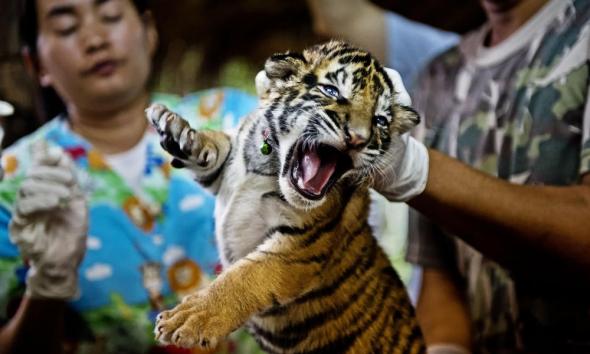
Traditional Chinese medicine (TCM) dates as far back as the Shang dynasty (14th–11th centuries BCE) although Shang didn’t actually understand the whole concept of Chinese traditional medicine it then later took of exactly over two thousand years ago that’s seen Asia’s economy benefit.
Mainly used in China, Vietnam, Taiwan, Cambodia to even Africa it’s seen as an alternative to synthetic medicines (manmade) that can have acute side effects to even seriously harming ones health if not administered correctly to overdosed on.
Herbal medicine, acupuncture, reflexology, and massage was the main concept of traditional Chinese medicine at which point really only plant based tinctures where prepared then administered, the same type of medicine was used back in the American years of President Abraham Lincoln to even Europe although little is really known of this very crude western type of practice.
Traditional Chinese medicine has taught many thousands of “registered” practitioners in Asia from the books of the Emperor’s Inner Cannon http://www.unesco.org/new/en/communication-and-information/flagship-project-activities/memory-of-the-world/register/full-list-of-registered-heritage/registered-heritage-page-4/huang-di-nei-jing-yellow-emperors-inner-canon/ and the other ancient old book Treatise on Cold Damage http://history.cultural-china.com/en/60H11290H14411.html
It is unclear to this day when animals where used in the traditional Chinese medicine market however what we do know is that the market is now thriving on animal parts more today than it ever did back in the early 1940s of which we can locate some “form” of evidence which we believe originated from Tibet from reading the Traditional Medicine Handbook that one can view more no here http://www.vitcm.org/?page_id=125
From this point Korea then started to become more involved within the alternative medicine market of which again very “few” animals where used, and to be precise the classic traditional book of alternative Asian pharmaceuticals states from the Tibetan era that 442 were plant parts, 45 were animal parts, and 30 were minerals. Moving forward to present 2013 we now see very more plants are used with many more “species” of animals mainly from the Asian zodiac chart of 12 animals that include Rat, Ox, Tiger, Rabbit, Dragon (lizards are used in TCM) Snake, Horse Sheep, Monkey, Rooster, Dog and finally the Pig.
Traditional Chinese “herbal” medicine then became more used in the 1970’s within America within forty states of which fifty oriental medicine colleges where introduced for students of all backgrounds to train on.
In Korea, more than 5000 herbs and 7000 herbal formulas are used in Traditional Korean Medicine for the prevention and treatment of ailments all deriving from traditional Chinese medicine, Japan followed on from which they refer to (TCM) as Kampo meaning Han Chinese Medical Formulas http://www.ncbi.nlm.nih.gov/pmc/articles/PMC538517/
However cultures have changed and the world has evolved into a self-destructive planet that now see’s many animals slaughtered internationally to tortured in medieval practices to sustain this ancient form of medicine from which China is the main player and trade route from which animal parts are shipped to, then processed to transported to their final destination.
Taking the million year old Rhinoceros for instance once poached the Rhinoceros horn[s] are then transported over the border once the slaughter has taken place and can be in Asian medicine markets within a three to four days.
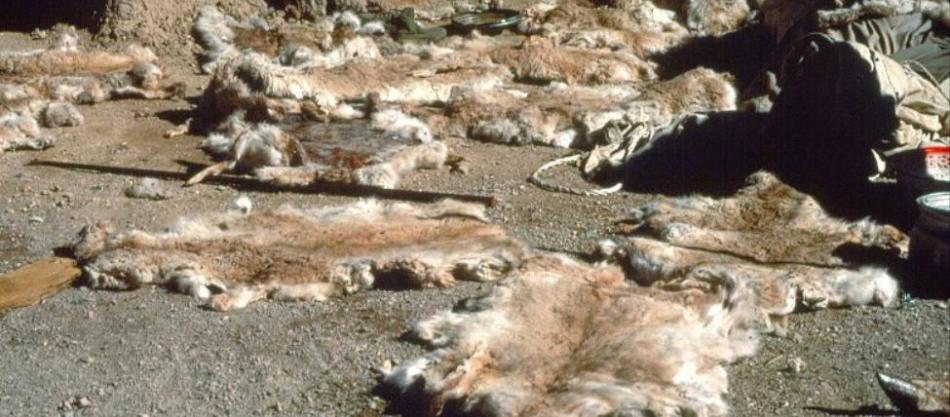
The World Health Organization (W.H.O) quoted that nearly 80 per cent of the world’s population depends for its primary health care needs on medicines derived from plants and animals and with disease and illness being rife in third world nations especially Asia then Asia makes up most of this eighty per cent mainly due to poverty.
What’s changed though? Why are we seeing now so many animals slaughtered for medicines that the Asians and we know don’t work as traditional medicines, when you have the other alternative called “Homeopathy” that was first really put into practice in 1700’s by the German physician and chemist Samuel Hahnemann whom lived from 1755-1843. We simply don’t know the complete answer to this however we are searching for the truth and below I have placed some interesting points that we are working on.
- Climate change
- Usage of pesticides, herbicides, insecticide’s, fungicides,
- Over urbanization
- Air pollution and land pollution
- Season weather disruption
These five points are fine indicators of what we have noticed now for some years to be contributing to lesser agricultural plants and herbal stock used which regrettably is equaling to more animals destroyed. I have explained below in brief detail below of our findings to date.
- Climate change – Contributing to fewer herbal crops via extreme unpredictable weather
- Usage of pesticides – Contributing to the destruction of insect and bud pollinators
- Over urbanization – Contributing to land destruction thus reducing land mass to plant reproduction
- Air and Land pollution – Contributing to poorer air quality equaling decreased photosynthesis whilst land pollution being a major factor that leaches toxins in to the ground plus debris pollution
- Seasonal weather disruption – Contributing to moister winters and dryer summers = disruption in agricultural and herbal crops growing and budding at the correct time of season = lower yield
Civil war and international conflicts I shall go in to detail further on as this does require a lot of attention and awareness.
As conservationists and animal welfare professionals we cannot say that demand is just the number one factor here that is driving the illegal animal parts trade, there has to be some form of reason for us to view further beyond demand and it was not until recently going through some 4,000 documents that we started to view a pattern that “may” or may not be the reason why “demand” is high.
Yes there are poor families in Asia just like there is in any other continent, but within these continents that are non-Asian there are very few if any traditional medicine markets like there are within the borders of Asia which has lead us back to “climate change”.
I may sound like a broken record however International Animal Rescue Foundation looks at the (facts) and being a very large organisation on ground and on line we are also educated to.
So let’s look at the facts here first and see if one can start to break the web of destruction open of which we are only going to concentrate on two points here and that is climatological disruption and change and civil war to conflict.
Climatological disruption and change within Asia.
Setting the facts down;
Climate change has moved on from “global warming” and there is no way of stopping the destruction that is being caused now, of which we the human can only “slow the destruction down”. I have contacted the University of Virginia’s traditional Chinese Medicine University as I wish for their secondary advice on whether they think the increase in “animal parts usage” in Asian medicine is due to a decrease in the number of “plants” used in Asian medicine as of botanical climate disruption blamed on climate change.

At present there is no documentation that we have managed to locate on a decrease in “Traditional Chinese medicine botanical use in fact it’s increased alarmingly” or TIM (Traditional Indian Medicine) however this doesn’t mean for one minute that the evidence is not there, it simply could/can mean that people are just not fundamentally aware of this issue. So let’s look at some facts.
Firstly any botanical medicines from herbs to trees such as Aconitum carmichaelii, Flueggea suffruticosa, to Magnolia and Lavandula angustifolia can be grown in just about any nation, leaves, seed’s to bark and roots are all used in TCM and TIM for alternative practices more or less the same as homoeopathic treatments.
The traditional Chinese medicine market is though massive both economically with demand being a main factor which I have highlighted below the average prices of botanical medicine that “does not” include the use of mammals, reptilians, to aquatics species and invertebrates within the arthropod phylum family.
- The herbal industry shares about $62 billion United States dollars (all continents included)
- he World Bank reports trade in medicinal plants, botanical drug products and raw materials is growing at an annual growth rate between 5 and 15%
- Within the European community, botanical medicine represents an important share of the pharmaceutical market the nutraceutical sector is also growing rapidly
- In India the value of botanicals related trade is about US $10 billion per annum with annual export of US $1.1 billion
- China’s annual herbal drug production is worth US $48 billion with export of US $3.6 billion
- Presently, the United States is the largest market for Indian and Chinese botanical products accounting for about 50% of the total exports. (interesting fact) (Fig W.H.O)
- Japan, Hong Kong, Korea and Singapore are the major importer of TCM taking 66% share of China’s botanical drugs export
So these are just some of the main market facts of “botanical medicine” and from what we are now aware of America is by far the largest number one exporter into both China and India with Japan Hong Kong, Korea and Singapore the largest “exporter” to mainly America “oddly” and 80% of European nations.
Other material sourced was what we more or less knew anyway which was China was the main user of Traditional Chinese Medicine however what was more startling and is now making us more nervous is the fact westerners are the second largest user of traditional Chinese medicine. Please view below.
- TCM was popular among the Chinese population in Taiwan during the period studied. More than 60% of all subjects had used TCM during the 6-year interval this figure has since risen again to another 6.8%
- Recent studies have demonstrated dramatic increases in the use of, and expenditure on, CAM in the United States, Canada, Australia and European countries
- Traditional Chinese medicine (TCM) is an important category of CAM in Western opinion
- In Europe, North America and other industrialized regions, over 50% of the population have used complementary or alternative medicine at least once.
- In San Francisco, London and South Africa, 75% of people living with HIV/AIDS use TM/CAM.
- 70% of the population in Canada have/do use complementary medicine at least once.
- In Germany, 90% of the population have/do use a natural remedy at some point in their life.
- In the United States, 158 million of the adult population use complementary medicines and according to the USA Commission for Alternative and Complementary medicines, US $17 billion was spent on traditional remedies in 2000.
- In the United Kingdom, annual expenditure on alternative medicine is US$ 230 million.
- The global market for herbal medicines currently stands at over US $ 60 billion annually and is growing steadily every year.
- The most common user of TCM/CAM is the female and not the male as suggested by some
Leaving out acupuncture, reflexology and manipulation and Bianshi and illegal animal parts trade we can clearly see that botanical alternative medicine is vast in size and is widely used from the ages of 25-40. This then creates a massive market for demand which we are more than aware of thus increasing more usage of agricultural land which from looking at the points raised “Asia” is the largest exporter to date therefor meaning a massive usage of agricultural land.
We know that in total there are roughly 13,000 medicinal’s used in China and over 100,000 medicinal recipes recorded in the ancient literature. Plant elements and extracts are by far the most common elements used.
In the classic Handbook of Traditional Drugs from 1941, 517 drugs were listed – out of these, “only 45 were animal parts”, and 30 were minerals. Many plants are used mostly as medicinals, with detailed instructions that have been handed down not only regarding the locations and areas where they grow best, but also regarding the best timing of planting and harvesting them.
So it doesn’t come then as a large shock that in order to keep up with such vast demand then one has to use more land which in China and now America problems are now becoming evident that not all environmentalists have viewed yet but those that are botanically experienced such as myself and others have noticed.
This is where climate change has now been notified but not yet fully recorded and we are hoping that we can start the ball rolling. Climate change effects plants in many ways and in Asian alternative medicine the most common part of the plant used are the leaves, flowers, seeds, and shaving’s and root’s.
Those plants that require mass insect, wind and animal pollination are now being affected greatly in Asia and America of which both nations are vast users and exporters by climate destruction. The two largest users of TCM/CAM, animal land invasion, droughts, moister winters, and floods, as well as decrease in pollinators such as flies, thrips, butterflies, moths, bees but most importantly though bee’s that have decreased in size dramatically from 2007 since CCD was noted that have been decreasing more every year as of CCD better known as Colony Collapse Disorder which has cause untold loss of agricultural crops in Asia and America to Europe with the United Kingdom being rarely unaffected.
Please read more here http://npic.orst.edu/envir/ccd.html and here http://www.epa.gov/opp00001/about/intheworks/honeybee.htm CCD is serious and it has now hit Asia hard with many arable farmers having to pollinate their crops by “hand” thus decreasing yield which in turn equals less money or flying in honey bee hives from thousands of miles away just to pollinate crops.
The phenomenon is now killing more bees leaving hives empty which reduces pollination of crops. So this is one theory that we are aware of and have known about since 2006-07 from which we have started working on in Asia with regards to TCM, for now all investigations on this are not “concluded”.
More noticeable issues that are causing a shortage of arable agricultural land are over urbanization/over population, pollution, raging/orflash floods that have destroyed homes, villages and TCM crops in remote Asia, followed by massive unpredictable weather surges followed by economic failure.
With the TCM/CAM market being vast in size and now taking on average near enough the same amount of monetary gain as illegal arms sales could this be the “number one factor” for increased poaching to feed the demand for TCM/CAM products that is making in China to date an average of $50 billion United States dollars? or are we going to keep believing that the demand is due to Asians wanting to get rich quick?.
Leaving Elephant Ivory out of the entire equation as this is not used as a an “animal bi-product medicine” as such we now focus on the worrying factor and that’s civil war and conflicts.
January 22nd 2013 we contacted an [un-named] American Zoo of which details we always keep back of our contacts and investigations for privacy and confidentiality.
The point of contact was the illegal animal parts trade and the American armed forces. The email that we sent can be viewed below.
21st January 2013 - 07:02 GMT
Re Snow Leopard
Dear *******************
I am not sure if you can help me however I am hoping that one can, my name is *********** and I am conducting a study on endangered species and wildlife trafficking which mainly focuses on South Africa with regards to the Rhinoceros horn, Elephant ivory, Pangolin, to parrots, bones, claws and more within the Traditional Chinese Medicine Market within the whole of Asia.
One of the animals that I am currently just looking at now is the Snow Leopard of which I located your article online that stated a “report” had been carried out with regards to the US Army and endangered species I was wondering if you had in you possession this report or survey that I could read and then right up on exactly what the United States military forces are purchasing with regards to endangered and critically endangered animal parts.
The news report within the link doesn’t really explain “all parts that are/have been purchased”, if you have this “survey or document and would be willing to share to myself for the purpose of creating awareness, education, to tackling this repulsive and barbaric trade that we have been fighting since 2009 which we are now moving to great depths I would be very grateful.
The survey/report that you or the ******* **** did carry out I would be most appreciative if you would share this or give further information on “what animal parts where found” to what areas of Asia as I have investigators in ****** and ****** along with ************ that are locating more information for myself and photographic evidence plus one investigation team within India ******. I don’t require any other information, and your help would be greatly accepted.
Many thanks
Kind regards
Director
info@international-animalrescue-foundation.org.uk
The information that we received back was shocking yet not surprising and although the information only focuses on the “purchasing of illegal wildlife products” and not killing them it still amounts to an area that now needs to be focused on dearly and completely banished.
By cleaning this area up through education and awareness and ensuring that no military solider from the USA the largest forces in the world purchases or brings back with them illegal contraband that is not always checked then we will be hitting the demand hard here in the bases thus decreasing slaughter of vulnerable, endangered, and critically endangered.
I didn’t expect that I would actually receive a positive reply back however this has now opened our eyes more and I do hope it now opens yours and you share this document to all military personal so they are aware that it is “illegal” to purchase CITES contraband products.
The results can be seen below and please be aware that only;
From 2007-2009 a survey was undertaken in to military airbases that had been within Asian borders mainly Iraq, Afghanistan to observe which species of animals were being purchased by United States armed forces and the results although not “that alarming” are shocking enough to know that this is on-going and now needs massive awareness to educate and cease all animal parts sales.
The report goes on to state;
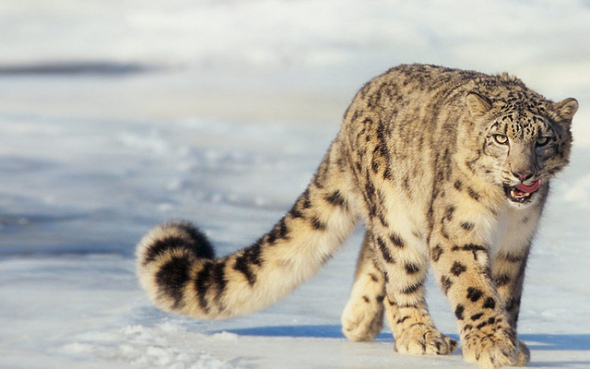
ALL ARMED UNITED STATES SOILDERS ARE AND MUST BE MADE AWARE OF THE FOLLOWING
Military personnel who buy wildlife products overseas and import them back to the U.S. risk violating three levels of laws and regulations: U.S. laws (The Endangered Species Act 1531, 2008; Lacey Act of 1900; Lacey Act Amendments of 1981), local laws of the country in which military are serving (Islamic Republic of Afghanistan Environment Law of 2007; Executive Order 2, 1388, 2009 NEPA), and military regulations (United States Central Command 2006; United States Defense Transportation Regulation 2009; USCENTCOM REG 600-10). They also risk violating international conventions, in particular the Convention on International Trade in Endangered Species of Wild Fauna and Flora (Convention on International Trade in Endangered Species of Wild Fauna and Flora
Soldiers reported skins of wild felids and gray wolf Canis lupus as most commonly observed wildlife products available for sale in Afghanistan. Forty per cent of respondents said they had either purchased or seen other members of the military purchase or use wildlife products. The U.S. military was willing to assist in curtailing supply and demand for wildlife products in order to protect soldiers from unknowingly breaking the law and to conserve wildlife in the countries where they serve.
War can have multiple effects on natural resources, including wildlife (Homer-Dixon et al. 1993; Dudley et al. 2002; McNeeley 2003). In isolated cases, neutral or demilitarized zones with limited human activity may provide a safe haven for wildlife to proliferate (Martin and Szuter 1999; McNeeley 2003. However, modern warfare practices and civil strife associated with war have made recent conflicts highly detrimental to wildlife populations, primarily because effective enforcement of regulations protecting wildlife becomes limited without rule of law (Dudley et al. 2002).
Conflict can also lead to increased direct pressure on wildlife through higher wild meat consumption, increased use of wildlife products to barter for food, arms, ammunition and other goods or services, direct sales of wildlife products, and shooting at animals as target practice.
During civil wars in Rwanda and the Democratic Republic of Congo, hunting of wildlife for meat increased dramatically due to war refugees hunting for their own food and to obtain income by selling the meat in local markets (Plumptre et al. 1997; Renner 2002). The more than 30 years of conflict in Afghanistan has resulted in severe declines in wildlife populations due to the combination of increased availability of firearms, food shortages, and lack of effective law enforcement (Formoli 1995; Zahler 2005). The negative effects of war on natural resources are particularly true in countries, including Afghanistan, where most of the population subsists on locally available resources for their livelihoods (Formoli 1995; Renner 2002; Dudley et al. 2002; Zahler 2010).
More of a concern;
Demand for potentially illicit wildlife products by U.S. military and other personnel in Iraq and Afghanistan is a particular concern, given the strong military presence and important wildlife populations in each country. In June 2009, approximately 135,000 U.S. troops and 120,000 U.S. contractors were in Iraq, and 55,000 U.S. troops and 72,000 U.S. contractors in Afghanistan (Schwartz 2009). Iraq and Afghanistan are at the nexus of the Indomalayan and Paleoarctic biotic realms (Udvardy 1975) with additional influence from the Afrotropical realm (Johnson and Wingard (2010; Zahler 2010).
In combat zones, soldiers may have limited access to areas outside of their assigned base, so they often purchase items at military bazaars, also known as post exchanges, which operate inside their bases. Goods purchased at on-base bazaars in Iraq and Afghanistan are generally less expensive than similar items found in the U.S. (e.g., carpets, hand-crafted-jewelry, antique guns, and fur coats), and can provide a significant income to local people.
Among the local items offered for sale at on-base bazaars are wildlife products. In this paper, ‘‘wildlife products’’ refers to items comprising or made from wild terrestrial vertebrate species including, but not limited to, pelts, coats, hats, other clothing, blankets or rugs made from furs or skins, preserved mammals or birds, antlers, shells, horns, teeth, claws, or other animal trophies, meat from local mammals, birds or reptiles, wildlife pets including wild mammals, birds, and reptiles, ivory or products containing ivory, and medicines derived from wildlife.
The survey then went on that was conducted in 2008 in Fort Drum, New York, USA questioning n average of 2,500 to 3,500 army personal the survey answers are below;
Three of the questions asked out of seven are the most concerning regarding the results that where then obtained by the researchers;
1) Had they whilst on duty in Middle Eastern nations seen wildlife products on display?
2) Had they purchased “any wildlife products”
3) Had they heard of CITES (Convention on International Trade in Endangered Species)
Number three out of the other four questions that are irrelevant we would of thought that the typical American solider had heard of CITES considering America is a large hunting nation with many American and Canadian’s hunting and also traveling overseas to hunt in Africa, and Canada. The results though where somewhat alarming and no many hadn’t heard of CITES hence the reason why there was such vast numbers of them purchasing illegal wildlife skins, rugs/carpets/ meat, ivory, horn and medicine.
The “organisation” asked about CITES because it is the broadest, legally-binding international agreement addressing wildlife trade and many of the countries in which U.S. soldiers serve are signatories to CITES. Respondents were also given the opportunity to provide written comments. The survey took less than 10 min to complete. Soldiers placed completed surveys in a box and then received a small non-monetary thank-you gift. Data from the survey were entered and analyzed in SPSS 16.0.
The aims of the survey where;
“The aims were twofold: to obtain information on the type of wildlife products available to soldiers serving overseas; and to teach military police how to identify items listed under CITES or as protected species in Afghanistan”
The number of respondents can be seen below that took part in the survey;
Part ONE
The survey starts with the “nation they were based in at time of survey” then “the number of respondents” that = the % ALL OF THE RESPONDANTS WERE FROM FORT DRUM U.S.A
1) Afghanistan 209 56.3 %
2) Iraq 160 43.1 %
3) Korea 95 25.6 %
4) Germany 86 23.2 %
5) Kuwait 58 15.6 %
6) Bosnia 27 7.3 %
7) Kosovo 19 5.1 %
8) Japan 16 4.3 %
9) Saudi Arabia 12 3.2 %
10) Honduras 10 2.7 %
11) Other 157 42.3 %
In total for the other many soldiers were based or deployed in more than one country during their service “and” 63 countries in which less than 10 respondents indicated they had been based or deployed
The survey then went on to part TWO
Table 2 the types of items, listed by country, reported being seen for sale in on-base or off-base markets by Fort Drum soldiers = 1,304
The countries they reported seeing for sale in on base or of base markets by Fort Drum Soldiers are named below
Afghanistan, Iraq, Korea, United States, Germany, Kuwait, Kosovo, Thailand, Japan, Bosnia, Australia, countries with less than ten items reported totalled 133 seen for sale in on-base or off-base markets by Fort Drum soldiers.
The total Items “seen” for sale in Part TWO of the survey where, fur and skins, taxidermy, meats and pets, trophies ivory and medicines. Fur was totalled at 307, taxidermy 168, meat 231, pets 222, trophies 224, ivory 112, medicines 40 seen “for sale”
The survey then went on to part THREE
Wildlife items, listed by country, which Fort Drum soldiers reported purchasing while stationed or deployed overseas = 143 purchased – purchased in the following nations below;
Afghanistan, Iraq , Korea Germany, Africa, Japan, United States, Kuwait, Bosnia, Kosovo, Norway, Australia, United Kingdom.
The total items purchased where;
1) Afghanistan – 27 furs/skins, 3 taxidermy, 28 meat, 11 pets, 5 trophies, 6 ivory, 2 medicines
2) Iraq – 5 furs/skins, 10 meat, 1 ivory
3) Korea – 10 furs/skins, 8 meat, 3 pets, 2 ivory
4) Germany – 2 furs/skins, 7 meat
5) Africa – 1 fur/skin, 1 meat
6) Japan – 1 fur/skin, 1 meat
7) United States – 1 fur/skin, 1 meat
8) Kuwait – 1 meat
9) Bosnia – 1 meat
10) Kosovo – 1 ivory
11) Norway – 1 meat
12) Australia – 1 meat
13) England – 1 meat
The MOST CONCERNING WAS - more than 40% of respondents had either themselves purchased or seen other soldiers purchase wildlife products less than 12% had heard of CITES. Of the 220 soldiers surveyed who had served in Afghanistan 12% reported that they had purchased items such as clothing, rugs, comforters, or blankets made from wildlife fur.
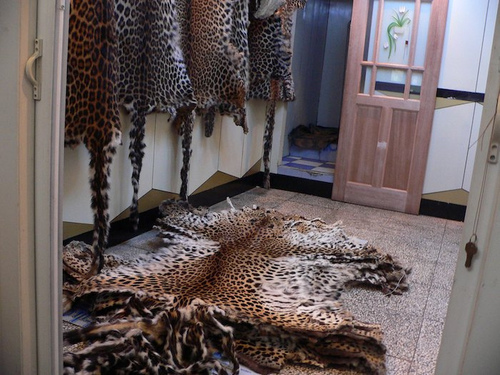
The most popular items purchased where fur and skins and meat – illegally or legally is not known, however what we do know is that many trader where given warnings to cease selling illegal CITES contraband that MP’s and seniors knew was illegal to purchase, many traders on the base had their licences revoked and then removed.
Only 10% of the soldiers at Fort Drum had heard of CITES, with over 40% that had seen other mates purchase and over 44% seen other soldiers seen others purchase wildlife items with just under 29% purchasing themselves.
Cited in 13 Oct 2009), soldiers suggested that APO by-passed the tougher military customs screenings. These soldiers gave descriptions of the products being posted, such as ‘‘lots of sand fox pelts with heads,’’ ‘‘dried lizards and snakes,’’ and others noted that items with ivory were particularly common in Iraq. While recounting these experiences, soldiers noted that they were unaware of laws or regulations prohibiting the sale or transport of certain wildlife items or of the possible detrimental impacts of their actions.
Hundreds of wildlife items were noted in Eggers, Bagram, ISAF and Phoenix military installations in Afghanistan during on-base market surveys. For example, in April 2008, U.S. surveyor’s identified 230 items potentially containing CITES species in one on-base bazaar at Camp Eggers.
The most common species identified by surveyors in the military bazaars included Eurasian wolf Canis lupus, Eurasian lynx Lynx lynx, jackal Canis aureus, red fox Vulpes vulpes, Corsac fox Vulpes corsac, and small felid species including leopard cat Prionailurus bengalensis and wild cat Felis silvestris.
At ISAF Airport, snow leopard pelts, leopard pelts, and Marco Polo sheep Ovis ammon pollii skulls and horns were also identified. Of these, only red fox is neither protected by CITES nor by Afghanistan laws. WCS staff also observed international aid workers and contractors purchasing wildlife products at a popular bazaar in Kabul known as ‘Chicken Street.’ results from these market surveys confirmed similar findings by Mishra and Fitzherbert (2004) in the same bazaar.
However - In 2008, after a series of market surveys and wildlife trade training seminars conducted by ***** staff, the number of prohibited wildlife products witnessed for sale in military bazaars in Afghanistan declined however this is JUST for the USA and no other military units from broader nations which is now of a huge concern to ourselves International Animal Rescue Foundation ©
Once trained by WCS staff, military police began con-fiscating prohibited wildlife items from soldiers departing from Afghanistan. A total of 350 confiscated items was reported from Bagram Air Field and Camp Eggers at the end of August 2008 with at least 50 additional items being confiscated between July and December 2009.
Confiscated items appeared to include parts of leopard cats, Pallas cats Otocolobus manul, black-and-white colobus monkey Colobus guereza (a species not found in Afghanistan), and Blandford’s fox Vulpes cana, all of which are listed under CITES. Military police also confiscated items apparently containing jackal, which is listed as a protected species in Afghanistan.
INTERNATIONAL AWARENESS AND EDUCATION TO ALL MILITRY BASES
http://www.nytimes.com/gwire/2010/03/16/16greenwire-new-pentagon-effort-targets-illicit-wildlife-t-97241.html
Surveys found that unless training sessions and surveys continued on a regular basis or were institutionalized in induction trainings for new military police, vendors would reintroduce items when new military rotations came in and the previous group rotated out. In Afghanistan, ISAF military police rotate every 6 months, while U.S. troops rotate every 9 months.
However, demand still abounds in the military and many products are available off-base in Kabul and other cities around Afghanistan (Manati 2009). WCS staff saw 13 snow leopard pelts and one cheetah pelt (among other potentially illegal items) for sale on Chicken Street, Kabul, in November 2011. In August and September 2009, Bagram Air Field Military Customs seized what was thought to be a wolf pelt, a wolf hat, and a Himalayan lynx coat from soldiers who were leaving for the U.S. Demand for wildlife apparently continues, as reflected in comments from military personnel who attended a Fort Drum training session in June 2010.
The report then went on;
These included ‘‘I packed 5 or 6 coats like this [referring to a spotted cat pelt coat], but [customs] took them all’’ and ‘‘they confiscate some but I hide it really well’’ [referring to turtle carapace and coral], and reports from military police in Afghanistan in July 2010 of a Colonel who had purchased a coat apparently made from Eurasian wolf. Our experience indicates that education and raising awareness works to reduce at least some of the demand, although not eliminate it
We are not just looking at culture here in the Asian world as some people think or even “get rich quick” we are looking at lack of education, awareness, other problem areas, and general purchase coupled with “demand, culture and get rich quick”
This report along with the survey has continued on from the Snow Leopard report and we will continue this environmental report in five “parts” of the main chapter. We now all need to devise a plan and awareness session for all military bases as only the Americans where investigated by te survery.
Thank you
Dr J C Dimeri, V.M.D, B.E.S, Ma, PhD , MEnvSc
info@international-animalrescue-foundation.org.uk
http://www.savetherhino.org/rhino_info/threats_to_rhino/poaching_for_traditional_chinese_medicine
To be continued ……..
Sadly the video above fails to mention the real issue and that’s what we are getting to.. The Tiger will be extinct in 1-2 years not a decade due to massive demand, lack of awareness, lack of education.. Where not here to write book’s or talk about it on social media were here to stop it..
Environmentalism Chapter 7 - Special Report - Snow Leopard
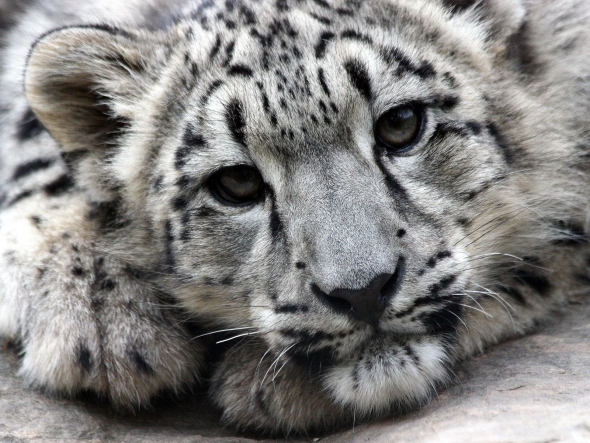
Located deep within the mountainous regions of Eastern Asia there lurks a shy predatory cat that’s so incredibly rare that locating this stunning this stunning magnificent mammal can take some days to even weeks or months in the snowy foot hills of Asia where their numbers are decreasing steadily.
With a population left of around 3,000 to 6,000 within the solitary wild and sadly listed on the International Union for the Conservation of Nature the Snow Leopard is now facing near extinction and we must all now help this species of large cat before the this magnificent mammal vanishes for good.
The highest populations of the Snow Leopard remain in China with roughly 3,000, and with regards to the other nations from Afghanistan, India, Bhutan, Kazakhstan, Kyrgyzstan, Mongolia, Nepal, Pakistan and Tajikistan, and Uzbekistan populations range from one hundred to five hundred of that.
The Snow Leopard Panthera uncia a member of the Lion and Tiger bag cat family was listed on the IUCN list of globally critically endangered species, and since then through to 2008 there has been very few sightings of prides of this relatively shy mammal that didn’t always live in the high tops of the snowy mountains of Asia.
Since 2008 there has been various wildlife and conservation expeditions showcasing this beautiful leopard however with illegal hunting and poaching rife within Asia then all numbered counts of the Panthera uncia are literally just estimated primarily due to them being very solitary mammals and due to the demand of poaching to feed the fur trade with illegally obtained skins and Traditional Medicine Market with counterfeit pharmaceuticals.
There are two subspecies of this “large wild feline” although it is not related to the domestic feline however the main species is Panthera uncial, and not Uncia uncial that live roughly at 4,000 to 6,000 feet in mountainous terrain well above sea level.
Weighing in at roughly thirty to sixty kilograms the Snow Leopard was first described by Schreber in 1775 that’s behaviour is very unique compared to other large Panthera families, only pairing during the breeding season they do not roar like Lions neither. Snow leopards are considered nocturnal, but seem to be most active in the early morning and late afternoon. They den in rocky caverns and crevices well hidden from destructive man that’s pushed contributed to them being pushed further up above sea level due to poaching and their natural habitat desolated from habitual destruction.
When the war in Afghanistan started there was an “estimated” one hundred to two hundred displaced many Snow Leopards killing some hundreds, since the war ended “still to be seen” there has been hardly a sighting, however they do still use the pass between Pakistan and Afghanistan to bed down, mate and create new bundles of fluffy snowy joy.
The snow leopard’s prey include wild sheep (such as Bharal, the blue sheep), wild boar, gazelles, hares, markhor, bobak, tahr, marmots, mice and deer. They stalk their prey and usually spring from a distance of 20 to 50 feet. The prey I have listed above in the regions of which they have been estimated as high in numbers are becoming small in population to due to the medicine market, and because their “natural habitat” is becoming rapidly wiped out due to agriculture, over grazing, and vast massive population increase that leads to vast urbanisation and hunting too of which their forced higher up into the hills to look for prey or they simply perish.
The Snow Leopard has adapted though remarkably well to these conditions that are mainly icy and snowy they discreetly hide within rock caves and crevices thus making it much harder for the poacher to locate them.
Breeding season is usually January-May, with gestation lasting 98-103 days. A female will give birth to one to four young in the spring in a rocky shelter lined with her fur. The young open their eyes at 7-9 days, eat solid food at 2 months and follow their mother on hunts at three months. Cubs remain with the mother through their first winter.
Females give birth in rocky dens lined with their fur. The young follow their mother on hunts at three months and remain with her through their first winter.
Several forces are responsible for the low numbers of snow leopards left in the wild which I have described in brief below. The cats have thick, rosette-speckled fur that makes them the unfortunate target of poachers who sell their pelts in illegal markets in China, Taiwan, and Mongolia.
The furs of the endangered cat command high prices on black markets. During the 1960s, poaching drove populations as low as 1000 individuals. Although numbers of snow leopards have recovered somewhat in recent decades, there remains concern about illegal poaching as numbers of the cat in the wild are believed to be again falling. There is also demand in China for snow leopard bones for use in traditional medicines (Cat Specialist Group, 2002).
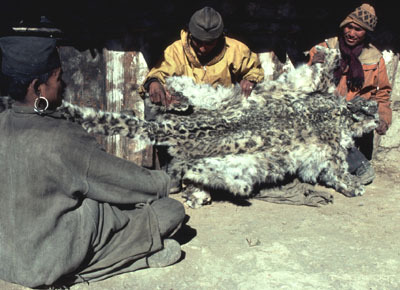
Snow Leopard pelts can fetch between $1,000 to $5,000 with most funds going to armed terrorism fractions.
Snow leopards also face the grim threat of a declining prey supply. Widespread poisoning of marmots and pikas across the Tibetan Plateau coupled with extensive hunting of large ungulates have left the leopard population without the food supply it needs. Some leopards turn to the taking of livestock animals when faced with dwindling wild food sources.
March 2012 a news report quoted “Leopards which live in increasingly fragmented populations in Asia, are protected under Appendix I of the Convention on International Trade in Endangered Species of Wild Fauna and Flora along with those in Africa too, which completely prohibits commercial trade in the animals or their body parts”
“But as is the case with tigers and other species, poaching and illegal trade along with other factors such as habitat loss places enormous pressure on leopards. All nine of the world’s leopard subspecies are listed as “Near Threatened” by the International Union for Conservation of Nature and Natural Resources due to declining populations.
Snow leopards, which are endangered, are a separate species however are not in realty obtaining the same attention as the other remaining leopards in India which we all now need to start creating massive awareness on.
August 2012 an article in the Asian times also stated that rangers and farmers were also placing these beautiful cats in severe endangerment http://prizmablog.com/2012/08/02/rangers-poacher-decimate-snow-leopards-but-kumtor-mine-gets-ngos-attention/ if we cannot trust our rangers to farmers then what chance of life does the Snow Leopard stand.
“When you play this video it sounds more like a cheap porn version of desperate Russian Housewives, however you need to look very carefully at the description. With the aid of our bilingual investigators we are able to locate these sick individuals. Within the their VIDEO they freely advertise on the description below “Tiger Skins” and anything your heart desires. It is a criminal offence under CITES and IUCN law to slaughter, hunt, poach, trade and distribute to selling of TIGER or Leopard skins as they freely advertise on the World Wide Web. Who’s it left down to though to shut these traders down? ourselves that we have been doing now since 2009. Heat breaking to view but watched with anger. CITES and the IUCN should be closing these traders down and making arrests yet they are still here in Russia”..
Their website can be located here - http://www.roskoshmexa.ru/dost/index.htm
Their detail’s that are now in the hands of Law Enforcement - as we can see they have concealed their illegal money making business quite well “to a degree” but not to our investigative team CICU http://www.ip-adress.com/whois/roskoshmexa.ru
YouTube channel here which is somewhat nauseating
http://www.youtube.com/user/roskoshmexa/videosview=0&flow=grid
28th September 2012 confirmed what we already were aware of with regards to the fur trade and this is where my blood boils badly. Celebrities that know damn well how these animals are treated to even wearing the animal skins themselves are completely oblivious to the environmental destruction that they are causing. The infamous blood skin wearers as I call them may not always be “wearing critically endangered animals” however they are aiding to the bloody demand as their “supporters” wish to follow in their footsteps, being mainly children and teenagers to young mothers and fathers.
Lady Gaga, Kate Moss, Giorgio Armani, Kourtney Kardashian, Scott Disick and their son Mason (all wearing fur) Popstar Rihanna, Chloe Green, television personality, shoe designer and daughter of Top Shop owner Sir Phillip Green wears fur without the care in the damn world of what they are causing, and Hyomin, member of South Korean pop group T-ara wearing dead skinned animals that have been electrocuted or gassed or skinned alive as it “makes the fur more subtle.
(how charming and sweet) what about the skinned animals, the caged waiting to be skinned losing control of their bowls as they hear the cries of their caged species tortured, with their lifeless bodies thrown on to a dump of still moving dying carcasses to “keep up with demand”.
A report issued by the International Union for Conservation of Nature stated that India has only 1,700 Leopard species left, out of them species is the Snow Leopard the most sought after as of its fur colour plus price tag that can range from $6,000 to $30,000 a skin. With the Leopard at now near threatened and with more Tiger species then we can most certainly say that they will be the first pushed to extinction within the next year to two years if that.
Statistical analysis is used to estimate the additional levels of “undetected trade” and concludes that around 2294 Leopards were trafficked in India during the period—an average of four animals per week over the 10 year period.
TRAFFIC’s objective analysis has cast new light onto the sheer scale of the illicit trade in Leopard parts in India, which has hitherto been overshadowed by the trade in another of the country’s national icons, the Tiger.
Without an effective strategy to assess and tackle the threats posed by illegal trade, the danger is that Leopard numbers may decline rapidly as happened previously to the Tiger.
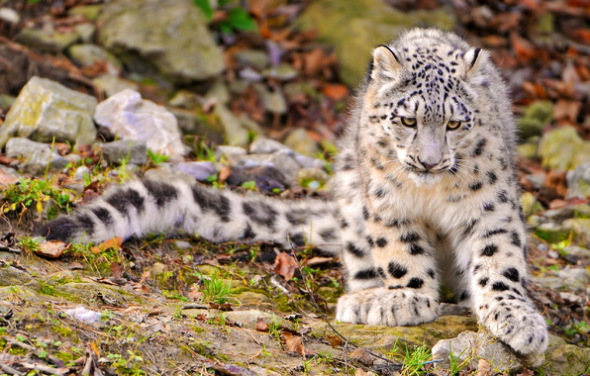
Uttarakhand emerged as a major source of Leopard parts in trade, while Delhi was found to be a major epicentre of the illegal trade, along with adjacent areas of Uttar Pradesh, Himachal Pradesh and Haryana.
Close to 90% of reported Leopard part seizures in India comprised solely of skins, making them the dominant body part found in illegal trade during the 10 year period. Other body parts, particularly bones, are known to be prescribed as substitutes for Tiger parts in traditional Asian medicine including Lions Panthera leo.
It is believed most Leopard parts are smuggled out of India to other countries in Asia, often via the porous border with neighbouring Nepal. Earlier investigations indicated many of the Leopard parts found for sale in northern Myanmar, northern Laos and the ethnic Tibetan regions of China originated from India.
However with such poaching epidemics the snow leopard face’s other threats so as quoted above. Panthera uncia hunts on rich alpine lands, however their prey bharal or blue sheep (Pseudois nayaur) and ibex (Capra sibirica) whose distribution coincides closely with snow leopard range plus the marmot (Marmota spp), pika (Ochotona spp.), hares (Lepus spp.), small rodents, and game birds also feed of these areas lower down the mountainous ridges.
As of natural habitual loss of the Snow Leopards prey’s food consumption being mainly alpines, scrubland, insects and green pastures from “over grazing”, climate change, longer winters, and agriculture then this see’s the prey that the farmers allow up to these areas then move on to fresh pastures, thus displacing the Snow Leopard’s prey = starvation for the adult and cubs..
The IUCN reported “A major threat to the Snow Leopard include prey base depletion, conflict with local people, and lack of conservation capacity, policy and awareness.
Within the Himalayan region (Tibetan Plateau and other southern China, India, Nepal and Bhutan) reduction of natural prey due to competition with livestock, killing of snow leopards in retribution for livestock depredation, lack of trans-boundary cooperation, military activity, and human population growth or poverty.
Within the regions of Northern range (Russia, Mongolia, and Altai and Tien Shan ranges of China) poaching snow leopards for trade in hides or bones, lack of appropriate policy and effective enforcement, lack of institutional capacity and awareness among local people and policy makers, and human population growth or poverty.
Although Snow Leopards are killed in retribution for livestock depredation, they are also killed for commercial purposes, and poaching for illegal trade does represent “a significant threat”. Pelts appear to be the main snow leopard produce in demand, but there is also evidence of demand for live animals for zoos and circuses which is VERY CONCERNING. Other body parts found in trade include bones (used especially in Chinese medicine as a substitute for tiger bone), as well as claws, meat and sexual organs of male cats.
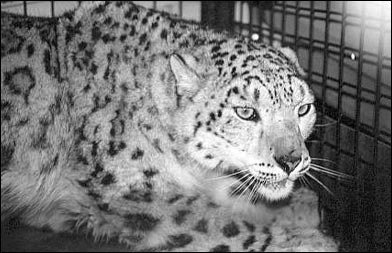
Snow Leopard sized in a Circus Kyrgyzstan in central Asia (Critically Endangered)
Then the real news starts to emerge that we didn’t expect to hear although we knew as other conservationist’s did the United States Army are fueling the demand for endangered species without even realising that they are actually supporting more terrorism through black market sales. This is alarming and extremely concerning that’s now being addressed but to what degree we still don’t know.
A report stated by the Eco-centric wildlife press of which I have placed the extract below I have also included the link for February 27th 2012. The link is worrying as this could now give reason to believe why there are so many “endangered species part products in America and Canada”. The report reads; http://science.time.com/2012/02/27/wildlife-wars-how-u-s-soldiers-unknowingly-support-the-endangered-species-trade/
You’re a U.S. soldier, abroad on your first deployment in Afghanistan. Like any world traveler you want to bring a souvenir back home to the family, something they could never get at home. So you visit the local market on base, where Afghan vendors sell carpets, trinkets and clothing. And you pick out something really cool: a white spotted pelt, perfect for a rug. What could possibly be wrong with that purchase?
As it turns out, quite a lot—at least for endangered species. According to a study from the Wildlife Conservation Society (WCS)—an environmental non-profit that runs the Bronx Zoo in New York—a significant number of U.S. soldiers deployed overseas have purchased products made from wildlife. And in many cases, that wildlife is threatened—like the endangered snow leopard of Central Asia, which could have been killed to make that fine white pelt. Most soldiers aren’t knowingly purchasing products made from endangered species, but they are inadvertently supporting that trade, which can have serious consequences for conservation. “The wildlife trade is highly problematic,” says Heidi Kretser, the coordinator of the WCS North America Programs Livelihood. “There needs to be awareness raising in the military.”
The WCS research began back in 2007 when staff in Afghanistan noticed products made from threatened species being sold on military bases near Kabul. That led to a survey of nearly 400 soldiers at Fort Drum in upstate New York, one of the biggest military bases in the U.S., sending some 80,000 troops a year to Iraq and Afghanistan during the height of the conflicts.
WCS found that more than 40% of the soldiers surveyed had either purchased wildlife products or had seen a fellow service member buy one. They reported seeing wildlife items for sale on or off bases in 40 countries, with the greatest number by far in Afghanistan—a fact that makes sense, given that the Central Asian country is home to a number of endangered species, including the snow leopard. (The sheer number of U.S. troops stationed in Afghanistan played a role in the numbers as well.) “The most popular items were fur coat and rugs,” says Kretser. “And there you’re talking about species that do tend to be threatened.”
The problem isn’t just that U.S. service members are buying wildlife products—it’s that their presence in countries like Afghanistan and Iraq helps create a market for poaching and hunting that might otherwise not exist.
American soldiers—and even more so, the contractors and other international personnel who follow in their wake—can bring developed world purchasing power to bear in a developing world. Suddenly an Afghan who might have no one to sell that snow leopard pelt to—and therefore, no reason to participate in the trade in the first place—suddenly has a ready market with well-off customers. “You can sell a snow leopard pelt for $1000,” says Kretser. “That’s far more than the average Afghan person could make in a year.”
You can’t blame a poor person for trying to earn that kind of money—which is why it falls to the customers more than anyone else to halt the wildlife trade. There are international and military regulations that prohibit the purchase and transport of products made from endangered wildlife, That’s why Krester and the WCS have been working with the Department of Defense’s Legacy Program on educational courses for personnel who are about to be deployed overseas.
The programs underscore the illegality of purchasing endangered wildlife products, as well as the potential health threats that can come with them. (Wildlife—especially primates—are a major source of zoonotic disease, and the international trade can spread those diseases around the world.) The hope is that by educating service members early, they’ll be that much less likely to pick up a wildlife souvenir to take home with them.
This year 2013 Hilary Clinton then announced in a media report that the United States was the “SECOND” LARGEST importers of illegal wildlife products in the world to-date. More concerning is the money earned from the illegal trade of living animals and dead animal parts is roughly equal to that of illegal weapons smuggling and second only to drugs as an illegal business.
Organized crime is thought to be involved in the trade of ivory, coral, snake skins, conch shells, shahtoosh and abalone. Many smugglers who made a living in gold and narcotics now are into wildlife trading. Among the attractions are the light sentences if you get caught and the low probability of getting caught because of the low priority given to wildlife crimes by authorities.
The Internet has been a boon for the exotic animal traders and detriment to threatened species. Among the animals and animal products available on the web are young giraffes for $15,000, a black leopard for $4,000 gorilla for $8,131, baby chimpanzees for $60,000, cotton-top tamarins for $2,500, hawksbill turtle shells for $120, elephant bone sculptures for $18,000, crocodile skin boots, seahorse skeletons, ivory sculptures, and shahtoosh shawls.
Only yesterday 20th January 2013 my investigations team the CICU located our 7th illegal trader selling and distributing “Siberian Tiger skins” and bones, please view the link here - http://myworld.ebay.ca/reptilesmorpho/?_trksid=p4340.l2559 we then located his site here http://www.cougarsdentaxidermy.com/#! On locating more we then found that the Siberian Tiger that is only numbered as 500 maximum in the wild is listed for sale via two rug skins “both sold to two American’s” http://www.cougarsdentaxidermy.com/#!stuff-for-sale/vstc1=rugs-for-sale/productsstackergallery4g5=1
With the illegal animal parts trade being worth or more or less the same as the illegal market in arms and narcotics one can clearly see that it’s not just the Asian poachers to blame here its everyone that wants a piece of gold which is more easier to obtain and to ship thus making big bucks via slaughtering wanted endangered mammals and reptilians to aquatics.
With the American military purchasing endangered and critically endangered parts then the war on terrorism is in reality being “funded to a degree” by themselves without them knowing it.
The Snow leopard is in big danger of extinction within the next year to two years, and should no species recovery be achieved to slow this trade to even cease it that is not just being used for rugs, medicine and cultural beliefs but also mainly now for terrorism then we will view the Snow Leopard gone with many other species of species too.
To be continued …
Dr J C Dimetri V.M.D, B.E.S, Ma, PhD, MEnvSc
One may believe that WWW do not the rescue, well your correct. The WWF is not a rescue that are a “wild animal unit” that specializes in “WILD ANIMALS” they don’t rescue canines, felines, zoo animal’s, the don’t deal with domestic abuse. They are an environmental organisation that works to save “WILD ANIMALS” hence the name World Wildlife Fund. They are well known for their pioneering work to save and protect iconic wildlife like pandas, tigers, whales and rhinos - and have had some great achievements in those areas since we started in 1961.
THE ILLEGAL WILDLIFE TRADE STOPS HERE - PLEASE REPORT ANY CONSERVATION CRIME YOU WITNESS OR LOCATE TO US AS THE ADDRESS BELOW - OR CONTACT YOUR LOCAL INVESTIGATIONS / CUSTOMS UNIT
externalaffairs@international-animalrescue-foundation.org.uk Conservation Investigations Crime Unit C.I.C.U.
WARNING
You are breaking the law if you poach, illegally hunt, sell, distribute, purchase or smuggle any CITES or IUCN prohibited animal contraband. Should we locate/know off/ you breaking this law you will be punished with a maximum prison sentence of up to life imprison -
All information that we obtain from ground to online we share with third parties too.. Don’t be a fool and put the gun down.



